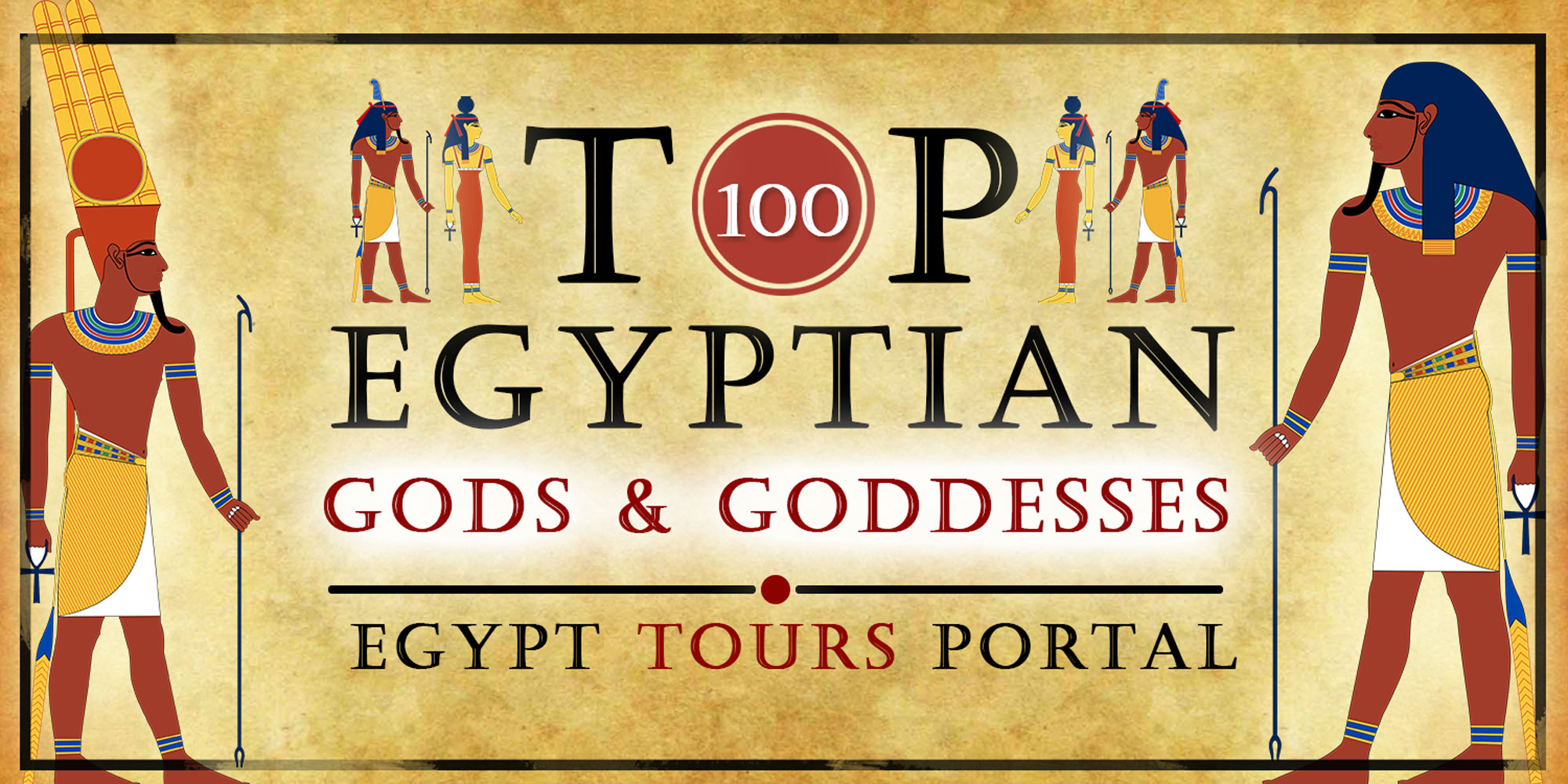
"If History Were Taught in the Form of Stories, It Would Never Be Forgotten" and that’s how Egypt achieved immortality. The ancient Egyptians believed in cause and effect, for every action there is a reaction as stated by Newton's third law, the ancient Egyptians believed that the primary action had to come from a source and that's why the ancient Egyptians believed in the existence of divine creations that can create, reshape and control everything around them even themselves. The ancient Egyptians looked at the stars, the flooding of the Nile River, the sunrise & sunset, and more to seek an explanation that came in the shape of a vast pantheon of gods. Great tales, temples, and valleys were built in honor of these heavenly creatures that they came to know as Ancient Egyptian gods and goddesses who were responsible for all the gifts and pleasures of every single soul in Egypt.
The ancient Egyptian deities were the main component of the Egyptian religion where various abstract, natural, and social concepts & phenomena that were worshipped for endless millennia. Everyone has a role to play which became the foundation for the entire social and religious structure of ancient Egypt. The Egyptians worshipped these forces by making offerings and rituals so everyone can continue to survive under the principle of Maat and under the control of a divine deity. When Egypt was formed as the only independent state in 3100 BC, the Pharaoh took charge of these religious tasks and was seen as a representative of the gods, and managing these temples where all the rituals were done is his duty. The worship of the ancient Egyptian goddesses & gods continued all the way to 30 BC. The Egyptian language for these beings was "Nṯr” which means "God", and its feminine form “Nṯrt” which means "Goddess" as described by a number of highly skilled Egyptologists. Each of the gods held their own cult and had their own district of the universe. The Ancient Egyptian Pharaohs were declared gods after their death and received their funeral ceremonies. The worship of these divine deities was the main reason behind the creation of the most beautiful archaeological wonders on the face of the earth which are found located all over Egypt, especially in Upper Egypt in and Between Luxor and Aswan.
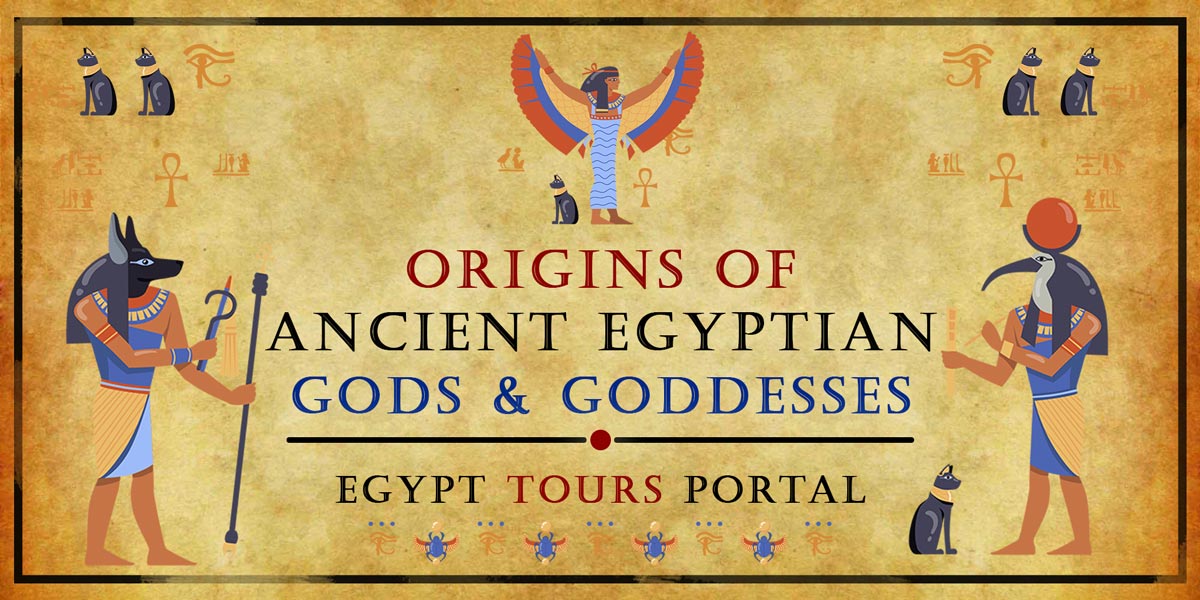
The ancient Egyptians saw that the ancient Egyptian gods and goddesses were celestial beings that can unlock the wonders of the milky way, and perform miracles and great acts of wonder, that's why they decided to honor them by embodying them into a physical form that can be found all over Egypt in Cairo, Alexandria, Luxor, & Aswan. Their entire life focused on the worship of the ancient Egyptian gods and goddesses which became an integral part of their daily lives. Ancient Egypt had over 1500 ancient Egyptian deities that each represented and controlled an aspect of the environment and had a deep & vital role in the immortal quest of every human being.
One key component of their spiritual awareness was the magic or what they called "Heka" which was a divine power that holds everything together in the mortal and divine life. Egypt has enjoyed a massive number of stories and myths that affected their life deeply, most of these Egyptian mythology gods' stories were discovered on the walls of their temples in Luxor or passed down from one generation to another. Ancient Egyptian goddesses & gods provided the people with everything they needed. The deities of ancient Egypt had names, unique powers, special features & transformations, individual personalities, traits, characteristics, styles of clothing, and personal sacred objects which had an impact on the infinite sphere of Egyptian society. The ancient Egyptian gods and goddesses were known to take the physical form of a human and an animal like a phoenix, bull, cat, crocodile, lioness, falcon, and more.
The origin of the ancient Egyptian gods & goddesses as we said date all the way to 3100 BC where it started as prehistorical religious beliefs as seen across a number of artwork. There are a number of theories that the gods were the symbol or marker of a particular town or region plus a number of concepts & elements in their unique culture. After the unification of Egypt and the complete formation of the Egyptian religion, the concept of kingship became the unifying focus of the ancient Egyptian religion where the pharaohs took control of the magical connection between the pharaohs and the heavens. A number of new deities rose from the ashes after their transformation. A number of kings were worshiped after their long death plus intelligent figures like Imhotep were seen as gods and holy figures centuries after they left our mortal realm.
The ancient Egyptian gods & goddesses are a heavenly physical & spiritual flection of the ancient Egyptian imagination & power of creativity, Egypt tours will be the ideal means to fully discover & explore the incredible monuments & attractions that preserve the existence & memory of the ancient Egyptian deities.
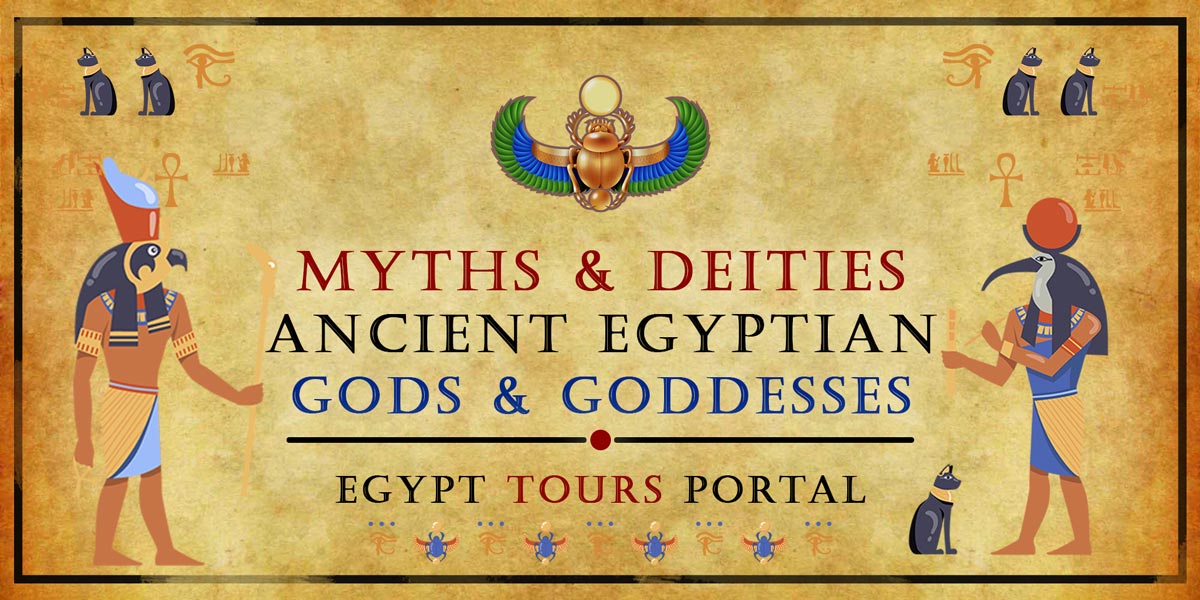
The myths of Egypt are able to showcase their complex characteristics plus their complex and intricate relationships as seen across all their hierarchies, family ties, loose groups, plus the frequent combination of a number of gods into one single entity. The ancient Egyptian gods & goddesses were known for their appearances in a number of artworks where they are seen in the shape of different humans, animals, objects, and combinations of different forms which work to symbolize their essential features. The gods and goddesses of Egypt were seen as powerful forces which can change the course of human lives and influence natural events. The Egyptians interacted with them through the shrines and by offerings in the form of rituals to receive advice or blessings.
The ancient Egyptian deities were seen to hold the highest status in their divine society plus the strongest and most influential deity was known to be the creator of the world like Amun while being connected to the life-giving power of the sun. Based on ancient Egyptian writings, the Egyptians believed in a single divine force that was present in all of their other deities and lay behind all things while fully embracing their polytheistic worship and view of the entire world except during a brief period in the 14th century BC in the era of Atenism.
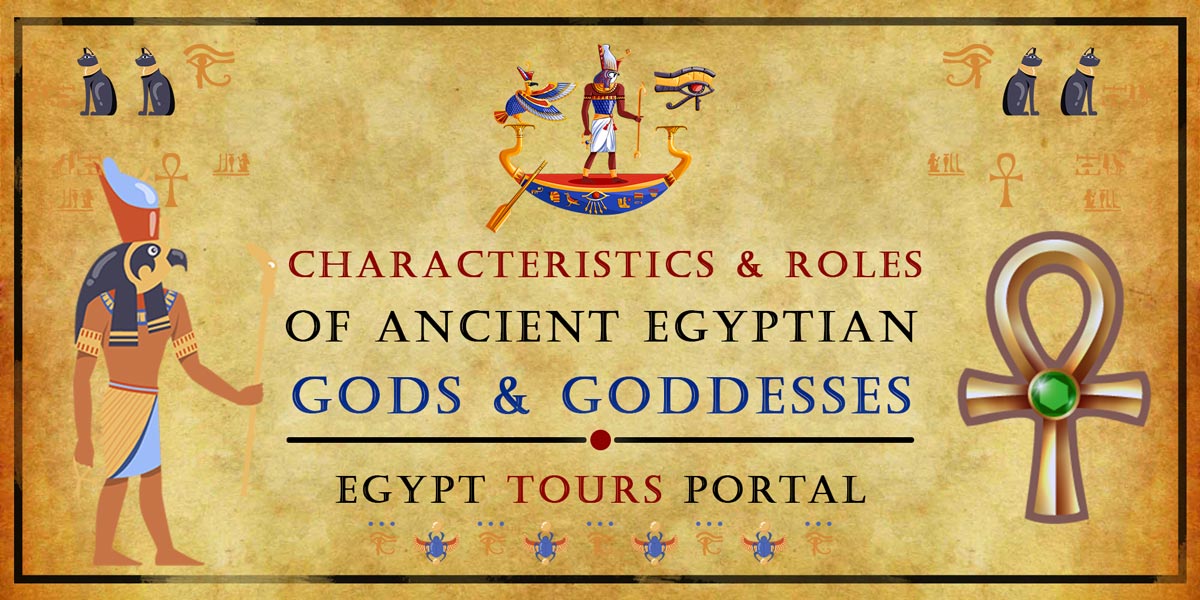
All the information that we are aware of is known by a number of works of art produced by a number of priests and scribes who acted as the highest elite of Egyptian society. Everything about the gods and goddesses acted as literal truth. The roles of the ancient Egyptian gods were fluid plus their characteristics shifted across time. Each one of the Egyptian deities had their own power and our list of gods is able to showcase what each one has represented in great detail. The deities could not reach beyond the boundaries of the domain that they have created and ruled. A form of demons and minor divinities were seen in a number of modern writings we see today. The demons were seen in places like Duat which is the realm of the dead that also held some of the most dangerous and disgusting beings in existence.
The actions of the Egyptian gods were controlled by the principles of Maat which created and totally sustained every part of nature and all living things. Their force and influence came from their power in utilizing Heka also known as magic that was used to form the entire world and even the gods themselves. A number of funerary texts and hymns are able to showcase the actions of gods and their interactions with the ancient Egyptian deities plus they are the source for all the mythological records and stories of these celestial figures. These mythological figures acted much like humans where they can drink, eat, fight, weep, feel emotion, sicken, and even die in some cases. Each deity had its own character and behavior. The battle of the ancient Egyptian gods served as a metaphor for the struggles and conflicts of human life and was used to explain the golden natural phenomena and the outer & inner workings of the universe.
The myths of the deities in ancient Egypt were seen as metaphors for the gods’ actions. All the gods and goddesses were linked to specifics part of existence but sometimes their domains would collide. The gods & goddesses in ancient Egypt lived in many places across the sky and the underworld. The temples acted as the only means of communication between both parties. The spheres of the deity's influence centered around a number of regions and towns. The names and epithets of the ancient Egyptian deities referred to their origins and roles plus every part of their main characteristics. The deities have many names that conveyed their true nature. The ancient Egyptian gods & goddesses were highly divided into female and male which was fundamental to all beings according to their belief. Most of the male gods held high status and were connected to ideas about creation and kingship while female Egyptian goddess was involved with helping humans.
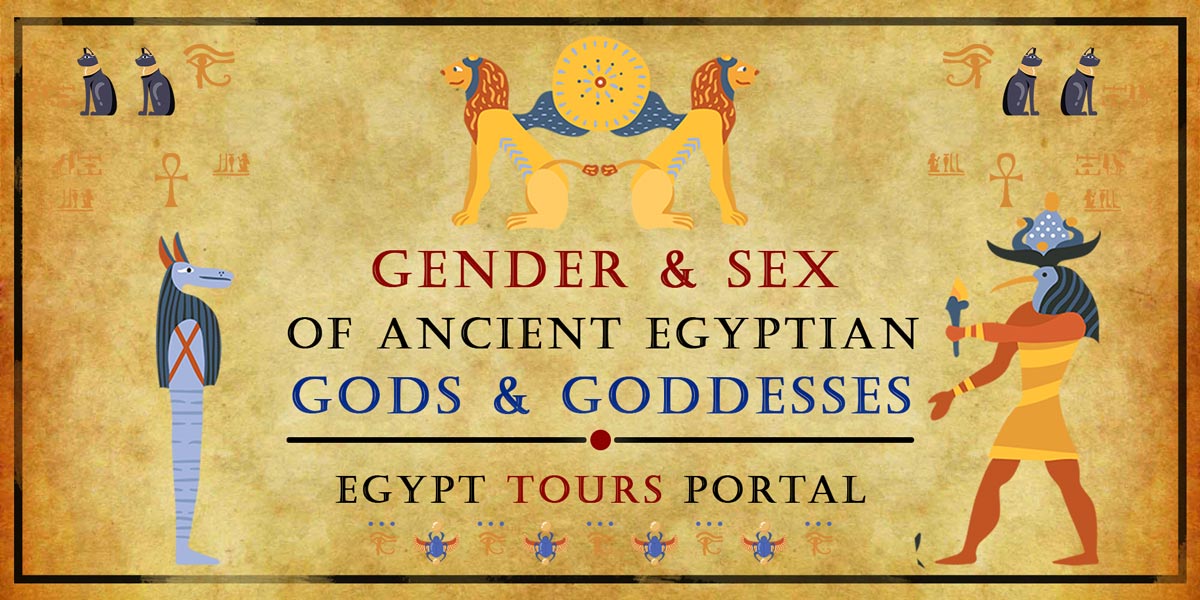
The gender and sex of the Egyptian deities were tied with the concepts of creation and rebirth as each had a role to play. The male gods were creators and protectors like Ra, Amun, Shu, and Horus while the female Egyptian goddesses were responsible for concepts related to nurturing and virility like Hathor and Isis plus also with concepts of protection and even combat like Sekhmet, Nephthys, Wadjet, Nekhbet. The deities of ancient Egypt would often form groups and combinations to become more powerful. The soul and spirit were divided into different parts like the ba and ka. Some divine parts of the deities have their own story which includes the hand of Atum and the Eye of Ra which would transform into a humanoid figure. The deities had the power of transformation as they can take the shape of an animal or object that can better suit their power.
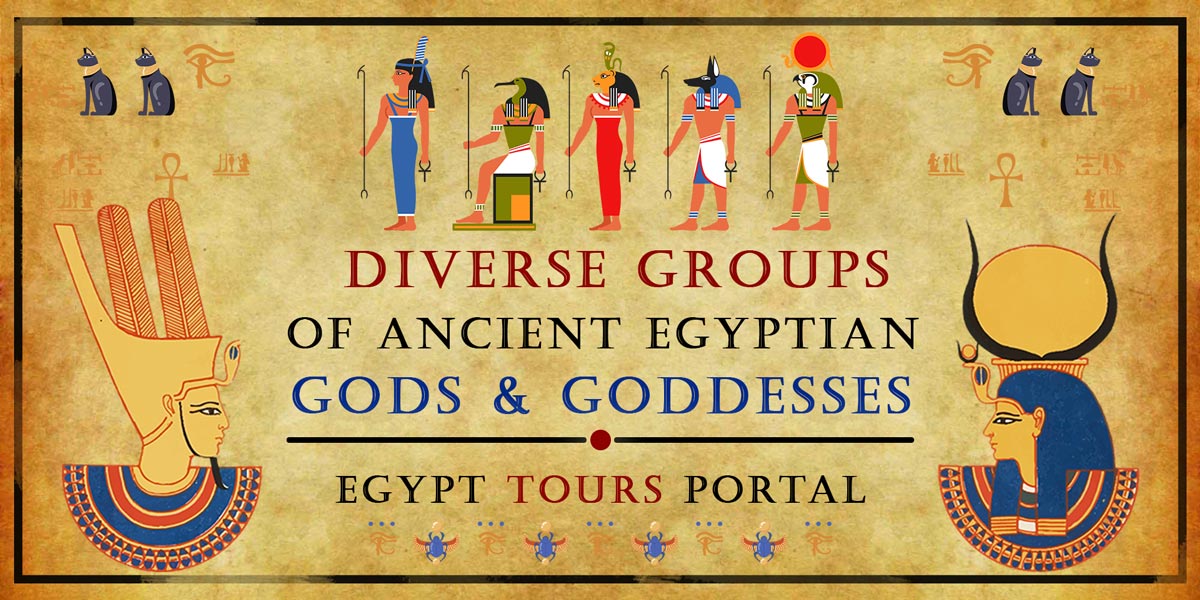
The ancient Egyptian goddesses & gods were not a single unified group, but rather a complex and diverse collection of gods and goddesses with different roles, attributes, and cults. Some deities were worshipped throughout Egypt, while others were more localized to specific regions, cities, or temples. Some deities were part of larger families or groups such as:
The Ennead is a celestial group of nine ancient Egyptian deities who were worshipped in Heliopolis, the city of the sun. The Ennead consists of Atum "The Creator God", Shu "The God of Air", Tefnut "The Goddess of Moisture", Geb "The God of Earth", Nut "The Goddess of the Sky", Osiris "The God of the Underworld and Resurrection", Isis "The Goddess of Magic and Healing", Set "The God of Chaos and Storms", and Nephthys "The Goddess of Mourning and Protection". These gods were believed to be related by blood and marriage, and they played important roles in the creation and maintenance of the world. The Ennead was also associated with other aspects of Egyptian culture, such as kingship, morality, and cosmology.
The Ogdoad was a group of eight ancient Egyptian goddesses & gods who represented the primordial forces of chaos and creation. They were worshipped in the city of Hermopolis, where they were depicted as four pairs of male and female frogs and snakes. The Ogdoad consisted of Nun and Naunet who are the deities of the primordial waters, Amun and Amaunet which are the deities of invisibility and hiddenness; plus Kuk and Kauket who are the deities of darkness and obscurity, and Huh and Hauhet that are the deities of infinity and boundlessness.
The members of the Ogdoad were believed to have existed before the creation of the world when only a dark and formless watery abyss existed. They were the source of the life-giving energy that emerged from the waters of BEN-BEN and gave rise to the sun god Ra. According to one myth, the Ogdoad created a lotus flower that opened to reveal Ra, who then created the other gods and the world. According to another myth, the Ogdoad created an egg "The World’s Egg" that contained Ra, who then hatched and began his work of creation. The Ogdoad was also associated with the underworld, where they guarded the entrance to the Duat, the realm of the dead. They were sometimes seen as aspects of Ra or Osiris, or as protectors of the deceased.
The 42 judges of Maat were ancient Egyptian gods who presided over the judgment of the dead in the Hall of Truth under the command of Osiris the Ruler of the Underworld. They were associated with Maat, the goddess of truth, justice, and order, who was often depicted with an ostrich feather on her head. The feather was used as a symbol of Maat and a measure of the heart of the deceased in the legendary hall of Truth with the blessings of deities. The judgment of the dead was a process in which the soul of the deceased had to prove its innocence before Osiris and his court. The soul had to recite a negative confession, a list of 42 sins that it had not committed in life, corresponding to each of the 42 judges. The 42 is a reference to each of the pieces which Set cut down from the dead body of Osiris and then scattered across the Nile River. Each piece represents a judge who is under the cosmic wisdom of Maat.
The judges had different names and origins, some representing regions of Egypt, others representing aspects of nature or morality. The soul also had to undergo a test of the heart, in which Anubis, the god of mummification and embalming, weighed the heart against the feather of Maat on a scale. If the heart was lighter than the feather, it meant that the soul was pure and truthful and could enter the paradise of the Field of Reeds, a perfect reflection of life on earth. If the heart was heavier than the feather, it meant that the soul was guilty and sinful and would be devoured by Ammit, a monstrous creature with the head of a crocodile, the body of a lion, and the hindquarters of a hippopotamus. The 42 judges of Maat played an important role in ancient Egyptian religion and morality, as they represented the ideals and values that every Egyptian had to follow in order to achieve eternal life. The negative confession was not only a ritual for the afterlife but also a guide for living a righteous life on earth.
The Gate Egyptian deities were a group of ancient Egyptian gods and goddesses who guarded the gates of the underworld. They were associated with the twelve hours of the night and the twelve signs of the zodiac. Each gate had a different name and was protected by three deities: one who faced the east, one who faced the west, and one who faced inward. The names and attributes of these deities varied according to different sources. The Gate deities played an important role in the journey of the deceased through the underworld. They were the key to the knowledge and purity of the soul by asking questions or demanding passwords. If the soul passed the test, it was allowed to proceed to the next gate. If not, it was devoured by Ammit, the Eater of Hearts.
The minor gods acted as true guardians, their image was found across a number of great temples and tombs like Valley of the Kings, Valley of the Queens, and more plus mentioned in great detail across the Book of the Dead, the Book of the Gates, funerary texts that describe the appearance and names of these deities in detail which show the seven gates of the House of Osiris in the underworld and the 21 portals of the House of Osiris in the Field of Reeds.
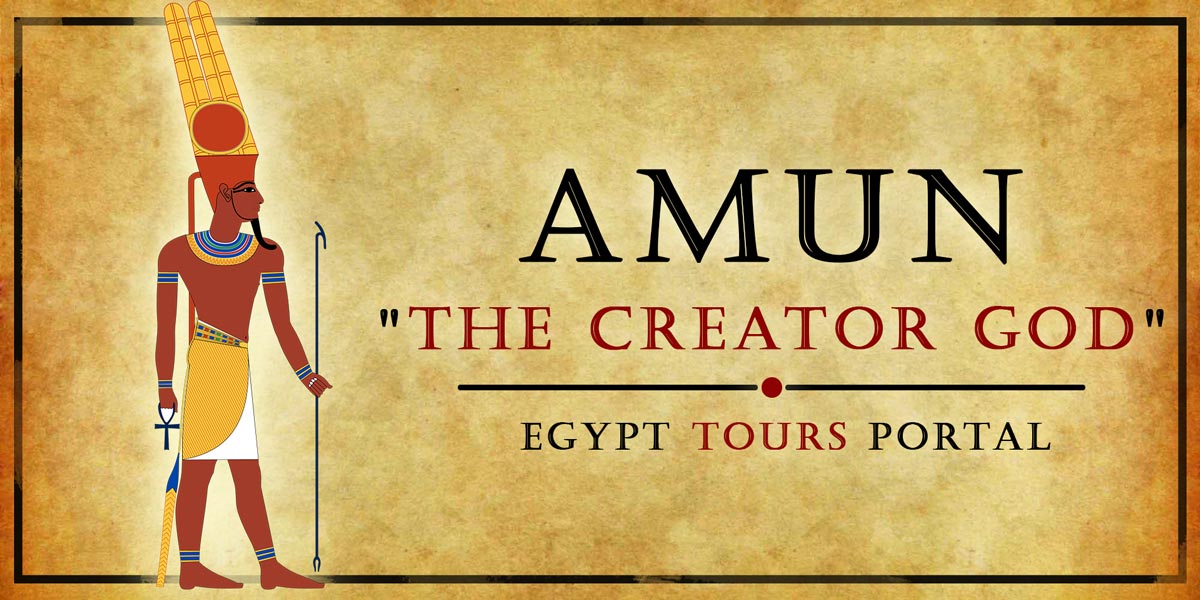
Amun is the god of all gods, the creator of existence, and the supreme leader of gods and humanity in both the world of the living and the dead. He was the patron of the city of Thebes and even when the god Ra rose to Power since the days of the old kingdom of Egypt (2686-2181 BCE), Amun’s position was untouched as he even merged with him to become the supreme god Amun-Ra "The Hidden One" during the 16th to the 13th centuries BC during the new kingdom of Egypt (1570 – 1050 BC) who was worshipped with his wife goddess Mut and son Khonsu the moon god as the Theban triad. The position of the priestess wife of Amun was very powerful to the point where it can rival the position of a pharaoh. He can be seen as a human wearing a double-plumed crown and sometimes depicted as a ram or a goose as shown by his time in the Karnak.
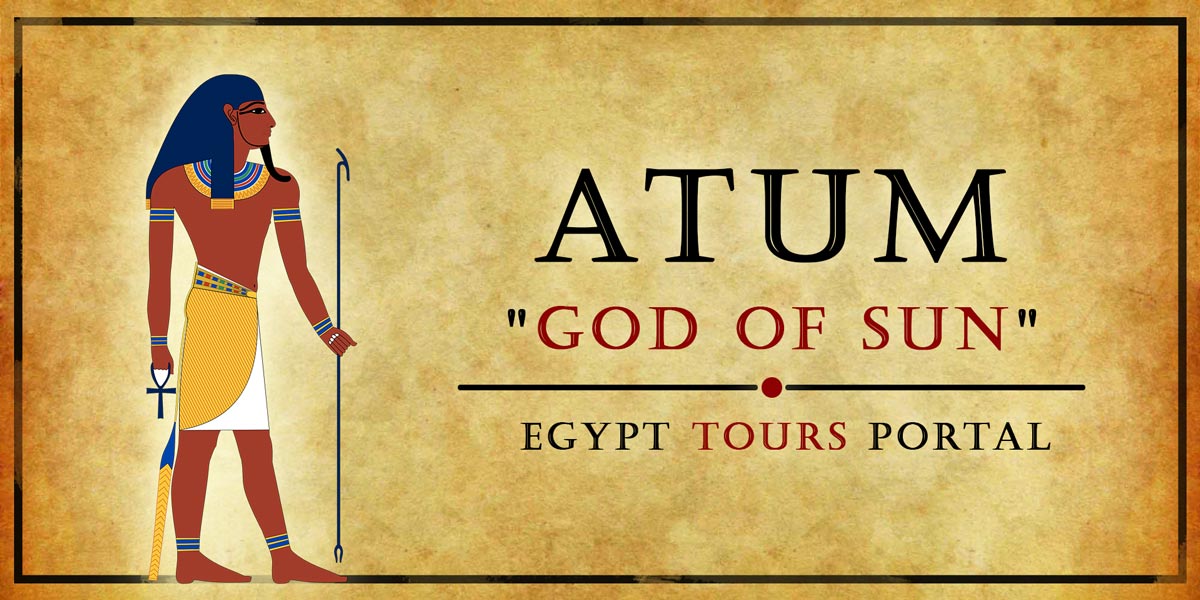
RA "Atum" is the great sun god. He is the personification of this mighty star and everything in Egypt including the pyramids of Giza. Ra was one of the first celestial beings who created the universe, life, and order instead of chaos. Ra was the supreme creator who ruled over the land of both the living and the dead. He is the father of the deities of Shu "The Air God" and the Tefnut "Goddess of Moisture and Rain". He was the one celestial divine being to stand on the primordial mound of chaos and create life BenBen and order and create the universe. He looked like a child in the morning, an adult almost high noon, and an old man in the evening, he wears a crown with a solar disk upon which a sacred asp rested. He was the most powerful god who would protect other gods and souls from the primordial serpent "Apophis" as shown by his time in the Karnak.
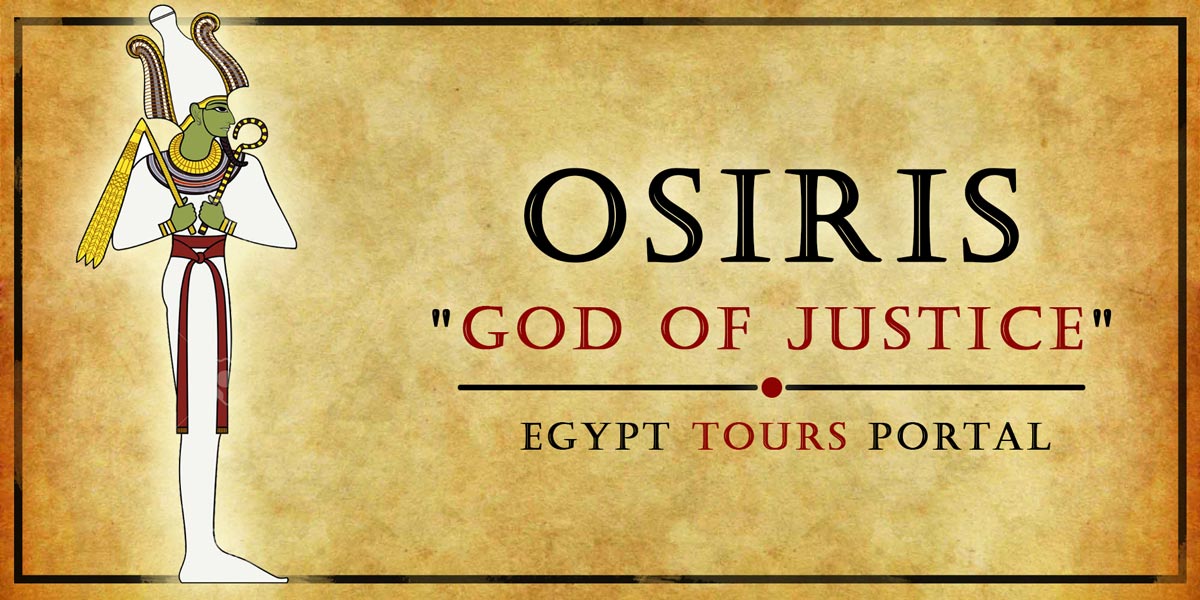
Osiris is one of the early Egyptian gods of creation and the five original gods, the great-grandson of Amun, and the ruler of the Underworld. He was the god of fertility who grow in fame, popularity, and influence because of the Osiris Myth in which he is killed by his evil brother Set "God of the Desert" then brought back to life by his sister-wife Isis "Goddess of Motherhood and Healing" and Horus the Elder, then descends to the underworld and became a lord and judge of the dead. In the afterlife, he is the main judge in the hall of Truth who weighs the souls of the dead against a white feather of the goddess Maat "Goddess of Truth and Justice". He is depicted as a mummy with usually green or black skin, two ostrich feathers, holding a crook and flail of kingship, and a beard. Many ancient Egyptians chose to be buried near his cult in Abydos.
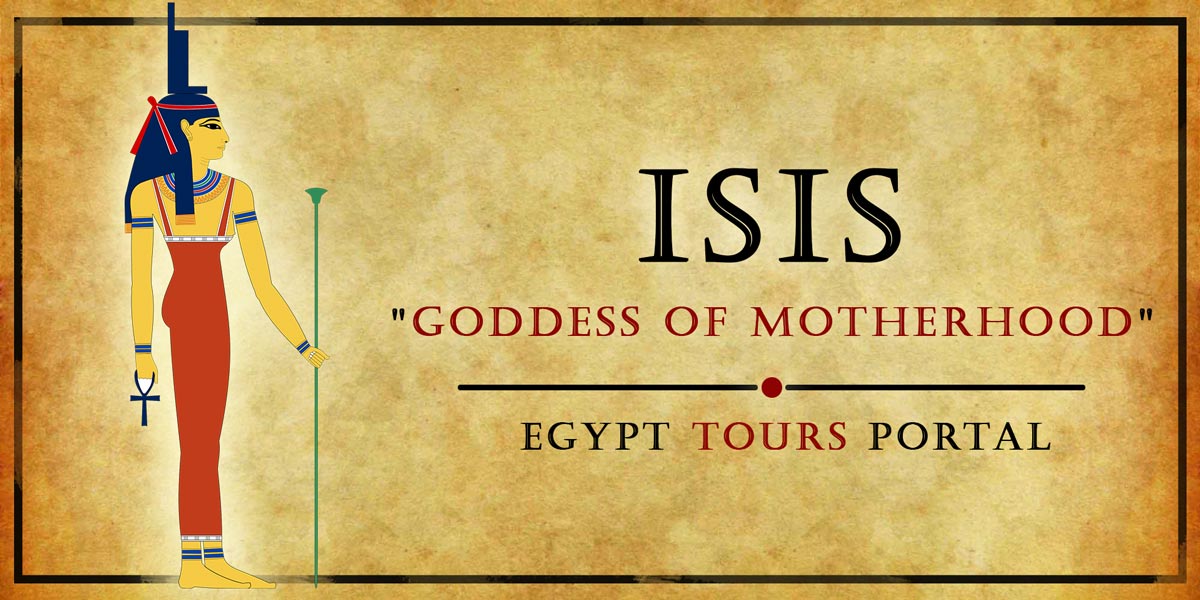
Isis is also known as Mut-Netier "Mother of the Gods" and West- Kekau "The Great Magic" has become a super deity that had a connection with virtually every aspect of humanity in time, life, and death. She was the wife of Osiris the ruler of the underworld and the mother of Hours the falcon sky god. She was known as Eset which means "Goddess of the Throne". She became the most powerful and famous Egyptian mythology goddess due to the Osiris myth and her true care for other ancient Egyptian gods and humans as she appeared to them after death to guide them to paradise. She was depicted with a tail and a throne on her head and sometimes breastfeeding infant Horus. She had a massive cult that was extremely powerful that was worshiped in every part of the world from Britain through Europe in Greece and Rome to Asia.
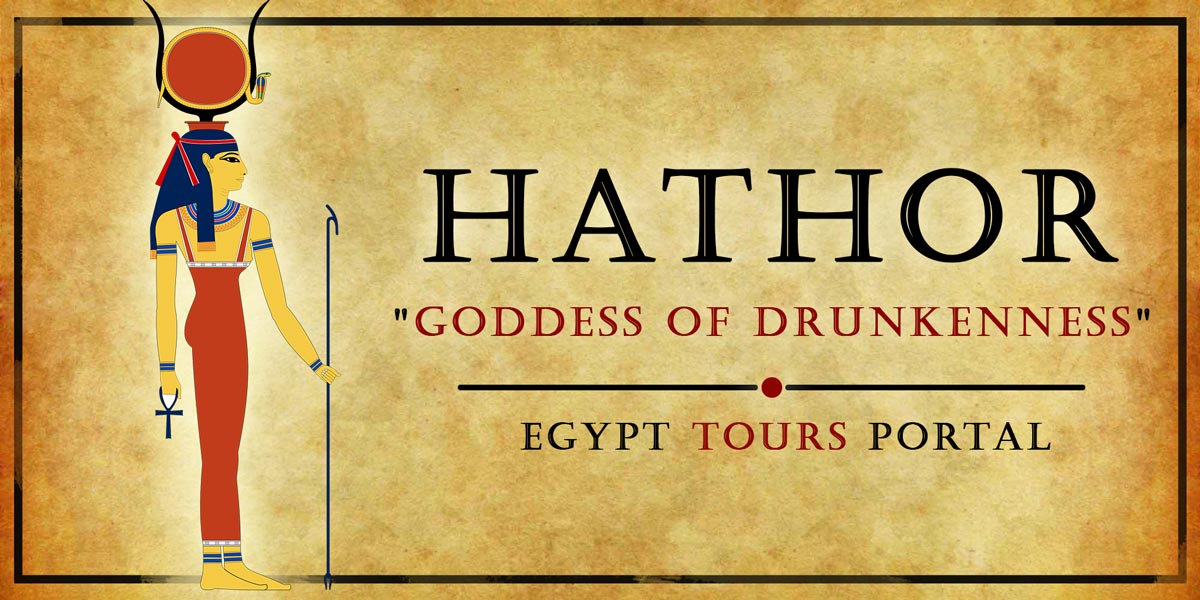
Hathor is one of the most famous and important ancient deities in Egyptian mythology known as the lady of drunkenness and lady of the sycamore. She was the goddess of drunkenness, joy, music, dancing, celebration, women, childbirth, and love. She was seen as a celestial mother goddess that was connected to the sacred reflection of the Milky Way as the Nile River. She is also associated with gratitude and being thankful. In her earliest form, she was known as Sekhment the goddess of destruction and vengeance who would execute punishment on behave of Ra on humanity because of their sins. Ra offered her a vat of beer dyed red at Dendera which she drank and fell asleep and woke up as Hathor. She is the daughter of Ra, who defends paradise from Apep aboard the sun barge of Ra, She also helps guide the souls in the afterlife to Paradise. She lives in sycamore trees so she became known as "The Lady of the Sycamore". She is depicted as a woman with a cow’s head or simply a cow.
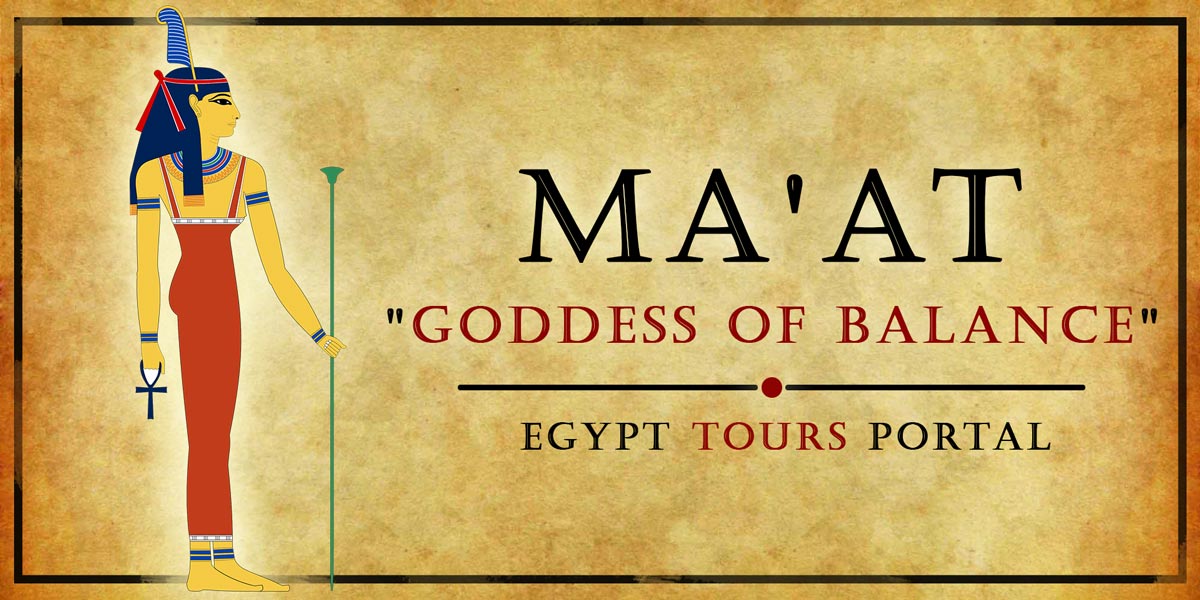
Ma'at is the goddess of justice, truth, and most importantly harmony. She is considered to be one of the most important deities as the concept of balance & harmony and was a central focus to the culture and every aspect of the ancient Egyptian and an important component of all of time and space within existence. She put the stars in the sky and regulated all four seasons. She also took part in the afterlife as she transforms into the feather of truth that weighed against the hearts to make the right judgment to enter paradise "The Fields of Reeds" or fade into the void by Ammut. The word Maat become known as "That Which Is Straight" and throughout the entire history of the ancient Egyptian civilization, every aspect or any action has been passed on the principles of Maa’t. She was presented as a woman wearing an ostrich plume and sitting on her heels.

The legendary deity of the sky, the son of Osiris the ruler of the underworld, and Isis the goddess of motherhood and healing Horus is an avian god who is directly connected to the sky, the sun, and the divine power of the heavens. He is very famous and well-known because of his relation to the kings of ancient Egypt since the First Dynasty (c. 3150-2890 BCE) as he’s a symbol of victory and order and all the kings believed that they were the incarnation of Horus in life and his father Osiris in death because of the Osiris Myth which he challenges and defeats his evil uncle Set to avenge his father and restore order and peace to Egypt. His symbol is the Hawk and the famous Eye of Horus the Wadjet eye which he sacrificed to save his father. Many confuse him with Hours the ELDER one of the early gods of creation. He takes the shape of a giant hawk or a falcon and usually features as a man with the head of a Hawk. The Four Sons of Horus Hapy, Imset, Duamutef, and Qebehsenuef were responsible for the dead in the four canopic jars placed in the tomb where each had his own cardinal point to protect the internal organ stored inside the jar.
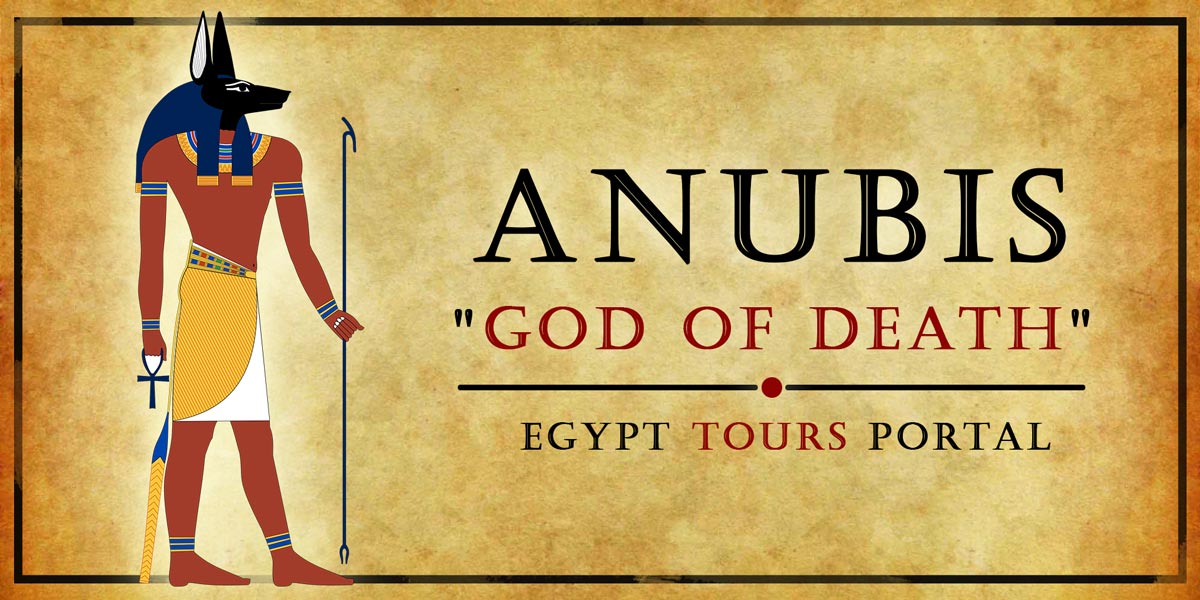
One of the most recognized ancient Egyptian gods is Anubis who is the god of the dead, mummification, tombs, the afterlife, embalming, cemeteries, the Underworld, and judgment. He is considered to be one of the most renowned, mentioned, and depicted gods of Egyptians. He is the son of Osiris and Nephthys. He is known by many names and had many roles; he was an embalmer, protector of tombs, guide of souls, and the weigher of hearts and guardian of the scales, "First of the Westerners", "He Who is Upon his Sacred Mountain", "Lord of the Sacred Land", "The Dog who Swallows Millions", "Ruler of the Nine Bow", "He Who is in the Place of Embalming", "Master of Secrets", and "Foremost of the Divine Booth". He is known to be the original god of the dead, who determined if a soul would be allowed to enter the afterlife and guided the souls of the dead to the hall of Truth in the underworld to take part in the ritual of weighing the heart to the feather of Ma'at in the afterlife to determine their fate. He’s depicted as a man with the head of a jackal carrying a staff featured on temples and tombs all over Egypt.
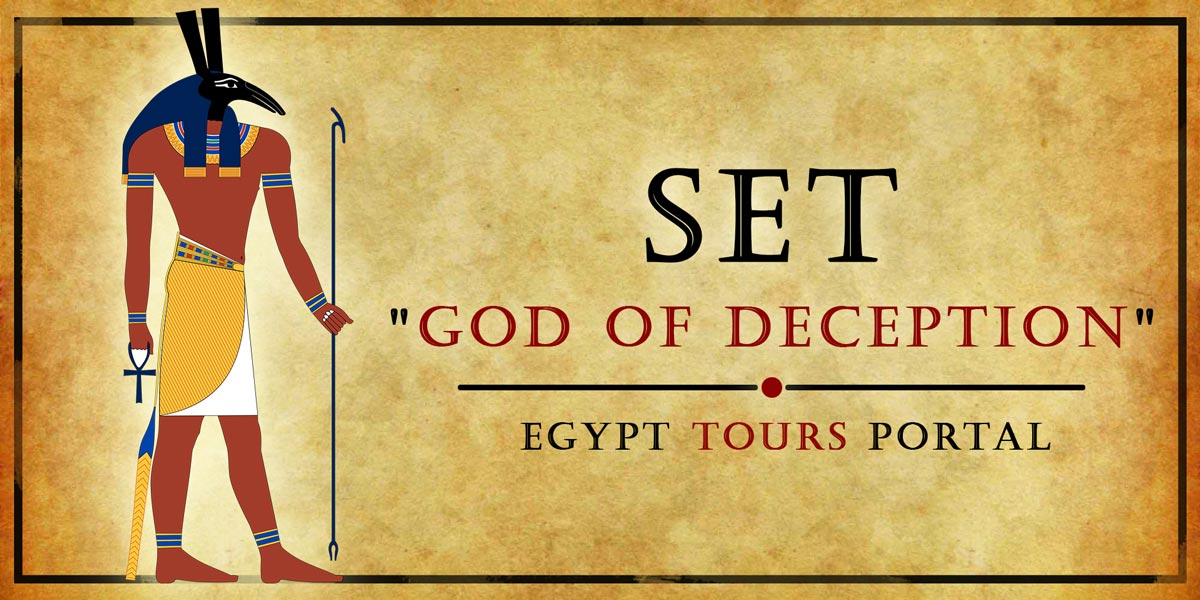
Set was the God of chaos, storms, pestilence, and war, plus was translated as the Destroyer & the Instigator of Confusion. He is considered a symbol of evil for killing his brother Osiris the ruler of Egypt who then became the ruler of the underworld and brought a new age of darkness to Egypt. Set was initially a hero-god who ran away and even killed the serpent Apep (Apophis) from the sun ship barge of the Ra sun god. He was seen as a necessary evil and a balance to the good, fertility, and vitality of both Osiris and Horus. He is seen as the first murderer in existence as he killed his own brother Osiris to usurp the golden throne of Egypt. He is a desert god who brought devilish winds to the Nile River in order to steal the throne and take control. For eight years, he battled his nephew the sky god Hours in the place which became known as the Edfu Temple, and in the end, Horus won and was declared king of Egypt. He is depicted as a red beast like a fox with cloven hooves and a forked tail that spreads catastrophes like storms, tsunamis, volcanoes, and any kind of disaster.

Nephthys is a funerary Egyptian goddess, one of the primal first five gods of Nut and Geb, the twin of Isis, the wife of Set, and the mother of Anubis from Osiris. She is considered to be a dark goddess opposite to the light of her sister Isis the goddess of healing and motherhood. Her name means "Mistress of the Temple Enclosure" or "Mistress of the House" and is depicted as a woman with a house on her head. She is known to be a friend of the dead as she cares for the souls in the afterlife and she guided professional mourners at funerals, who would encourage the open expression of grief through melodies known as the "Kites of Nephthys". She was seen as a dark deity opposite the light of her sister Isis. She played a key part in the Osiris Myth as she loved Osiris, she transformed herself into the form of Isis to seduce him and that’s how Anubis came to be. She betrayed the location of Osiris's corpse to Set but later on, helped Isis revive his soul from the underworld.

Nut was the primordial sky Egyptian goddess who was the wife of the Geb the god of Earth and the mother of Osiris, Isis, Set, and Nephthys. She was created by Shu and Tefnut the offspring of Atum creates the world and when Atum reunited with them, he shed tears of joy which created humanity. Shu and Tefnut give birth to Geb (Earth) and Nut (Sky) and they, in turn, fell in love and had the four original gods despite Amun's refusal who stated that Nut could not give birth on any day of the year so Thoth the Egyptian god of wisdom was able to win five days with a gamble with the moon god thus providing five days to give birth to five children. Each limb represented a cardinal point when her body stretched over the earth. She was often depicted swallowing the sun in the evening and giving birth to the sun at night.
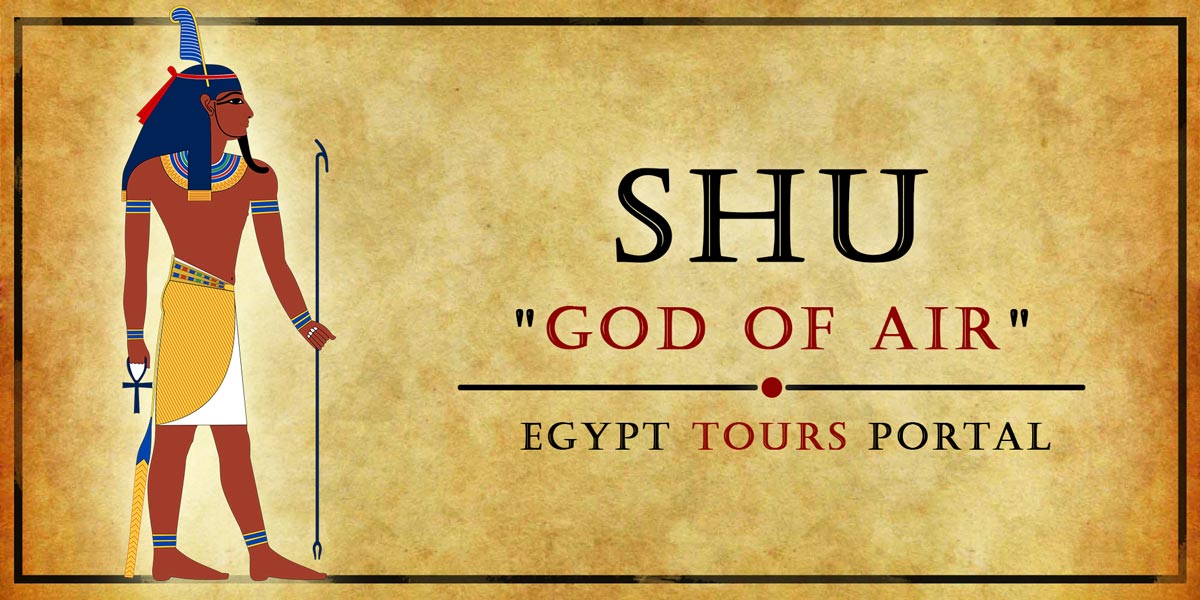
Shu is a primordial god of air whose name means "Emptiness". He was one of the first two gods ever created by Atum with his sister-wife Tefnut. Shu was the god of the air, sunlight, god of the upper atmosphere above the earth, and dry air and his wife was the goddess of moisture. He was depicted as a man wearing a headdress in the form of a plume, which is also the hieroglyph for his name. His job was to separate the sky from the earth. When he and Tefnut returned to Ra after a long time, he cried tears of joy which led to the creation of humanity. Shu and Tefnut gave birth to Geb and Nut who gave birth to the rest of the ancient Egyptian gods. The mist was known as "Lakes of Shu" and the clouds as "Bones of Shu" plus he was also associated with brightness and light.
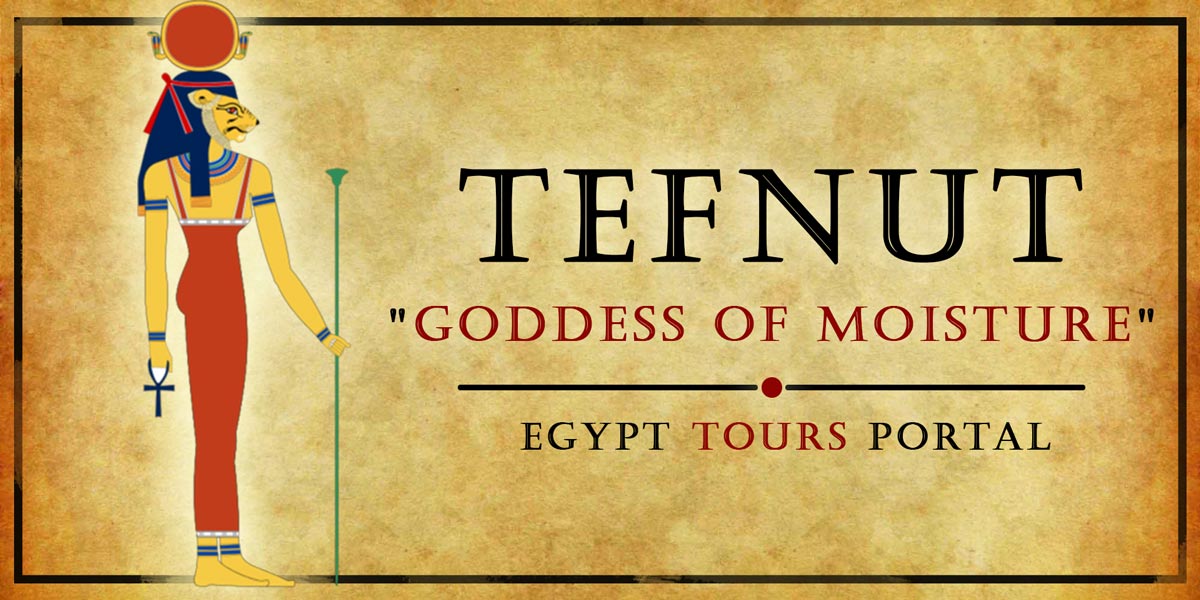
Tefnut was the sister-wife of Shu, daughter of Atum (Ra), the goddess of moisture, and corrosive air, plus was depicted either as a lioness or a woman with a lioness’s head. She was the mother of Nut and Geb. She and her husband were the first gods created by Atum. She is the goddess of the atmosphere of the lower world, the earth.

Bastet is a beautiful & enchanting goddess of cats, a guardian from evil & misfortune, fertility, and the daughter of Ra who was loved by all who distributed her talismans and amulets to all her subjects & worshippers. She was worshipped as early as the Second Dynasty (2890 BCE) and so revered as in 525 BCE the Persians used the Egyptian devotion to Bastet against them when they painted images of Bastet on their shield and drove cats in front of their armies and resulting, the Egyptians lost the battle of Pelusium instead of offending their gods. Bastet and Sekhmet were known to be two aspects of the same Egyptian goddess, as Sekhmet represented the powerful warrior and guardian aspect while Bastet was depicted as a cat which represented a gentler aspect and more forgiving. She was depicted as a cat or a woman with a cat’s head. Her myth was used to create the DC character "Catwoman".

Thoth was the god of wisdom, knowledge, and truth who was credited as the inventor of writing and the record-keeper of the gods. He was one of the most important and famous deities in the Egyptian pantheon who was worshipped from the Predynastic Period (6000-3150 BCE) all the way to the Ptolemaic Dynasty (323-30 BCE). He invented writing and was the record-keeper of the gods plus he became known by many titles as "Lord of Time" and "Reckoner of Years" as he recorded the passing of time through his deep knowledge of the magical effect of words and had the power to give Pharaohs and kings a longer reign thus maintaining his order across the earth. He is beloved among humanity for providing people with the blessed gifts of the written words. He is also the patron of libraries and scribes plus he was able to give Nut five days of moonlight so she can be able to give birth to the original five gods without disobeying Amun. He is also known to be a benefactor of humanity as he gave them the gift of the written word. Along with Osiris, He stands to keep records in the Hall of Truth during the Weighing of the heart. His consort is Seshat who is depicted as a man with the head of an ibis or a baboon holding a writing implement and his wife or daughter was Seshat who was his female counterpart and the goddess of libraries and books.
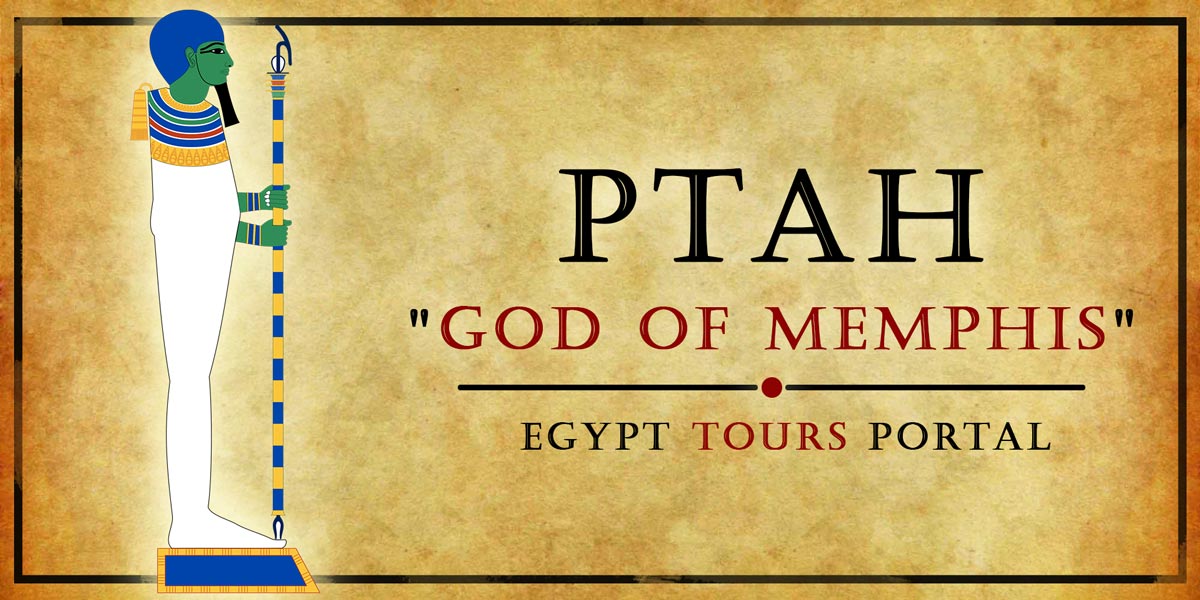
The glorious god Ptah is the ruler of the city of Memphis, lord of truth, creator of the world, and one of the most ancient Egyptian deities since the first dynastic period (3150-2613 BC) but many believe that Ptah is actually from the Predynastic Period (6000-3150 BCE), who appeared under the name "Ptah-Nun" or "Ptah-Naunet". Ptah is the main patron god of craftsmen, sculptors, builders, plus artists of all kinds. Ptah deity is one of the oldest gods in Egyptian mythology; he is often confused with the sun Egyptian god Ra as the creator of the universe as there are different stories showing him standing on the primordial mound of the ben-ben at the time of the creation of the world where he used to be an early fertility god. He is seen as a mummified man who wears a skull cap and holds the Was scepter combined with the Ankh and the Djed forming the scepter of authority. The name of Egypt was derived from the Greek word Aigyptos which corresponds to the word Hat-Ka-Ptah which means "Temple of the Soul of Ptah" located in Memphis city. Ptah was known by many names as Ptah-Nun, Ptah-Naunet, Ptah-Hotep, and Ptah-Sokar-Osiris.
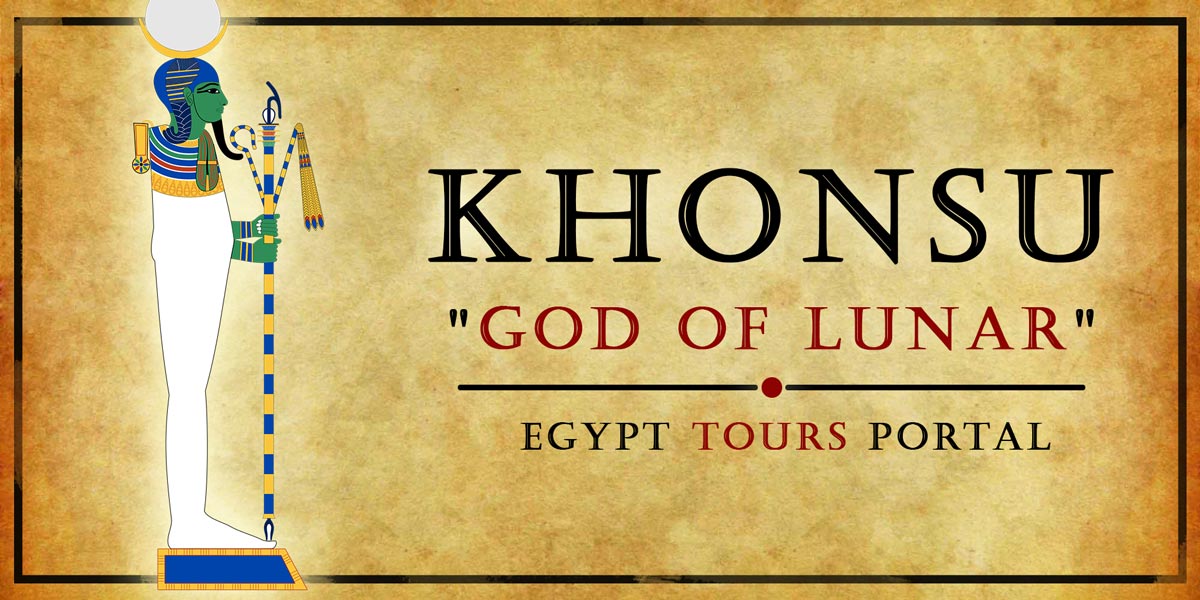
Khonsu (Chonsu, Kons, Khensu, or Chons) is the God of the moon and vengeance, his name means the Traveler plus he had the titles "Pathfinder" and "Embracer" and "Defender". He is shown as a mummy holding a crook and a flail with a moon disc on his head and uraeus. He played a great role in the creation of new life in the image of living creatures. Across the walls of his temple at the Karnak is the creation myth where Khonsu is depicted as the "Greatest God of the Great Gods" and as the grand snake who fertilizes the Cosmic Egg in the creation of the world. He was a part of the Theban triad with his father Amun and Mother Mut. He was very popular, revered, and worshiped as one of the greatest gods especially during the days of the new kingdom (1570-1050 BC) because of his miraculous abilities like the instant healing of the sick. His story is also used for Marvel’s superhero "Moon Knight".
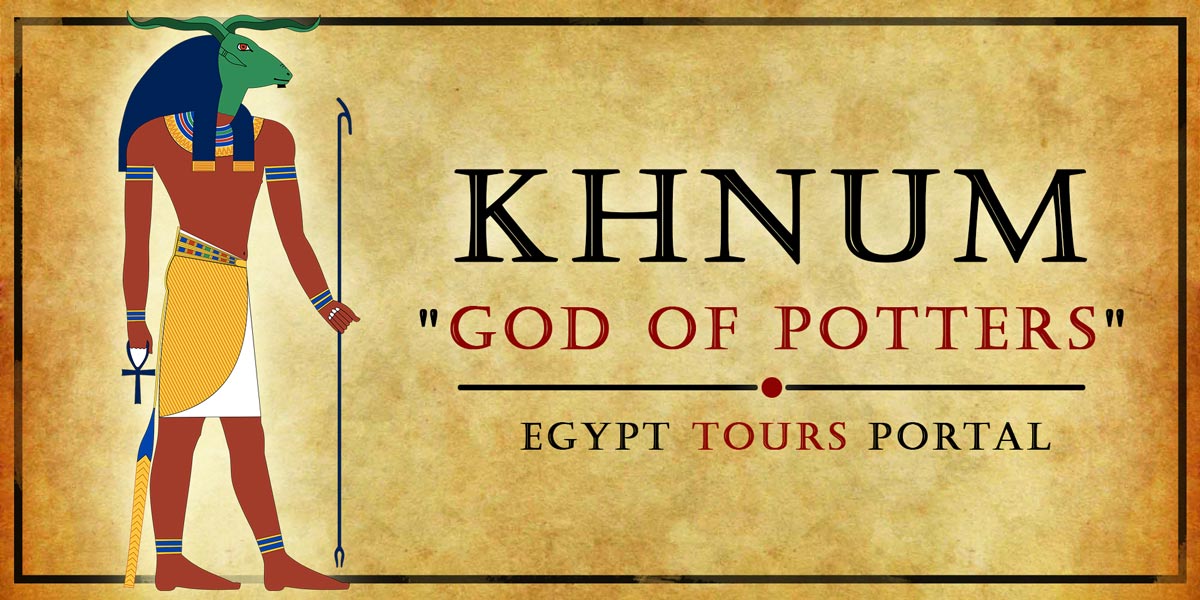
Khnum is the original patron god of potters and every single artist & craftsman who works in ceramic & pottery, and he is also considered the main source of the Nile. He originated from the Nubia in Upper Egypt where he grow in power and fame. He is one of the oldest gods of Egypt in history and Egyptian mythology, plus was known as the god guardian of the source of the Nile. He gained the title "Divine Potter" and "Lord of Created Things from Himself". He was the guardian patron deity of the Island Elephantine. He was responsible for the creation of humans from the clay of the Nile River, then, he held the clay statues towards them to Ra "The Sun God", to give them life then the souls of humans were placed in the womb to then breathe and exist on earth. He is depicted as the ram-headed god who represents fertility and virility. Khnum was referred to as the "Father of the Fathers" and the Egyptian goddess Neith as the "Mother of the Mothers" at the temple of Esna.

Hapi is the prime Egyptian god of fertility and Nile silt is associated with the inundation which was the main source of the Nile that the ancient Egyptian farmers relied on for growing their crops. He is celebrated as a great god who became "Lord of the River Bringing Vegetation" and "Lord of the Fish and Birds of the Marshes". The cult of Hapi was located at the First Cataract of the island Elephantine. Hapi is shown depicted as a man with a large belly and breasts signifying success and fertility who personified the Nile River at the time of the flood.

Sobek is the Crocodile God, the lord of wetlands and marshes, and unexpected death with a connection with medicine and surgery. He is a very famous god in Egyptian mythology, especially in the old kingdom, who is associated with procreation, fertility, medicine, and the Nile which was considered to be the sweat of Sobek. He is dedicated as a man with a crocodile’s head and his cult was known to have live crocodiles. He lived on a mythical mountain at the horizon where he ruled with absolute power and was linked with Ra to form what is known to be Sobek-Ra. He had a great connection with the Nile as it was considered to be his sweat.

Bes is a famous Dwarf god that symbolizes childbirth, fertility, and humor. He is the protector & guardian against evil spirits, the protector of women, and children, the common man, the guardian against evil, and the warrior of divine order, balance, and justice. He is known to be as more than a divine spirit as he was depicted across many everyday items such as mirrors, furniture, knife handles, and more. His consort is the hippopotamus Egyptian goddess Taweret of fertility and childbirth. Bes is depicted s a bearded dwarf with large ears, a lion-like mane, and a pug nose. His amulets and sculptures were considered a source of fun and good luck.
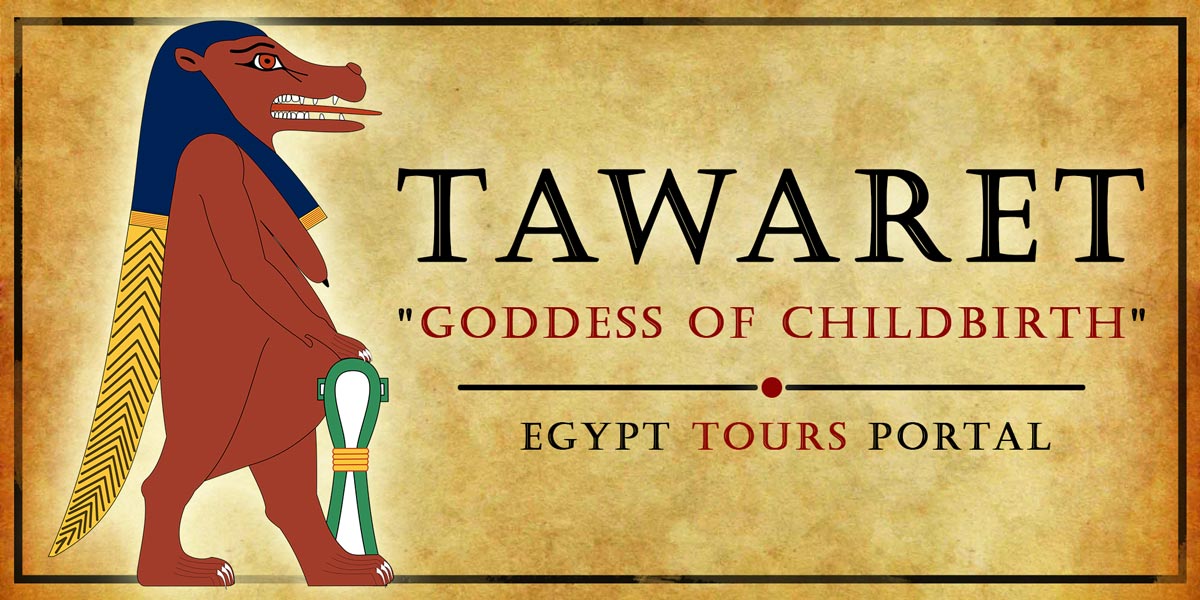
The Great Goddess of the hippopotamus "Tawaret" stands as a symbol of childbirth and fertility. She was renowned across the history of ancient Egypt as the protector of children and vital aid to women during their birth and pregnancy. The female hippo is very protective of her children while the male hippo is very dangerous and aggressive and can be seen as associated with Set. She can be seen on household items such as furniture, pots, cosmetic cases, spoons, and more. She is known to be one of the followers of the sky Falcon god of protection & victory "Horus" as she is very content with the goddess of beauty "Hathor". She is the consort of the Egyptian god Bes of entertainment and humor.
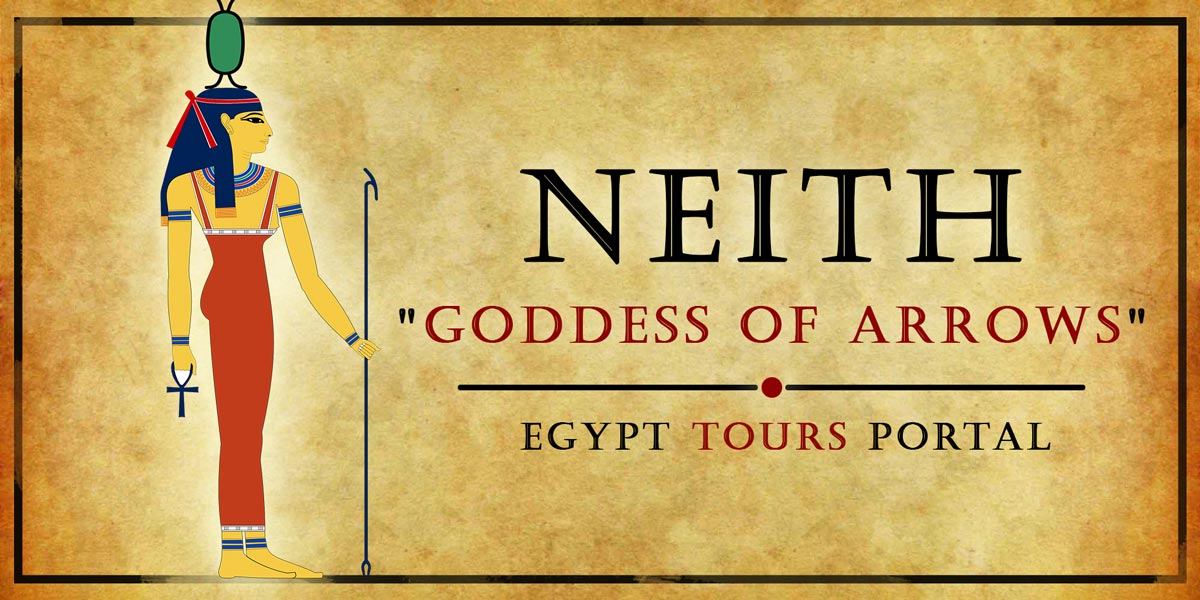
The goddess Neith is one of the oldest ancient Egyptian goddesses represented in Lower Egypt as she was worshipped there in the predynastic period (6000 – 3150 BC) until the end of the Ptolemaic dynasty (323 – 30 BC). She is depicted as a war, funerary, mother, warrior, and creator goddess plus she was the patron of the city of Sais in the Nile Delta. She is dedicated and seen with a bow and arrows which explains why she gained the name Mistress of the Bow. She is famous as the Grandmother of the ancient Egyptian gods because she is known to be connected with the waters of chaos Nun, and known to be the inventor of birth plus the process of living and growing all sorts of things. She is depicted as a judge in the Hall of Truth and the protector & helper of the dead.
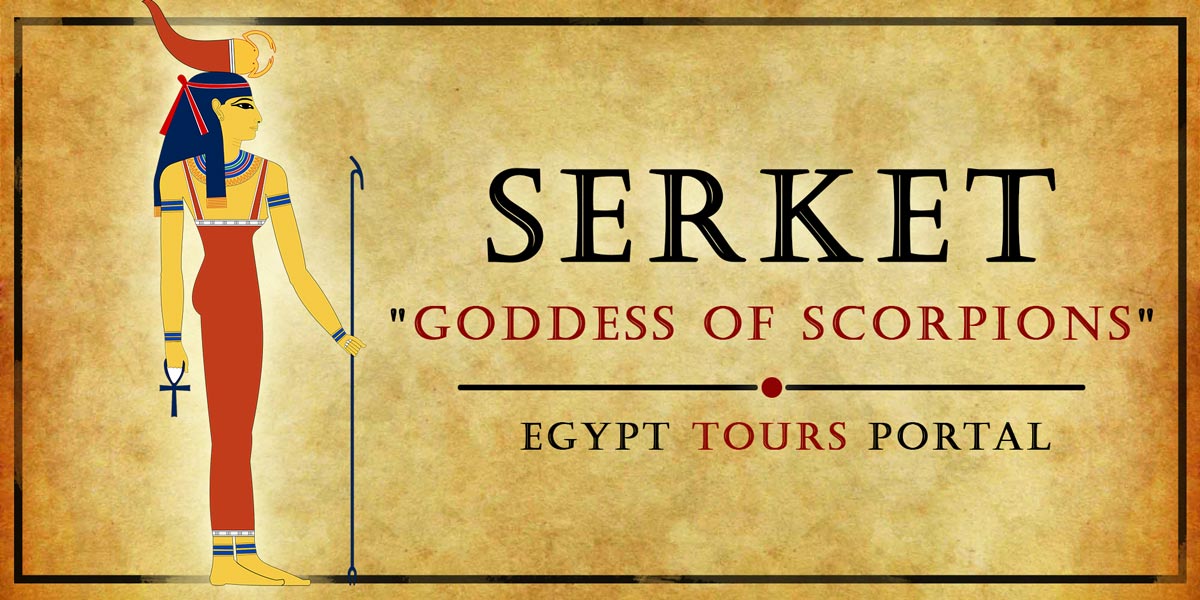
She is known as the scorpion goddess who was worshipped in the first dynasty (3150 – 2890 BC) all the way across the history of ancient Egypt as her golden statue was found in the tomb of Tutankhamen. She is an early mother goddess who protected children and people from the dangers of the scorpion and all kinds of venoms. Serket is known to follow Isis's example and be a symbol of forgiveness and protection after Isis healed a boy from the venom of a scorpion whose mother insulted Isis and then was forgiven by her. All of her priests were physicians who used her name and teaching in the healing of the ill and wounded. She also played a part in guiding the souls of the dead to Paradise and protecting them from any danger.
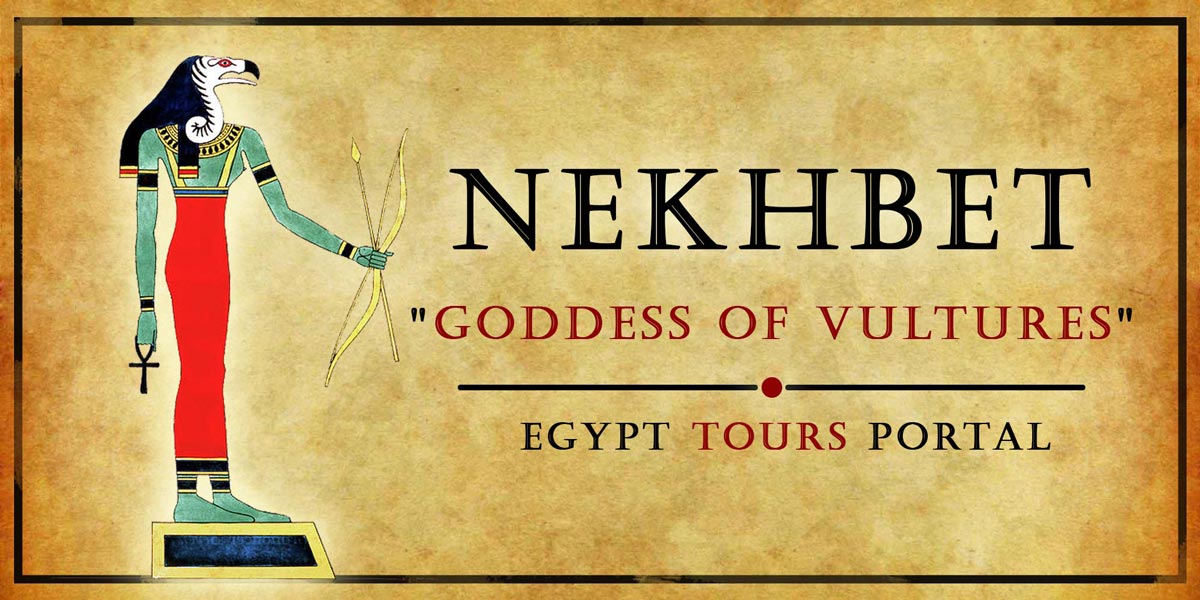
She is a unique ancient Egyptian goddess of the vultures, known to be one of the oldest goddesses of Egypt that dates back to the first dynasty (3150 – 2890 BC). She is the patron of the Pharaoh and is often shown to spread over the king with her wings. She comes in the shape of a vulture who was the guardian of Upper Egypt. Her shrine was in the city of the dead Nekheb. She was associated with her sister Wadjet who they were called "The Two Ladies".
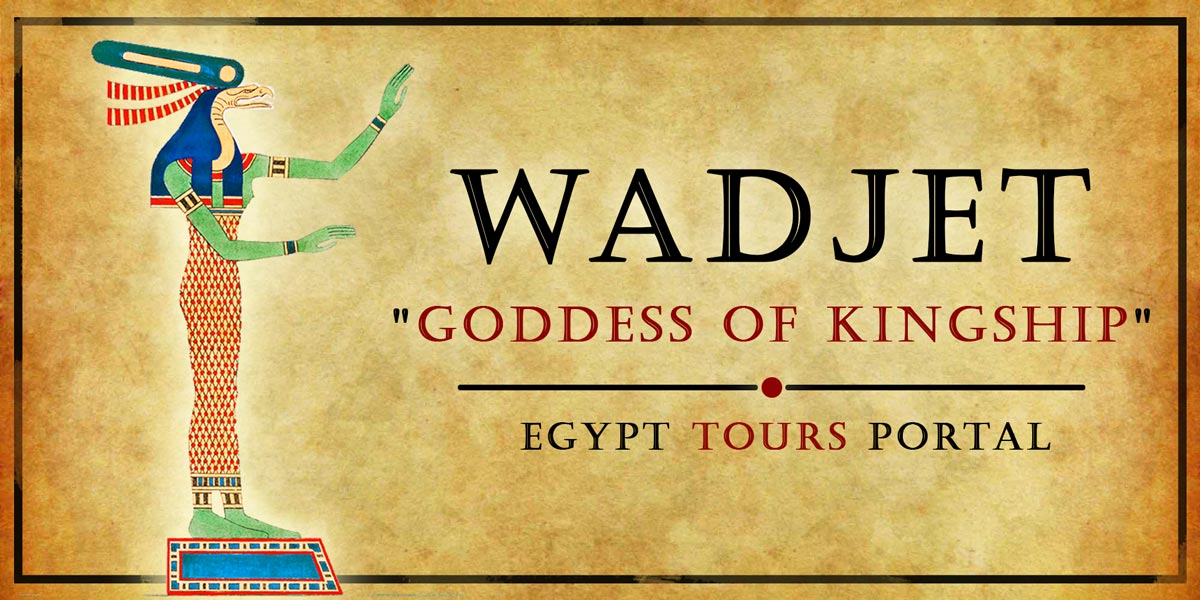
One of the most famous and oldest protective Egyptian goddesses in the history of ancient Egypt starts from the predynastic period when it was worshipped as a goddess of lower Egypt. Like her sister, she is one of her daughters of Ra. She played an important role in creation which involved the planting of the first Papyrus in the swamps of the Nile delta and helped Isis hide & raise Horus to total safety away from Set. She was known as West-Hekau which means "Great of Magic" as she offered protection against bad luck, evil spirits, demons, and ghosts. She was represented as a rearing Cobra known as the King's Uraeus.

Kherty is an important Egyptian god who ferried the dead into the afterlife, He is a ram-headed god of the underworld who ruled the underworld during the old kingdom before Osiris became the Ruler of the Underworld. He was the god of the Duat who was seen as a recumbent and mummified ram. During the Old Kingdom (2613-2181 BCE) Kherty was believed to rule the afterlife with Osiris. He took control of the entrance and the hallways leading to the hall of truth and the fields of reeds which he greeted the dead once they arrived. He is shown as the protector of the kings but also as an enemy of the order who threatened the deceased kings on the way to the underworld.
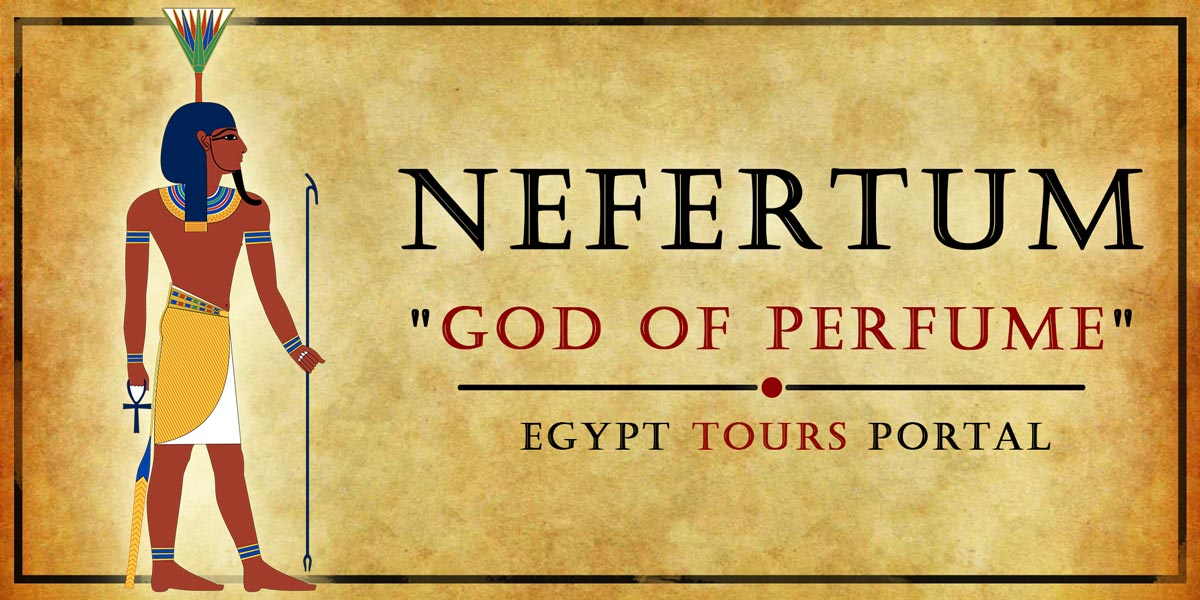
Nefertum is the beautiful god of perfume and sweet aromas, who was born from the essence of a blue lotus at the dawn of creation. His name means "Beautiful One Who Closes" or "One Who Does Not Close", a beautiful Atum who was associated with enchanting & sweet-smelling flowers. Nefertem is the son of the creator god Ptah, and the goddesses Sekhmet and Bast were called his mother. He represents the first sunlight and the enchanting smell of the Egyptian blue lotus flower. He represented the concepts of transformation and rebirth due to his connection with flowers and gods. He played a role in providing healing aromas to cure disease and wounds. He is seen as a handsome young man with blue water-lily flowers around his head.
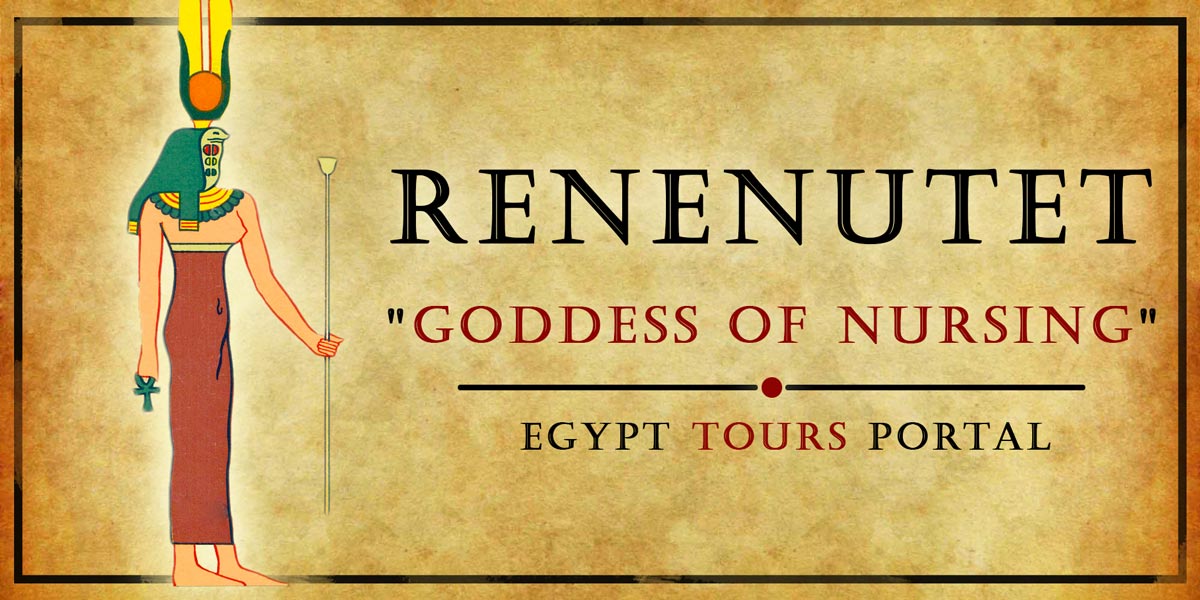
The Renenutet is a very special and unique goddess who was depicted as a cobra or a rearing cobra on the head of a Queen, her name means "Snake Who Nourishes" as she was the goddess of raising children and nursing. She had the power to determine the length of a person's life and their entire destiny. She was viewed as Atum's wife or consort, and the mother of Osiris. She is associated with the goddess of destiny and childbirth Meskhenet who played a role in determining the length of a person’s life and everyone’s most important life events. She is connected with Neith and is referred to as the mother of Osiris. She was seen as a fertility Egyptian goddess that was linked to the Nile River, the inundation, and the god Hapi of the fertile mud of the Nile River. In the afterlife, she was known as the lady of justifications due to her link with Ma'at. She was known as the lady of the fertile fields and the lady of granaries who protected the harvest of the grains with Hapi. She was known as "Lady of the Robes" as she protected the clothing worn by the king. She was seen as a grain goddess known as "Lady of the Fertile Fields" and "Lady of the Granaries" that protected the harvest. She would appear as a fire-breathing cobra protecting the pharaoh from his enemies.
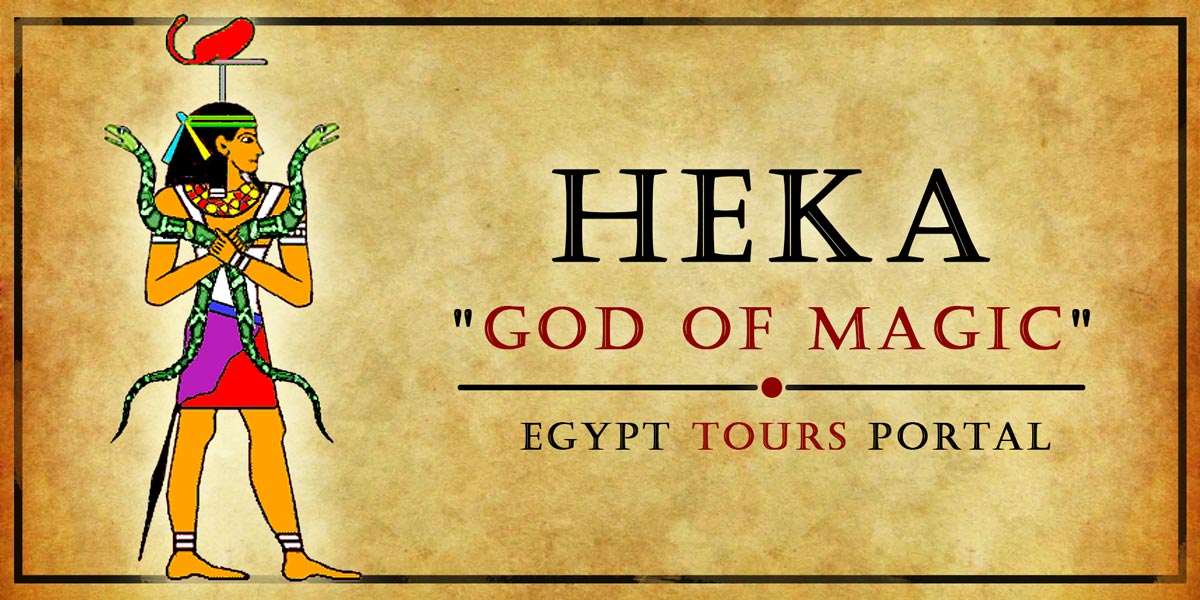
The Heka is one of the most important ancient Egyptian gods, who is the Patron of medicine and magic and was the primordial source of knowledge and power in the universe. The Heka was known as "Before Duality Had Yet Come Into Being" and was created before the gods in ancient Egypt and was present during the creation of the universe and even before Atum. He is seen as the son of Menhet, Neith, and Khnum. He is depicted as a man carrying a knife and a staff plus his physicians were known as the priests of Heka who can practice magic and medicine which explains why he became a very famous god among doctors. Heka has a very close connection with the power of word and speech because in the world of Egyptian magic, both action and words had a powerful impact. It is believed that he killed two serpents and then entwined them to his staff as a symbol of his power which was later passed to the Greeks who created the caduceus that is found in the hands of Hermes. Nowadays, the caduceus is confused with the magical rod of Asclepius.

The magical deified horizon god and the guardian of the western and eastern horizons of the afterlife Aker was known as an earthly and underworld god who was responsible for protecting the sun barges of the Sun God Ra when leavening and entering the underworld during dawn and dusk. Its job was to create a mythological bridge between the two horizons of Egypt using his body. He is connected with a number of gods which are Geb, Ra, and Khepri. He is depicted as a sundeck located between two back and back lions merged by the torso while looking away from each other. Aker stands as a representation of the underworld itself. The lions are known by Duaj as "Yesterday" and the other Sefer as "Tomorrow".
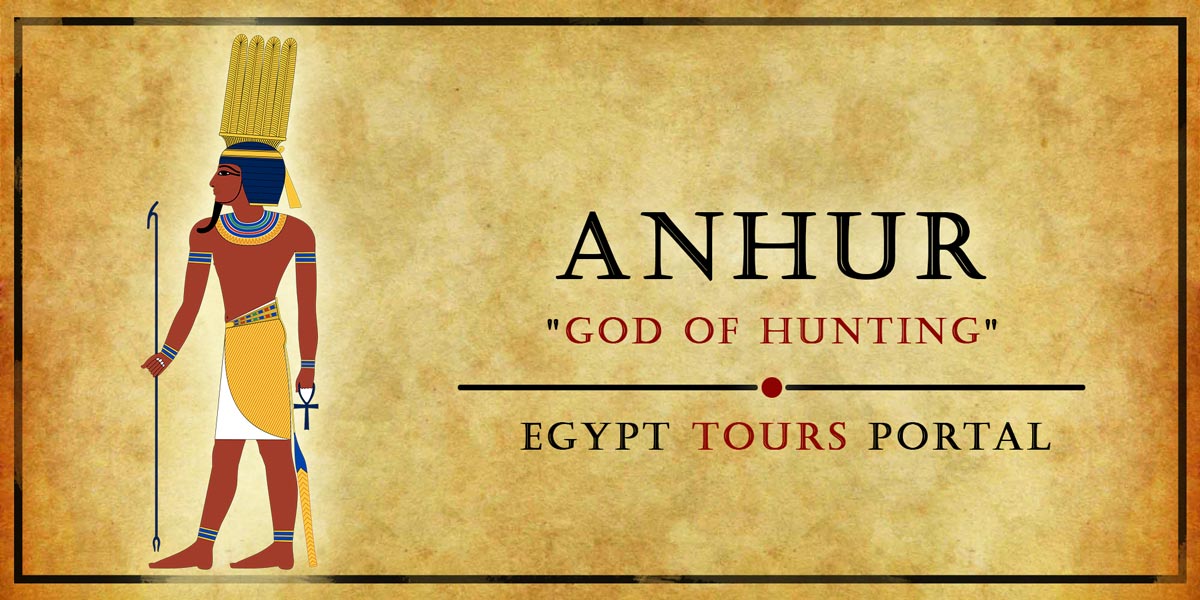
The glorious Onuris "Anhur" was the deity of hunting and war whose name means "He Who Brings Back The Distant One" which can be traced back to the story of the Eye of Ra where the eye of Horus is transformed into a lion then hunted by Onuris then returned to Ra where it transforms again into Mekhit who then becomes his consort. He is depicted as the son of Ra and is associated with the god Shu. He is known formerly to become the personification of royal warriors and the patron god of hunters and the Egyptian army who always lead them to battle to win and bring them home safely. He is depicted as a great bearded man who wears a headdress with four feathers and a robe while wearing a lance or a spear plus he has occasionally a lion-headed Egyptian god that represents divine strength.

The miraculous sun disk of Aten was created by pharaoh Akhenaten (1353-1336 BCE) as part of his mission to declare monotheism under the sole god creator of the universe Aten across the lands of Egypt that was always based on the principle of polytheism. Aten is based on one of the aspects of the sun god Ra and it is mentioned by Akhenaten as the giver of life and nurturing spirit of the world. The major cult of Aten was located in the Amarna and was dismantled by the famous Tutankhamun.

The legendary avian deity of the Bennu Bird is a golden deity of creation and resurrection that acted as the inspiration for the Greek bird the Phoenix. It was featured very closely with the great gods of ancient Egypt which include Atum (RA) where it first appeared at the dawn of creation and flew over the primordial waters. The Bennu bird represented the concept of rebirth, sun, and creation which was the Ba of RA. It was very associated with Osiris and was known by the names the "He Who Came Into Being by Himself", and "Lord of Jubilees". It took the city of Heliopolis as it is headquartered plus it is very connected to the ancient myth of creation.

The ancient Egyptian God of the earth and growing crops and plants whose laugh caused earthquakes plus the father of snakes. Geb is the son of Shu and Tefnut, husband of Nut the Egyptian goddess of the sky. Geb is one of the oldest gods in ancient Egyptian history and acts as part of the Heliopolitan Ennead. He is known to have given birth to Osiris, Isis, Set, Nephthys, Heru-ur, and Nehebkau with his consorts Nut, Tefnut, and Renenutet. He is associated with healing, earth, vegetation plus underworld, and royalty. He is connected with the mythological divine creator goose that laid a world egg where the world is located on.
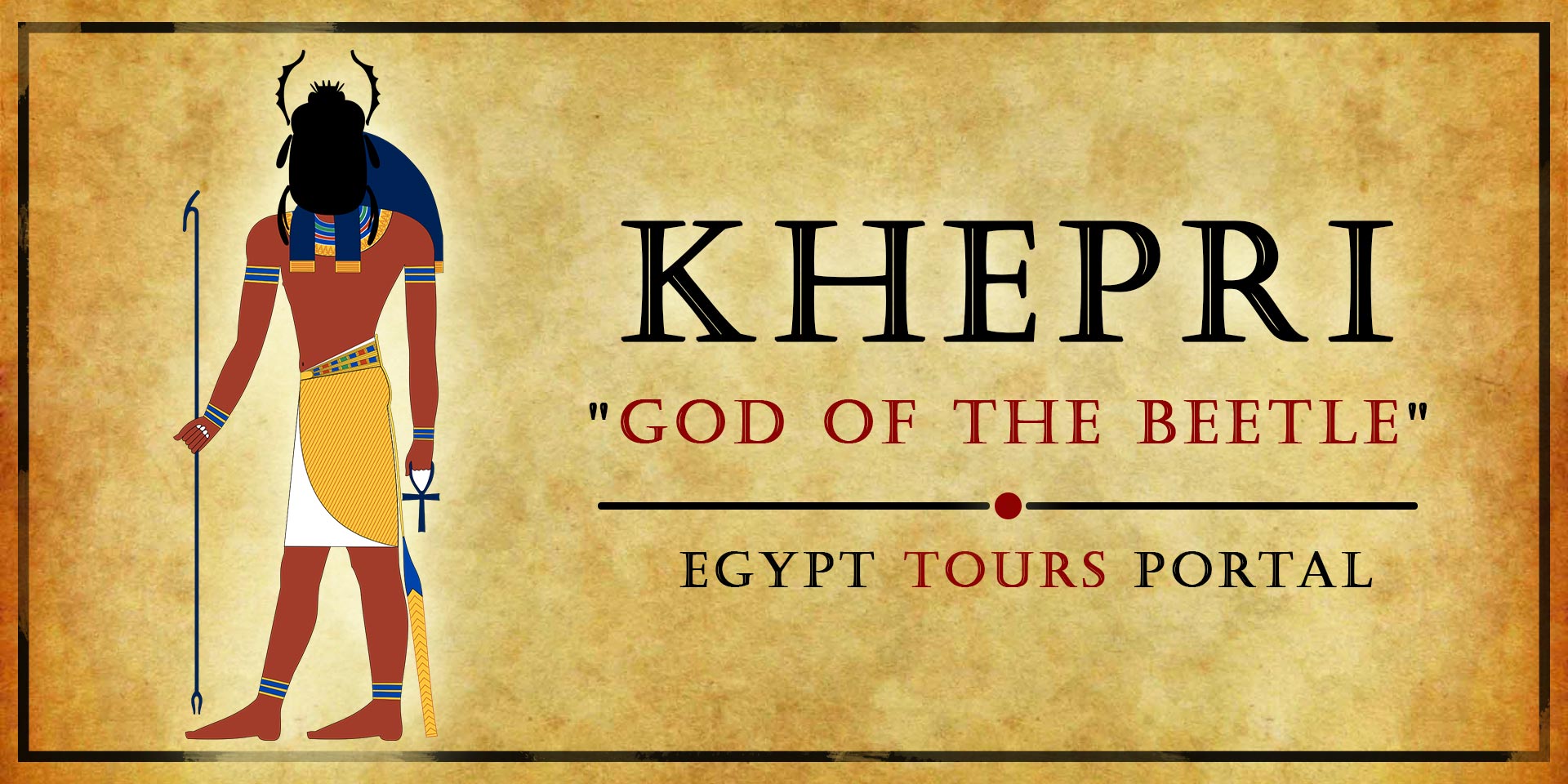
The Khepri god is a solar deity known as an aspect of the sun god Ra and part of Atum which is shown by the scarab beetle and represents the rising morning sun. It represents the concept of renewal of life and creation which is expected from the famous Scarab beetle that had an impact on the ancient Egyptian civilization. Khepri acts as the main creator Sun-God, protector, and god of resurrection plus known for his ability to renew the day with every new sun. The Khepri is seen as a scarab beetle head and the body of a man.
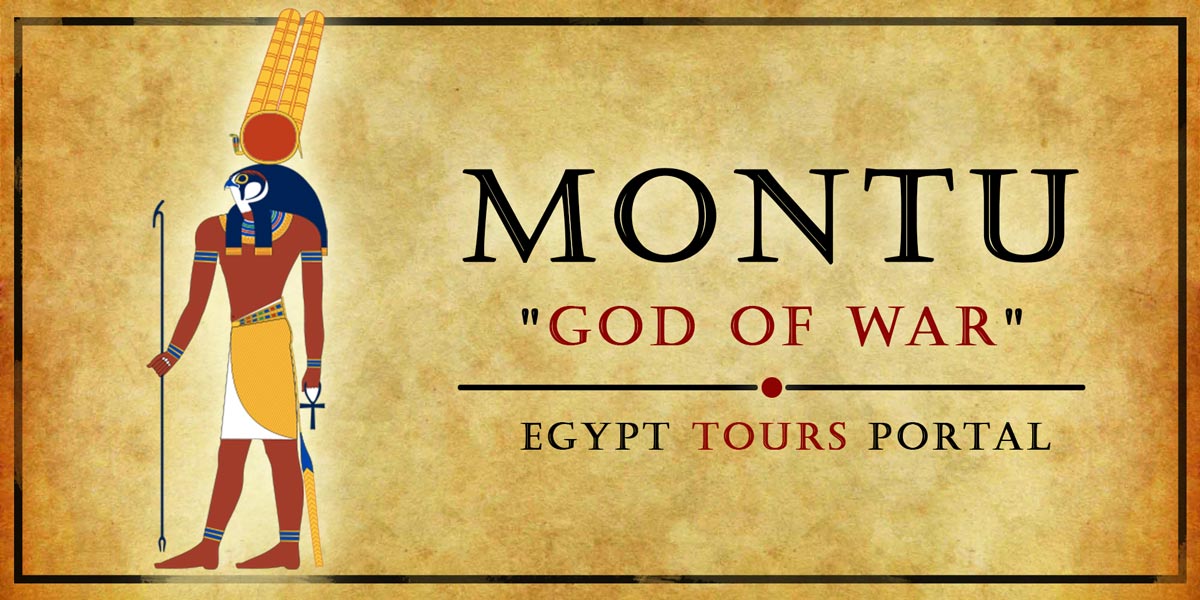
The falcon war god mount came into existence and at the highest prominence in the 11th dynasty at the divine golden lands of Thebes (2060-1991 BCE). He is very associated with the sun god Ra as Montu was seen as a manifestation of the burning effect of Ra. Montu stands as a symbol of the union of the kingship of both Lower and Upper Egypt and when linked with Horus, it was seen as a powerful war god. The war god Montu is depicted as a falcon-headed or bull-headed man as a symbol of strength with his head surrounded by the solar disk and two feathers plus he is seen carving a number of weapons like a spear, bow, and arrows. He is sometimes confused with Onuris “Anhur” the son of Ra and the patron of the army and hunters who became known as "He Who Brings Back The Distant One".
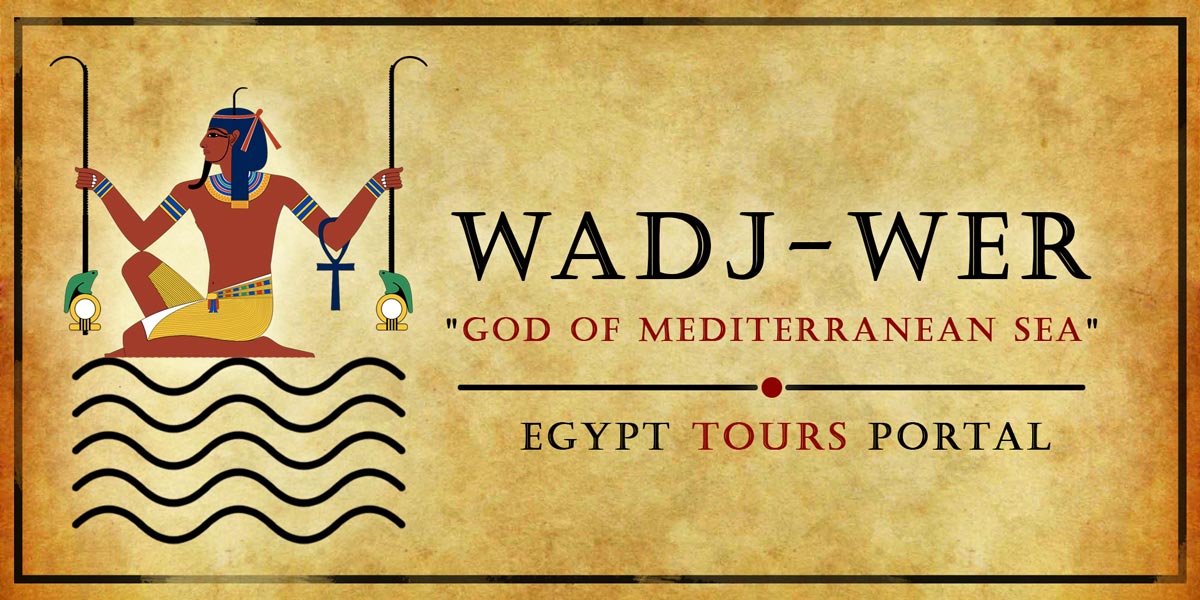
The Uat-Ur Wadj-wer is seen as the personification of the Mediterranean Sea which became known as “The Great Green”. He is believed to be the embodiment of the swamps, lakes, and lagoons of the Delta region found near the Mediterranean Sea. He was worshipped as old as the Old Kingdom (2613-2181 BCE) and remained very active throughout the history of Egypt. He was seen at Abusir in the mortuary temple of the pyramid of Sahure and at the tomb of the son of pharaoh Ramesses III Prince Amunherkhepeshef, with a huge resemblance to the god Hapi.
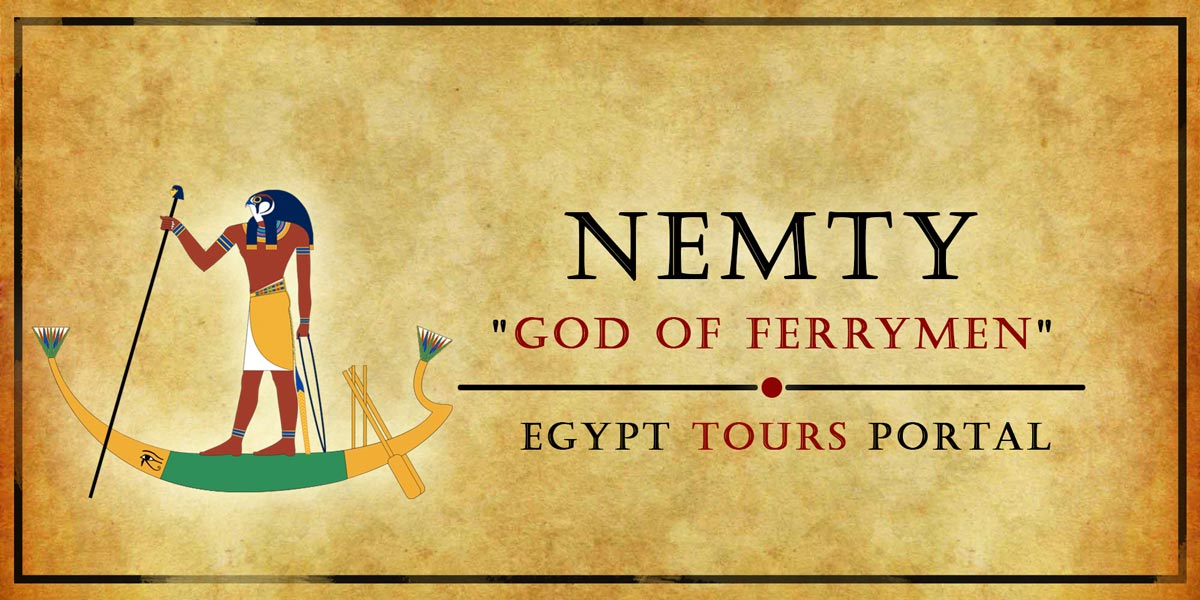
Nemty was the god of the ferrymen and was seen as a falcon who stands on a boat, and his name means the one who travels. The god of ferrymen is known to be the main patron of Badari which used to be Horus’s central cult. His cult can be found in Annapolis. He played a role in the myth of Osiris, as he transported the ancient Egyptian goddess Isis by boat through the Nile River.
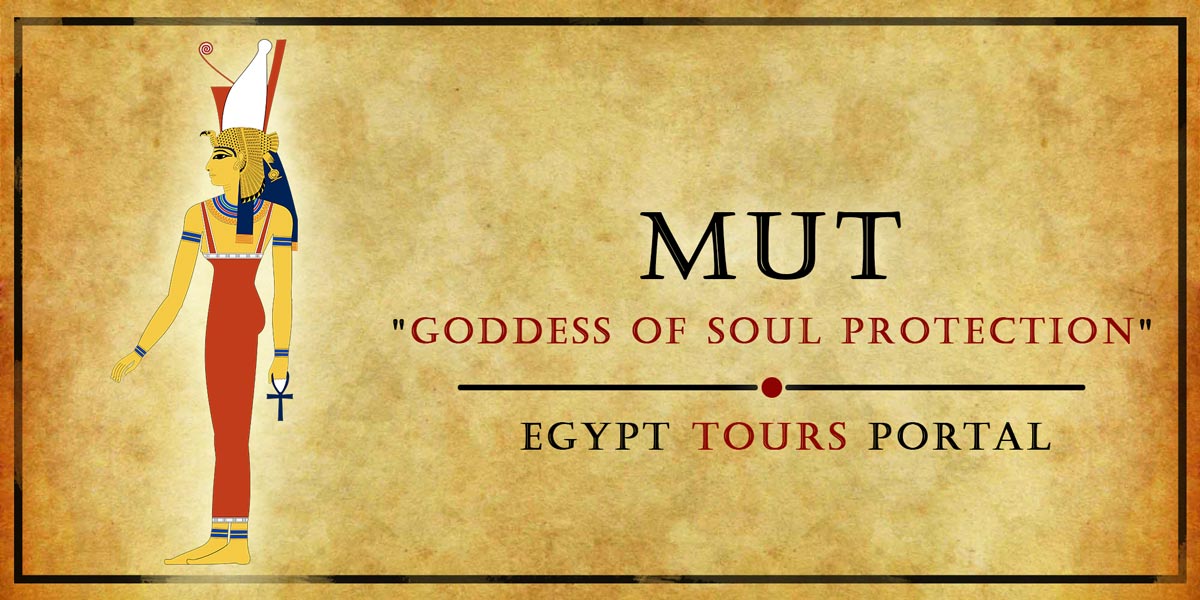
The great primal Egyptian goddess Mut is an early mother goddess who played a minor role in the Predynastic Period (6000-3150 BCE) as part of the Theban triad as the wife of Amun and mother of Khonsu, who were worshipped as divine Karnak temples complex. She was the result of the primordial waters of Nu and was associated and seen with Sekhmet and Bastet. She had the role of being the guardian over the lives of people and as mentioned in the Book of the Dead as the savior of the souls trapped in the afterlife by demons. She has seen a divine protector who guarded the kings and the state against any conspirators and traitors who she later burned in a flaming brazier. Mut was seen as a beautiful woman with Vulture wings, holding an Ankh, and wearing the united crown of Upper and Lower Egypt with the feather of Maat at her feet.
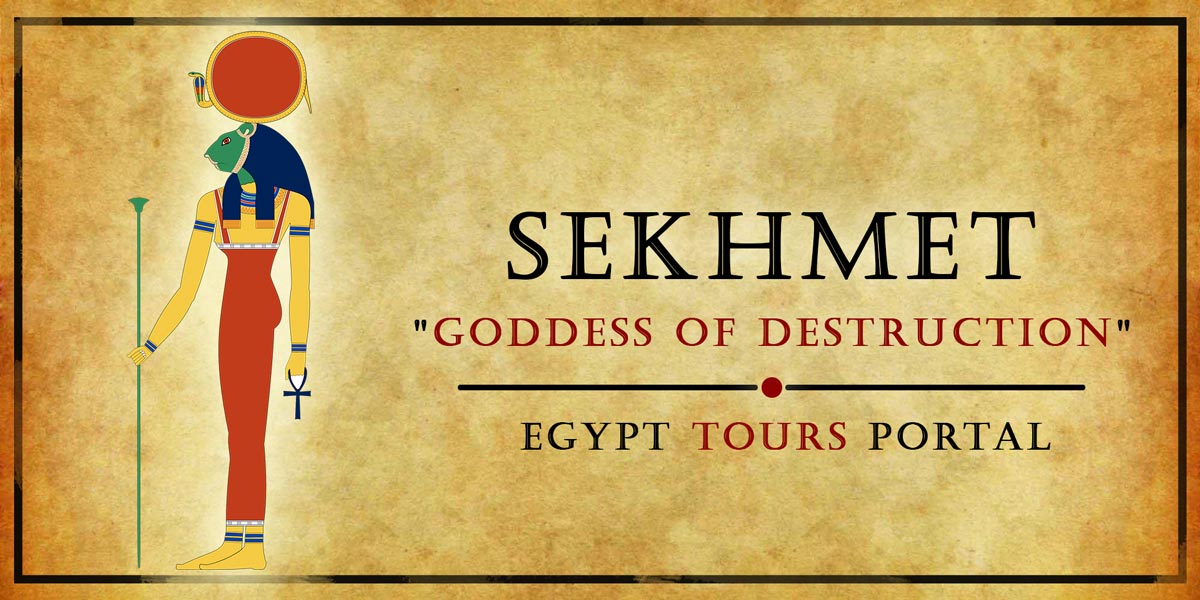
Sekhmet was one of the most recognized goddesses of ancient Egypt who was the goddess of destruction, vengeance, and healing plus the desert winds and cool breezes. She was depicted as a strong woman with the head of a lion who was mentioned as "The Female Powerful One". She was the daughter of the sun god Ra who created Sekhmet as a tool for destruction because of the sins of humanity. She was seen as responsible for any natural disasters or plagues that affected humanity plus she had the power to heal as a mistress of life. Ra was able to absorb her blood lust through a vat of beer dyed red and she was able to drink it then she fell into a deep sleep where she was transformed into Hathor.

The God of grains Neper is known to be the son of Renenutet the harvest goddess who was personified as corn and was very closely associated With Osiris when he was a fertility Egyptian god to the point where he was mentioned as the one who lived after dying. He was known as the lord of the mouth and a source of nourishment with main barley and emmer wheat.
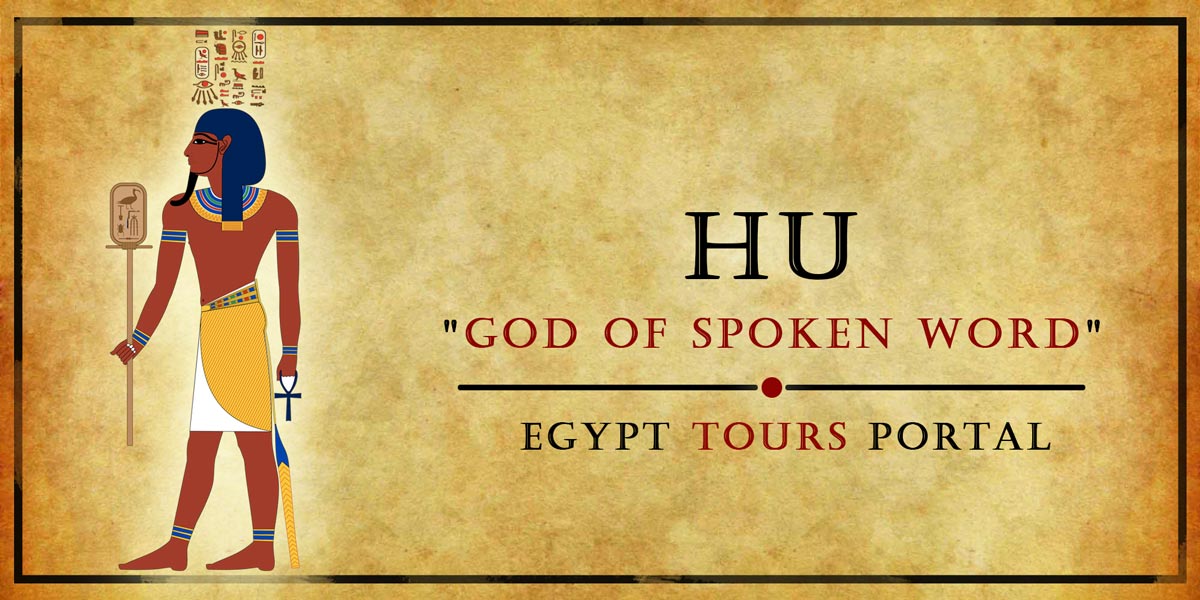
The Egyptian god of the spoken word "Hu" was seen as the personification of the first word that was spoken by Ra (Atum) during the dawn of creation which brought everything into reality. Hu is very linked to the concept of Sia and Heka. The Sia was seen as a representation of the heart, Hu was seen as the tongue, and the Heka represented the underlying force that gave them their power. The Hu is a representation of the Heka power of Atum plus it is depicted in many funerary texts as guiding the soul to the afterlife.
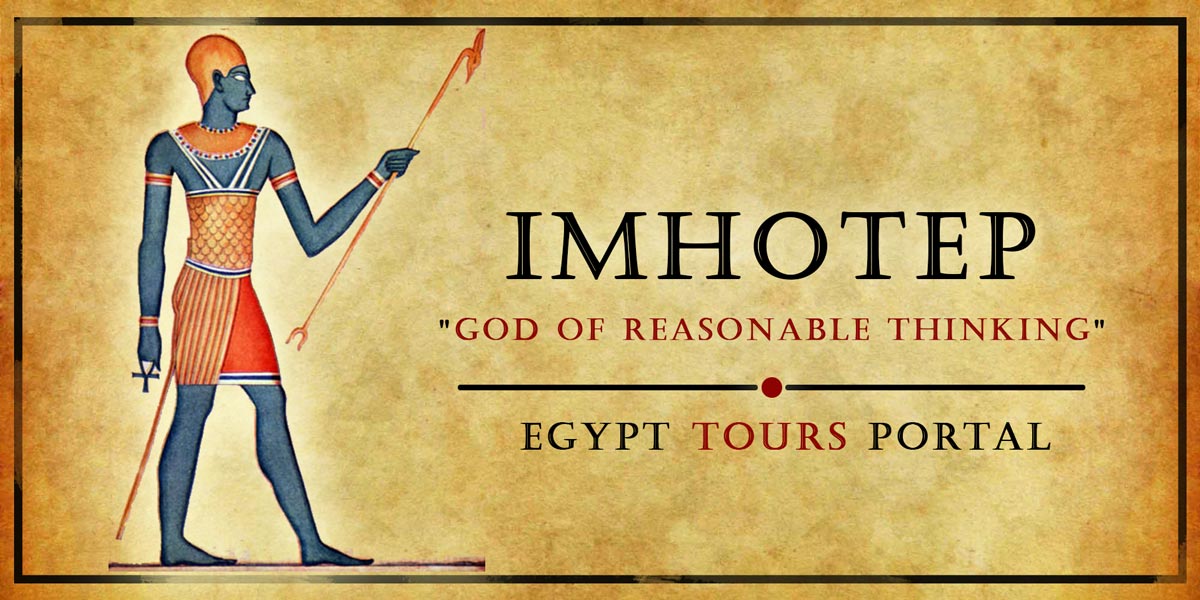
The great Vizier of Pharaoh Djoser "Imhotep" (2667-2600 BCE) was the key figure behind the design and construction of the Step Pyramid. He was a polymath expert in countless fields of study, whose name means "He Who Comes in Peace". He was seen as the god of medicine and wisdom plus was very famous among the Greeks with Aesculapius who was famous for his healing spells. All his medical treaties stood very strong against the conventional belief that disease was a punishment from the Egyptian gods and that disease was natural in origin. Due to his natural gift, he later on lifted to the state of god as a symbol of intellect and reasonable thinking.

Sia was seen as the personification of thoughtfulness and perception which represented the heart that acted as the seat of thought, emotion, and character. Sia formed a triad with Hu and Heka plus she created a day with her tongue of Hu. It is one of the primordial forces of the cosmos which enforced life and sustained Maat. Sia is the spiritual embodiment of the intellect while Hu is a magical symbol of the word of Ptah and Atum that made thoughts into a reality. Sia is seen as a man who stands on the right side of Ptah and held his papyrus scroll. He is seen in the Valley of the Kings as a member of the ship Crew Abroad Ra’s sun barge.
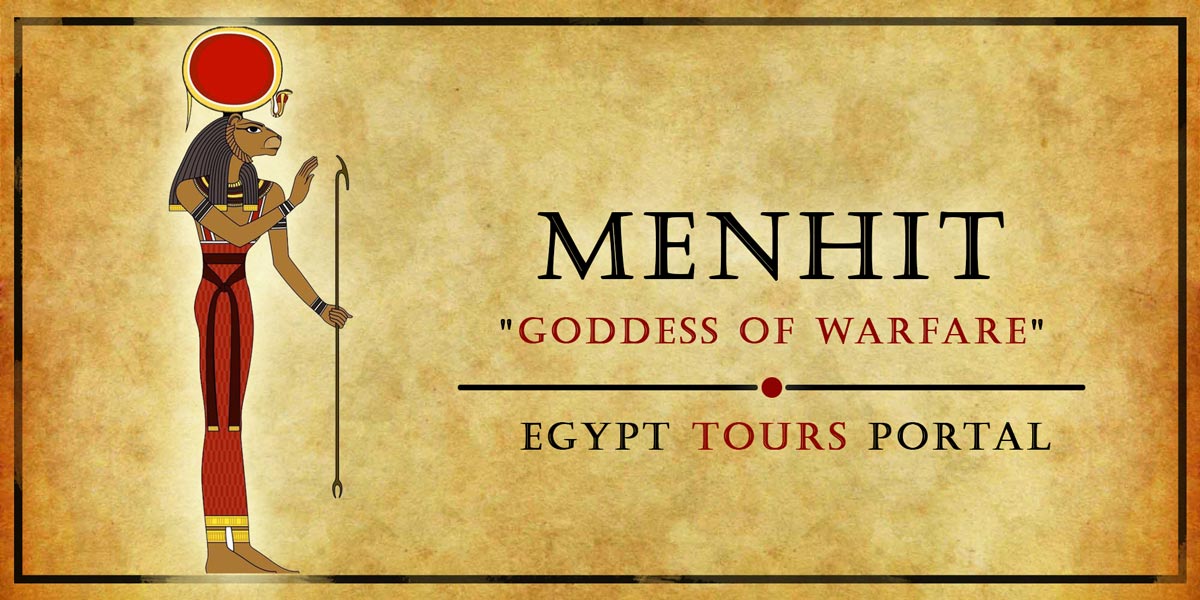
Menhit was a solar deity of war who was seen offering the brow of Ra, who came from Nubia and was depicted as a roaring lioness that was associated with the moon. She stood as a symbol for the Eye of Ra’s vengeful side. She was worshipped in the divine lands of Abydos in her central cult and in the delta region as a protective Egyptian goddess with Wadjet and Neith. She was believed to be the embodiment of the eyes of Ra who was hunted and returned by Onuris.
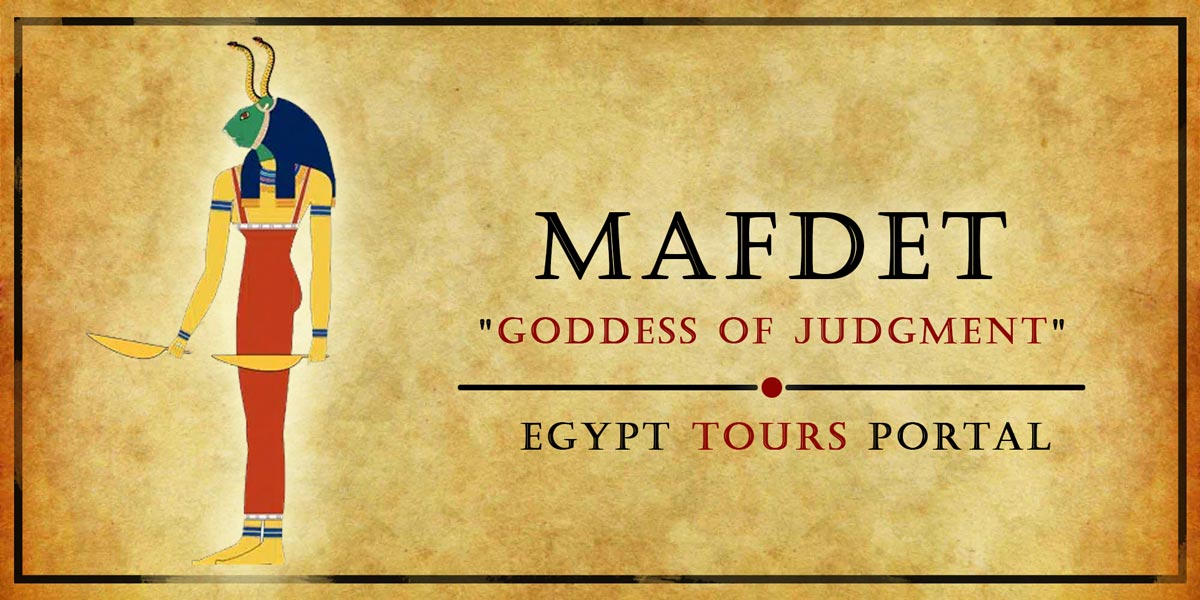
The great Egyptian goddess Mafet was seen as a symbol of justice who executed swift judgment. She was known as "She Who Runs" for the speed with which she spread justice. She appeared as a judge in the afterlife and was very popular from the Early Dynastic Period (3150-2613 BCE) all the way to the New Kingdom (1570-1069 BCE) to the point where she even predates Sekhmet and Bastet. She was the main protector from the venomous bites of scorpions. She was represented as a woman with the face of a Cat, a lynx, leopard, or cheetah that golds a rope, and an executioner’s blade.
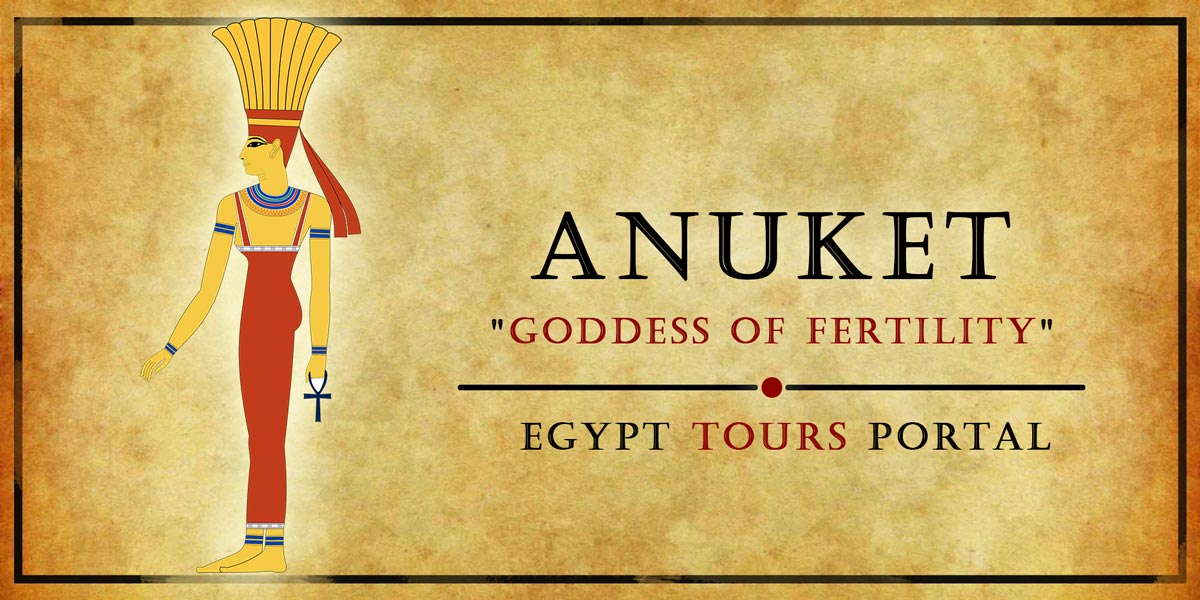
The Goddess of fertility Anuket is responsible for the cataract of the Nile River at Aswan was responsible for Egypt’s southern frontier regions and was worshipped at Elephantine Island. She was known as "Clasper" or "Embracer". She was the daughter of Ra and was very connected to Hathor, Bastet, and Sekhmet. She was seen as a woman wearing a beautiful headdress that was associated with cowry, a bow, arrows, and ostrich feathers. She is seen as a scepter which was topped with an ankh plus her symbolic animal was the gazelle.
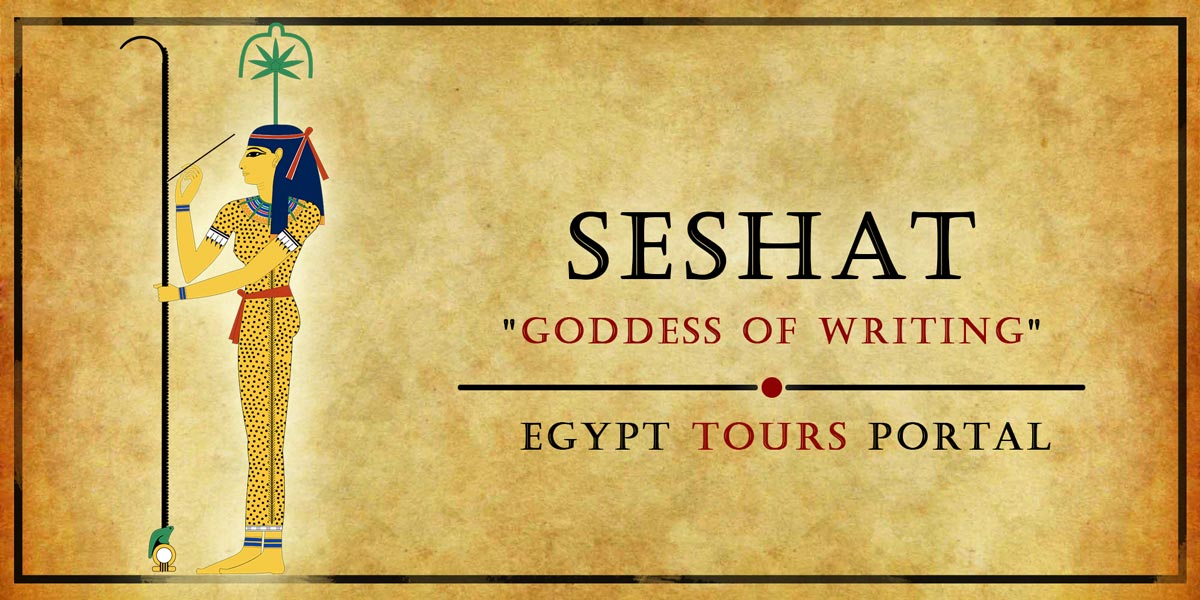
Seshat was the goddess of writing, notations, wisdom, knowledge, books, and measurements her name means "The Female Scribe" and she was the daughter and consort of Thoth the god of wisdom and writing. Like her father, she was the patroness of public and private libraries and scribes, she was the patroness of builders, architects, and those who dealt in measurements and accounting for cattle, and spoils of war. The goddess of architecture, astronomy, mathematics, astrology, accounting, building, and surveying. Her name means "She Who is Foremost in the House of Books" which was first mentioned in the Second Dynasty (2890-2670 BCE). She is depicted as a strong beautiful woman wearing leopard skin over a robe with a headband while holding a stick with an on-top star.
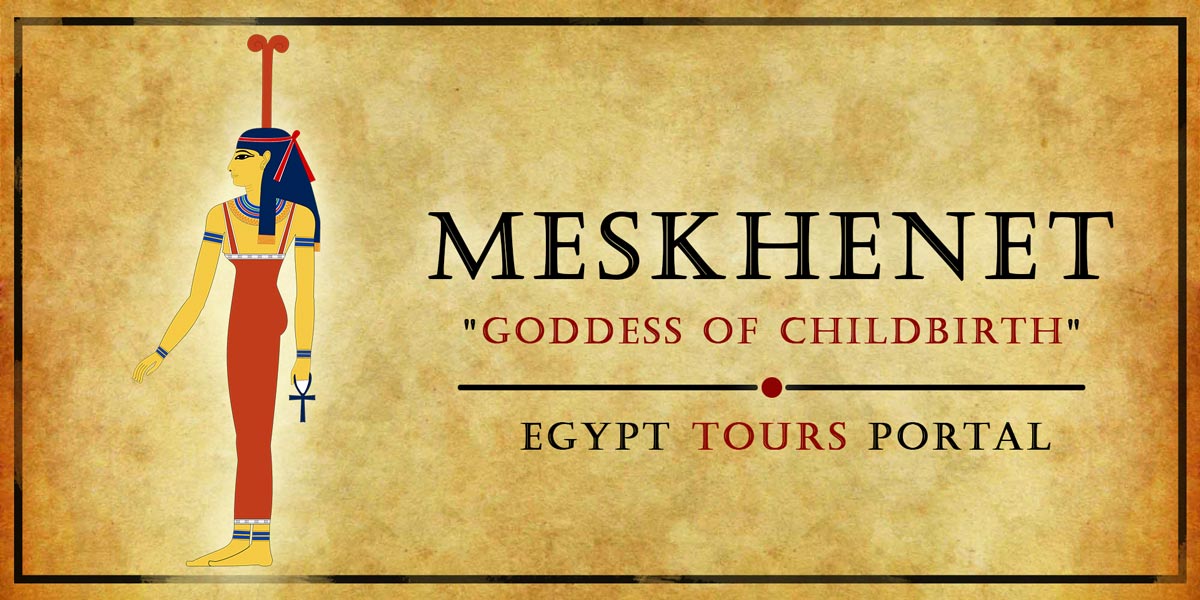
The Egyptian Goddess of childbirth Meskhenet is known to be one of the oldest deities of Egypt was located at the time of birth and created the Ka which represents the soul that later she breathed into one’s body. She provided the person’s destiny based on their character. She played the role of a comforter that was present during the time of judgment in the afterlife. She was present during the life of every individual from birth to death and after death. She had the image of a birthing brick that had the head of a woman. Throughout the history of ancient Egypt, she was very respected and worshipped in the homes of ancient Egyptians.
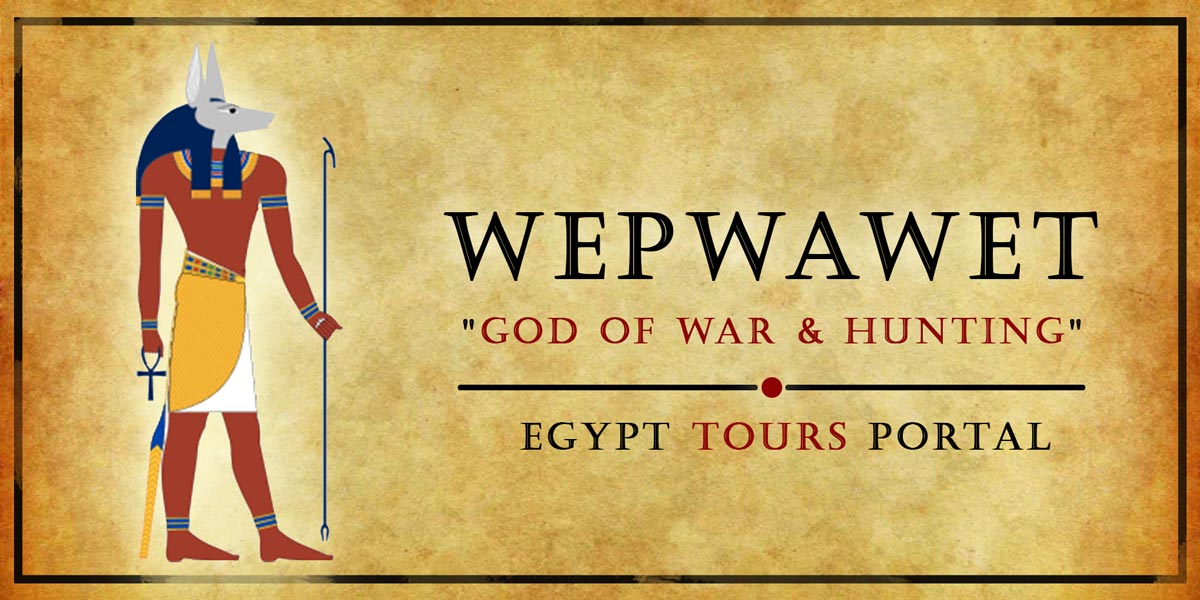
Wepwawet was a god of war, hunting, and the underworld. His name means "Opener of the Ways" and he was often depicted as a wolf or a jackal-headed man. His symbols were the mace, wolf, and arrows. He was associated with the pharaohs and their military campaigns, as well as with the funerary rites of the dead. He was also seen as a protector of the sacred places and a guide for the souls of the deceased as one of the few ancient Egyptian gods that can open a gate to the underworld of Duat. Wepwawet was sometimes identified with Anubis as his son, another jackal-headed god of the underworld, or with Osiris, the lord of the dead His parents were Set and Nepthys. His face can be seen in Abydos in the temple of Seti I
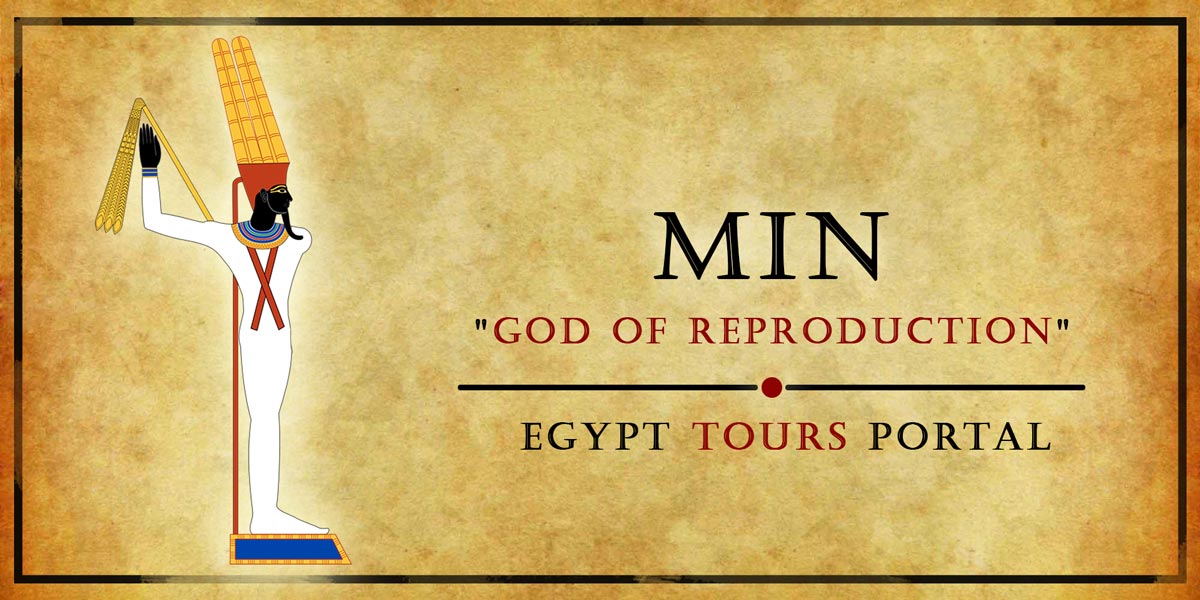
Min was a god of fertility, sexuality, and reproduction. His name means "The Firm One" and he was often depicted as a man with an erect phallus and a flail in his hand. He was worshipped as a patron of male potency and virility, as well as a protector of crops and animals. He had the symbols of lettuce bull, and phallus. He was also associated with the desert and its oases, where he had many shrines and festivals. Min was sometimes identified with Amun, the king of the Egyptian gods, or with Horus, the son of Isis. His cult was found in the cities of Qift in Qena and Akhmim in Sohag.
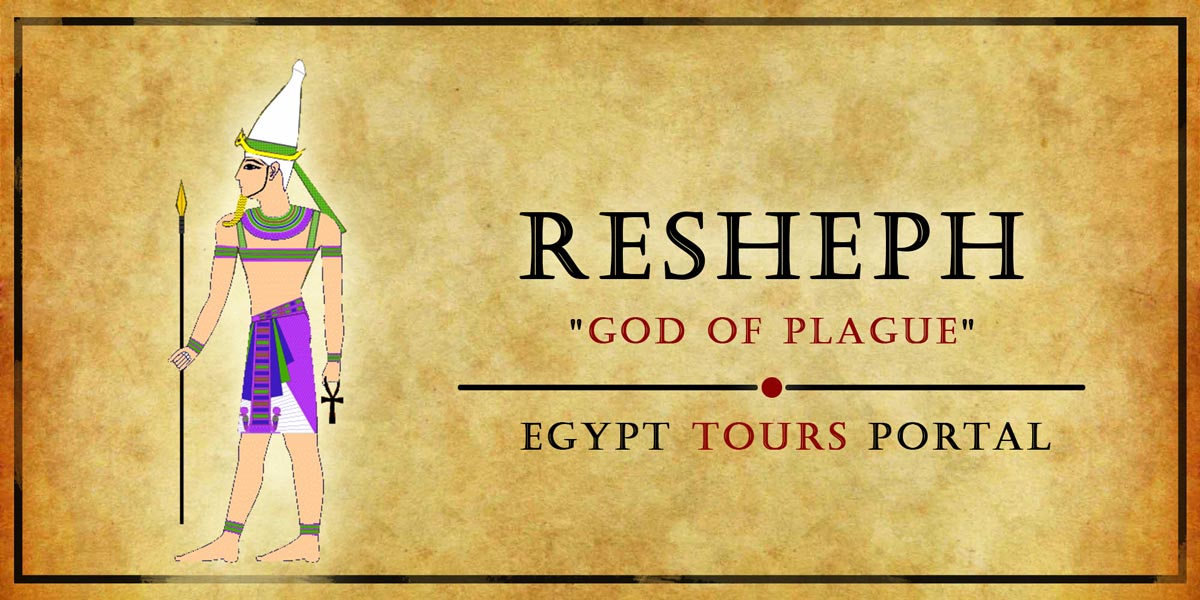
Resheph was an international god of war, plague, and healing who was equal to Montu and can be found in a number of different cultures. His name means "the burner" and he was often depicted as a man wearing a gazelle skin and holding a spear or an axe. He was originally a Canaanite deity who was adopted by the Egyptians during the New Kingdom (1570 – 1050 BC). He was worshipped as a bringer of destruction and disease, but also as a healer and a protector from evil forces. He was also associated with horses and chariots, as well as with thunder and lightning. Resheph was sometimes identified with Montu, another god of war, or with Seth, the god of chaos and storms.

Seker was a god of the underworld and the dead plus a patron for the living who held a resemblance to Horus. His name means "the mummy" and he was often depicted as a hawk-headed man wrapped in bandages. He was one of the oldest Egyptian deities who was worshipped since the pre-dynastic period. His cult was established in Memphis city. He was revered as a guardian of the necropolis and a preserver of the bodies of the dead. He was also seen as a creator god who fashioned the world from his own body. Seker was sometimes identified with Ptah, another Egyptian god of creation, or with Osiris, the ruler of the underworld.
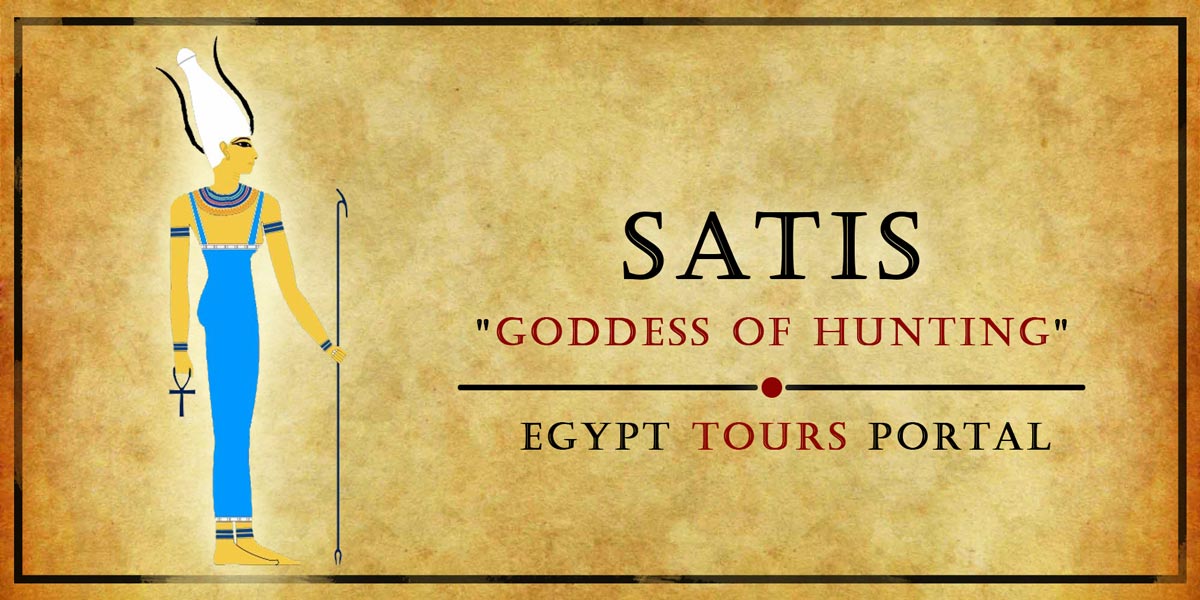
Satis was an Egyptian goddess of hunting, war, and fertility. Her name means "The Shooter" and she was often depicted as a woman wearing antelope horns and holding a bow and arrows. She was worshipped as a patroness of hunters and warriors, as well as a giver of life and abundance. Her symbols are known to be the ankh, bow, arrow, Sirius, hedjet, bow & arrow. Her cult was founded in the elephantine city in 1760 BC. She was also associated with the Nile River and its annual flooding, which brought fertility to the land. Satis was sometimes identified with Anuket, another goddess of the Nile, or with Hathor, the goddess of love and joy.
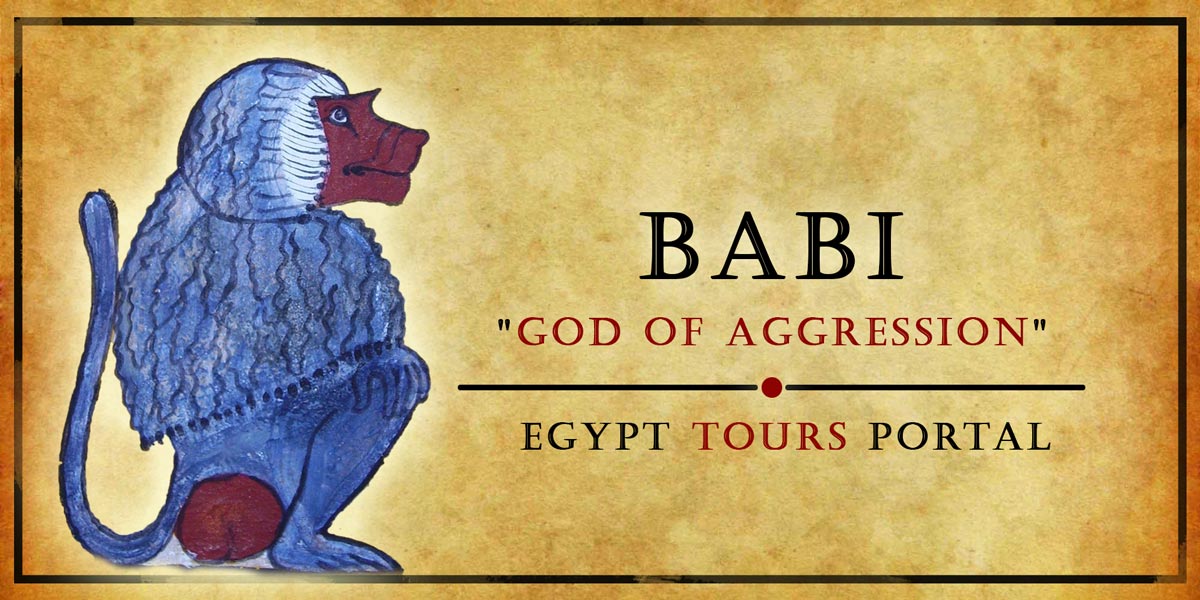
Babi was a god of aggression, violence, and sexuality. His name means "The Baboon", "Bull of the Baboons", and "Chief of the Baboons" and he was often depicted as a baboon or a baboon-headed man. He was worshipped as a manifestation of primal force and animal instinct, as well as a defender of the underworld and its secrets. He was also seen as a god of virility and sexual prowess, who could grant his worshippers enhanced performance and pleasure. Babi was sometimes identified with Thoth, another baboon-headed god of wisdom and writing, or with Bes, a dwarf god of protection and entertainment.
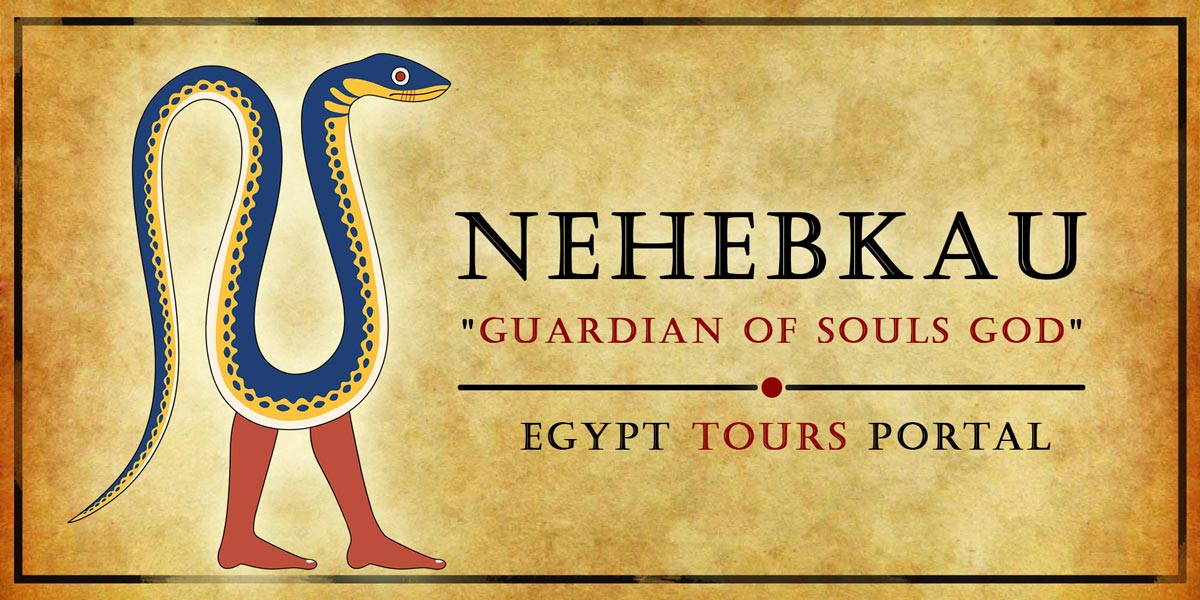
Nehebkau was an eternal snake-like Egyptian god who guarded the entrance to the underworld plus acted as a protective deity. He lived in the temple of Heliopolis along with Re and Atum. He was also associated with magic and protection. He was known as "That which gives Ka", "He Who Harnesses the Spirits", 'Collector of Souls", "Bestower of Dignities", and more. He was highly revered during the middle and new kingdoms. He was sometimes depicted as having human arms and legs, or as a winged serpent. He was one of the sons of the creator god Atum, and he helped him in the creation of the world. His name is mentioned in the Pyramid Texts, Coffin Texts, and The Book of the Dead He was also one of the 42 judges who weighed the hearts of the dead in the Hall of Maat.
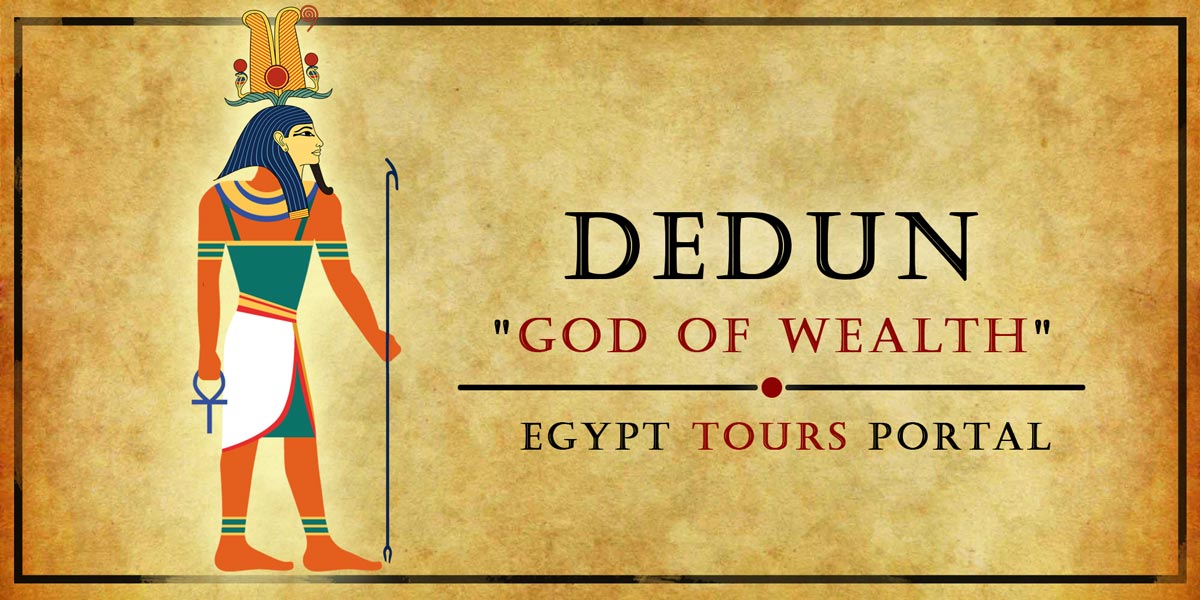
Dedun was an ancient god of wealth, prosperity, and incense. He was worshipped mainly in Sudan and Nubia, a region south of Egypt that was sometimes under Egyptian control. He was mentioned in the pyramid texts and was believed to provide the precious resources that came from Nubia, such as gold, ebony, ivory, and exotic animals. He was also the patron of craftsmen who made incense and perfume. He was often shown as a lion-headed man wearing a crown with horns and plumes.
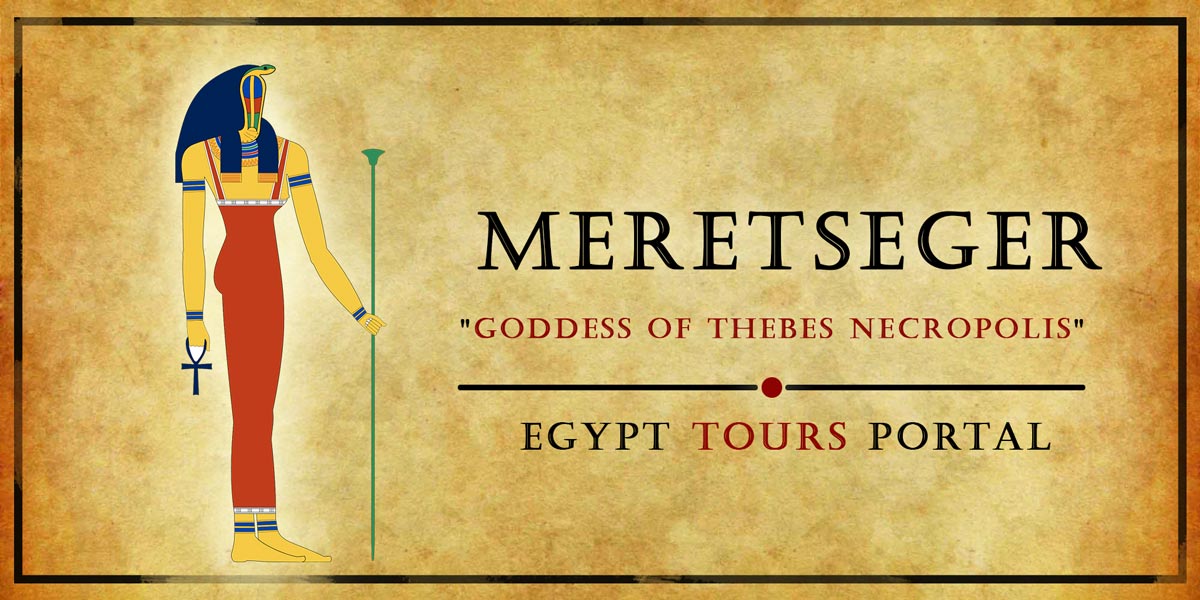
Meretseger was an Egyptian goddess of the necropolis of Thebes, the city where many pharaohs and nobles were buried. Her name means "she who loves silence". She was a guardian of the tombs and a punisher of those who violated them. She could cause or cure diseases with her venom. She was usually depicted as a cobra, or as a woman with a snake's head. She was also sometimes shown as a scorpion or a vulture.
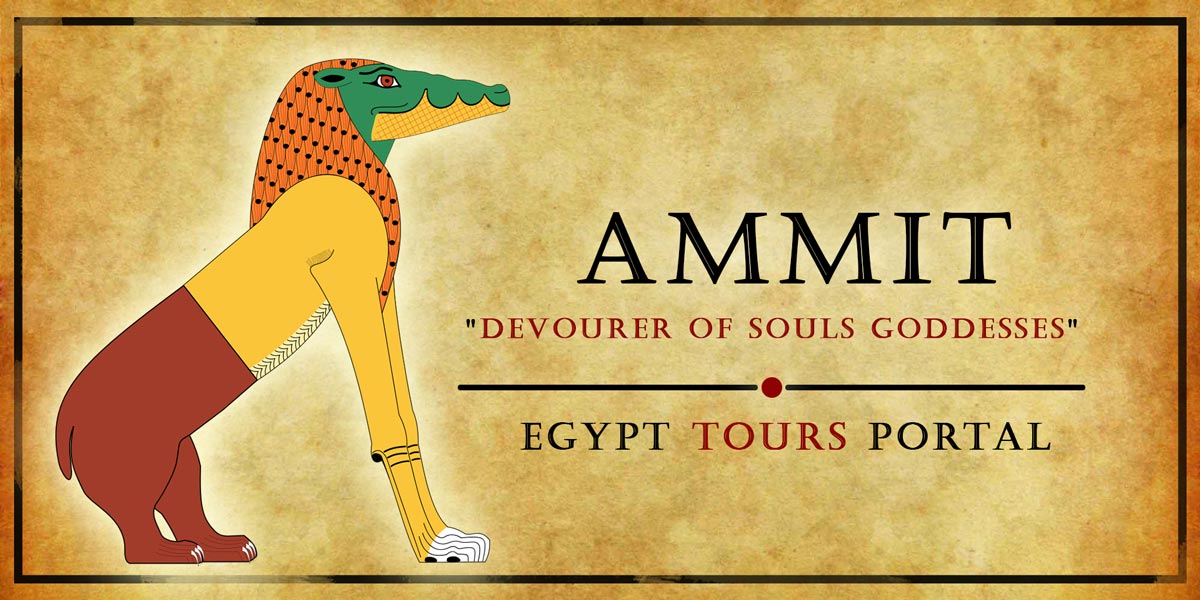
Ammit or Ammut was a demoness who devoured the souls of the wicked. She was part of the judicial process in the afterlife. She waited near a scale that measured the weight of the heart of the deceased against a feather of truth. If the heart was heavier than the feather, meaning that the person had committed many sins, Ammit would swallow it and the person would cease to exist. Ammit had a terrifying appearance: she had the head of a crocodile, the torso of a lioness, and the hindquarters of a hippopotamus.
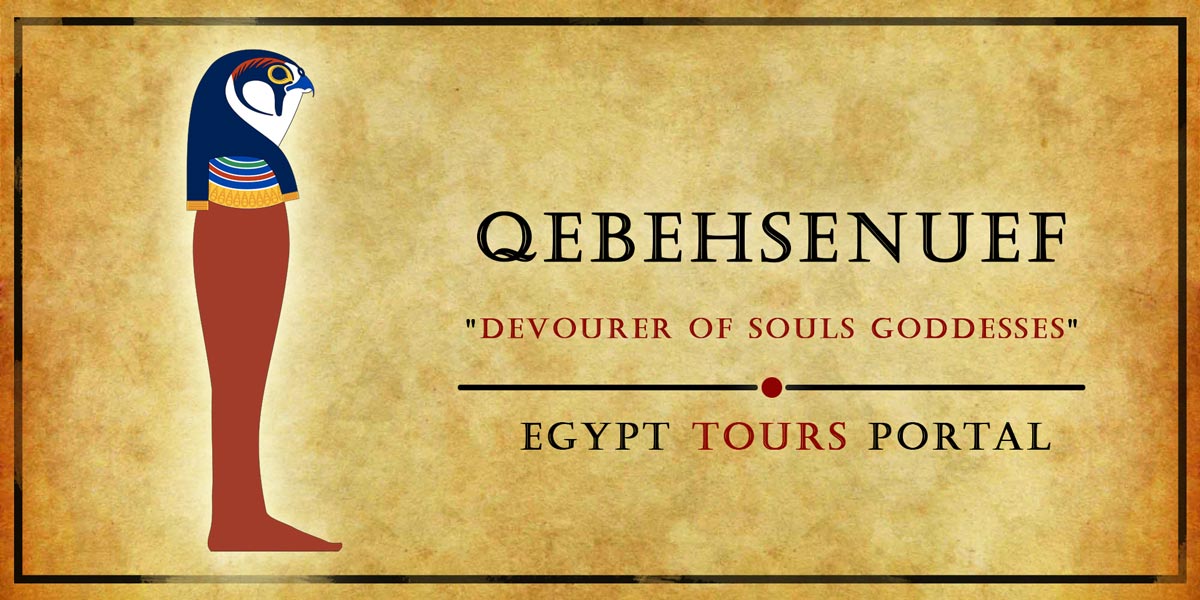
Qebehsenuef was one of the four sons of Horus who protected the internal organs of the mummified dead. He had the head of a falcon and wore a white crown. He guarded the canopic jars that contained the intestines. He was also associated with the West, where the sunset and where the underworld was located. He was aided by his mother Isis and by Serqet, a goddess of healing and scorpions.
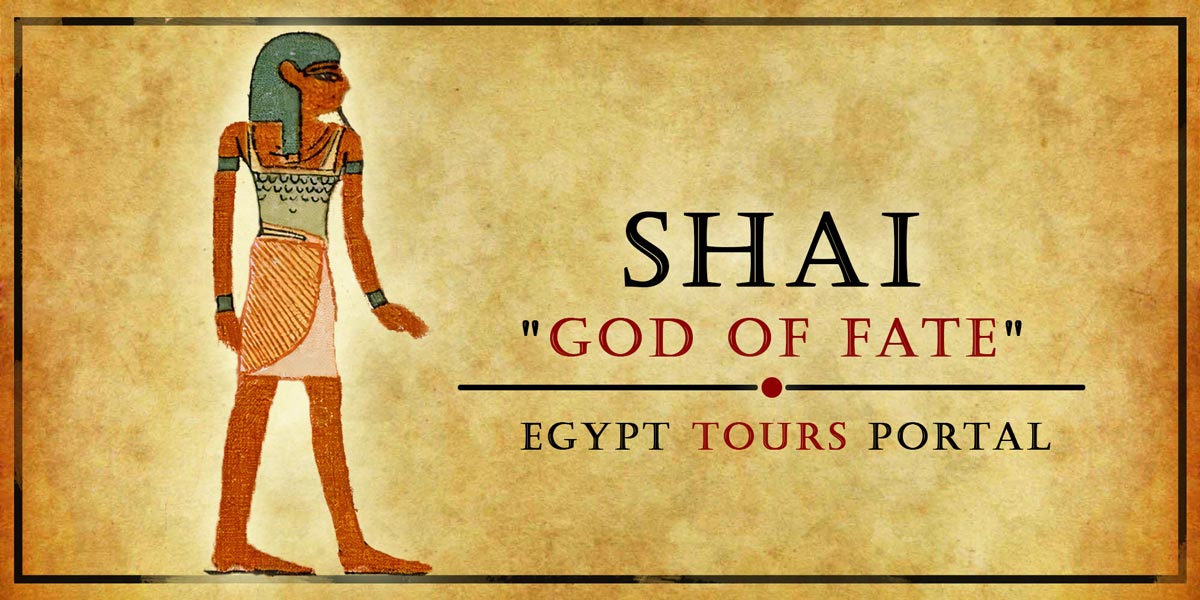
Shai was the god of fate and destiny. He was believed to determine the lifespan and fortune of every human being at birth. He was often depicted as a bald man holding a scepter and a palm branch, or as a man with the head of a gazelle. He was sometimes associated with the goddess Renenutet, who was the protector of the newborn. Shai was also considered to be a companion of Thoth, the god of wisdom and writing.
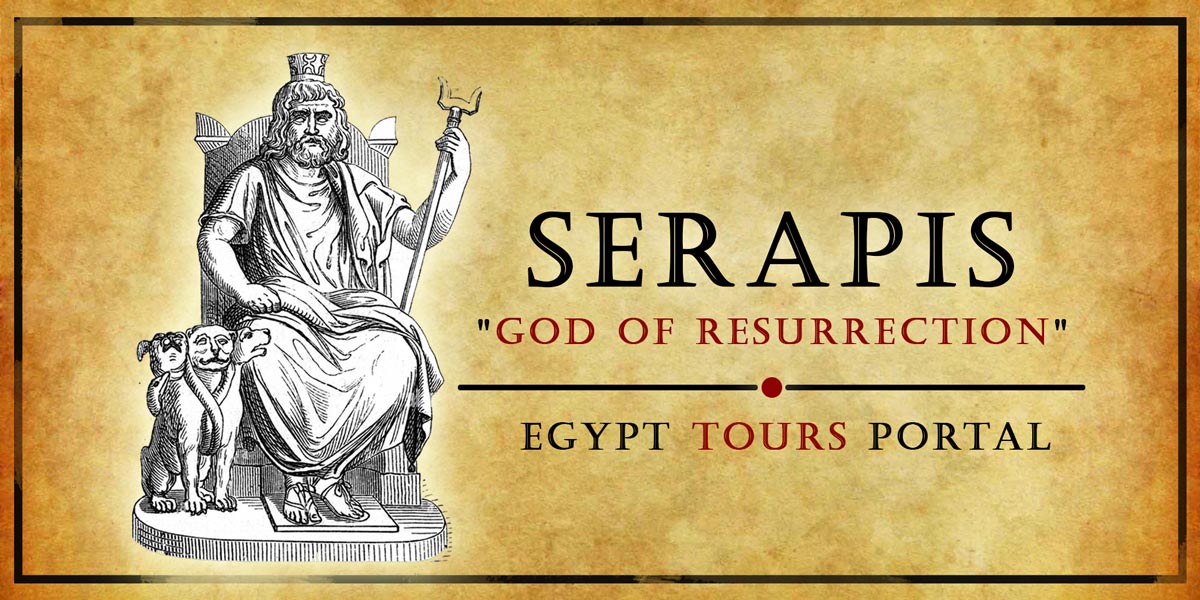
Serapis was a syncretic Egyptian god who combined aspects of Osiris, Apis, Zeus, and Hades. He was created by the Ptolemaic rulers of Egypt to appeal to both the Greek and Egyptian populations. He was the god of healing, resurrection, and fertility. He was depicted as a bearded man wearing a modius "A Grain Measure" on his head and holding a scepter and a Cerberus (a three-headed dog). He had a large temple in Alexandria, where he was worshipped alongside Isis.
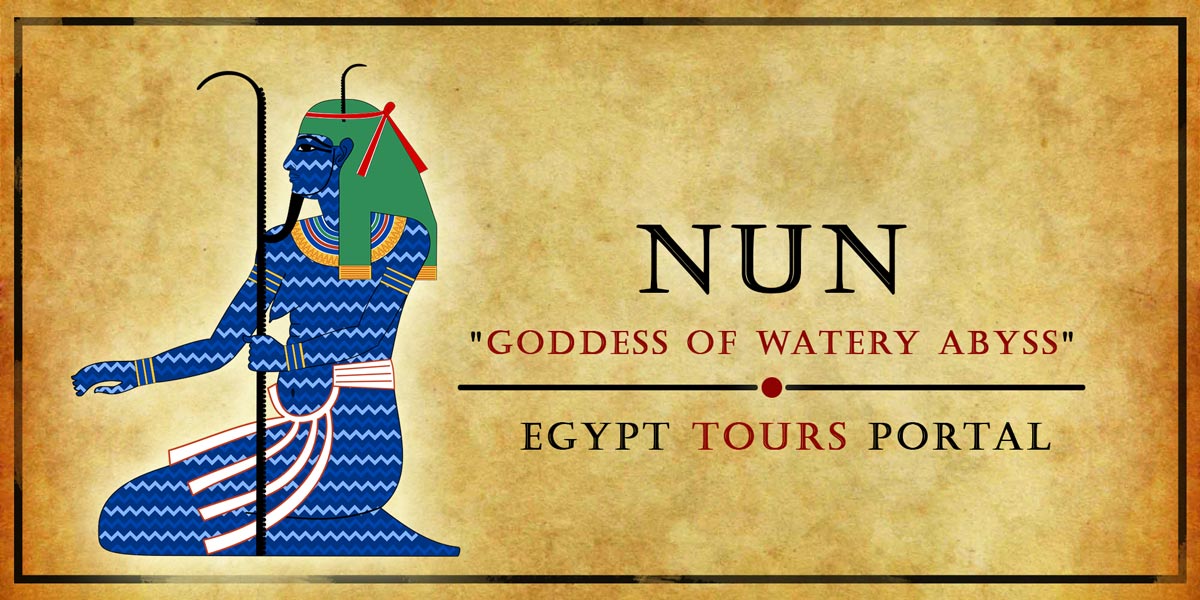
One of the most mysterious and enigmatic figures in ancient Egyptian mythology is the goddess Nun. She is often depicted as a frog-headed humanoid with an anthropomorphic form. Nun is a goddess who embodies both chaos and order, death and life, darkness and light. She is a powerful and mysterious force that transcends all boundaries and categories. She is both feared and revered by the ancient Egyptians, who recognized her as the source of all existence.
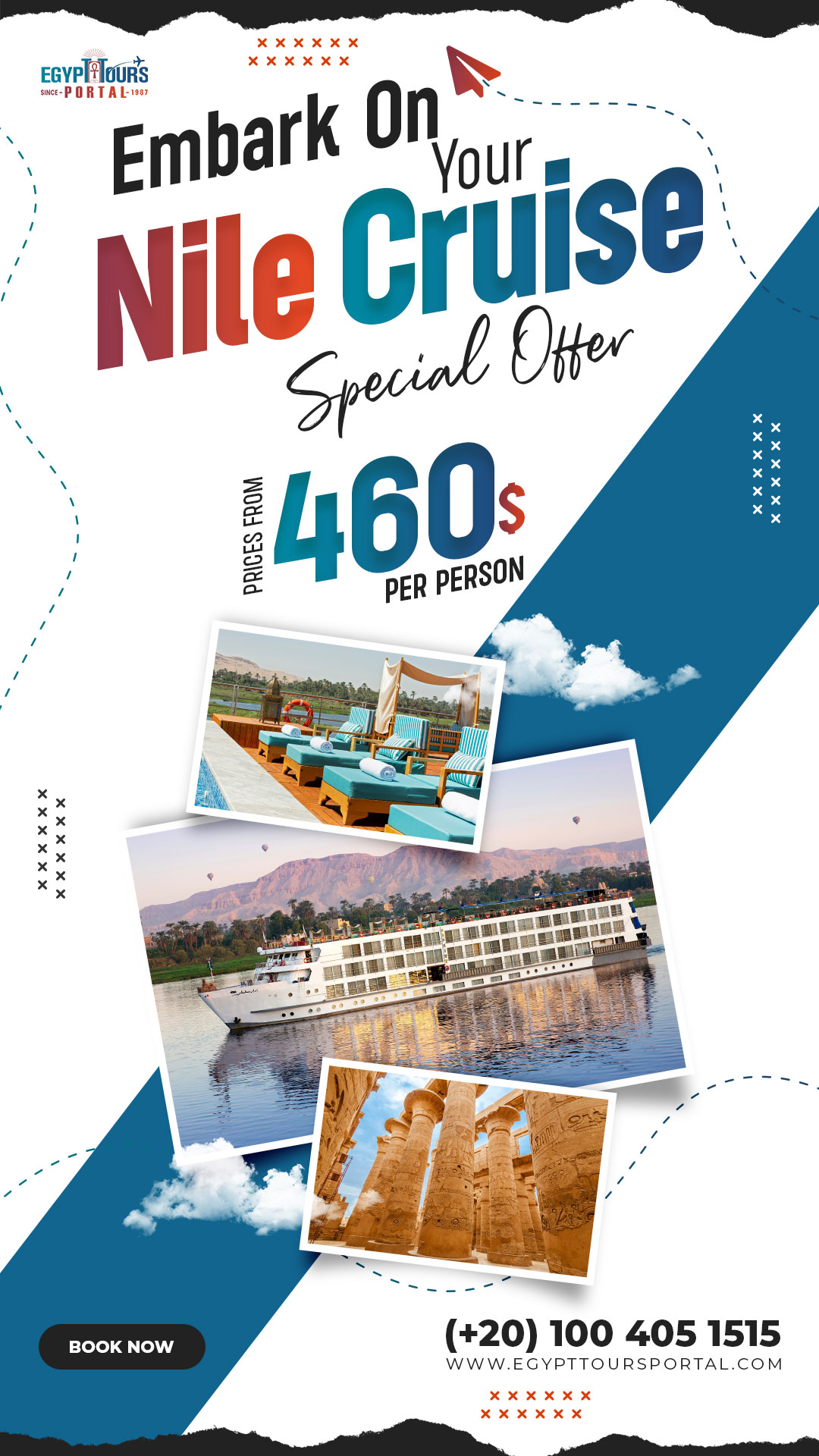 Nun is the primordial goddess of the watery abyss, the source of all life and creation. She is also known as Naunet, the feminine form of Nun. She is one of the eight deities of the Ogdoad, a group of four pairs of gods and goddesses of ancient Egypt who symbolize the chaos and darkness that existed before the world was formed. The other members of the Ogdoad are Amun and Amaunet (the hidden ones), Kuk and Kauket (the darkness), Huh and Hauhet (the infinity), and Niau and Niaut (the void). Nun is also connected to the afterlife and resurrection. She is believed to be present in the underworld, where she helps the souls of the dead to cross over to the other side. She also assists in the rebirth of Ra every morning, when he rises from her waters as a scarab beetle. She is also associated with Osiris, the god of death and resurrection, who was drowned in the Nile by his brother Seth. Nun helped Isis, Osiris' wife, and sister, to find his body and restore him to life.
Nun is the primordial goddess of the watery abyss, the source of all life and creation. She is also known as Naunet, the feminine form of Nun. She is one of the eight deities of the Ogdoad, a group of four pairs of gods and goddesses of ancient Egypt who symbolize the chaos and darkness that existed before the world was formed. The other members of the Ogdoad are Amun and Amaunet (the hidden ones), Kuk and Kauket (the darkness), Huh and Hauhet (the infinity), and Niau and Niaut (the void). Nun is also connected to the afterlife and resurrection. She is believed to be present in the underworld, where she helps the souls of the dead to cross over to the other side. She also assists in the rebirth of Ra every morning, when he rises from her waters as a scarab beetle. She is also associated with Osiris, the god of death and resurrection, who was drowned in the Nile by his brother Seth. Nun helped Isis, Osiris' wife, and sister, to find his body and restore him to life.
Nun is not only the mother of all living things but also the protector and sustainer of life also involved in the creation of the world and the ancient Egyptian gods. She provides the water that nourishes the plants, animals, and humans. She also supports the sky and prevents it from collapsing into the abyss. She is associated with the Nile River, which was considered to be a manifestation of her essence. The annual flooding of the Nile was seen as a sign of her generosity and fertility. Nun gave birth to a lotus flower that emerged from the abyss. According to the myth of creation, From this flower came Ra, the sun god, who then created the other gods and goddesses. According to another version, Nun was the consort of Atum, the first god who emerged from the abyss by his own power. Together they produced Shu, the god of air, and Tefnut, the goddess of moisture. These two then gave rise to Geb, the god of earth, and Nut, the goddess of the sky.
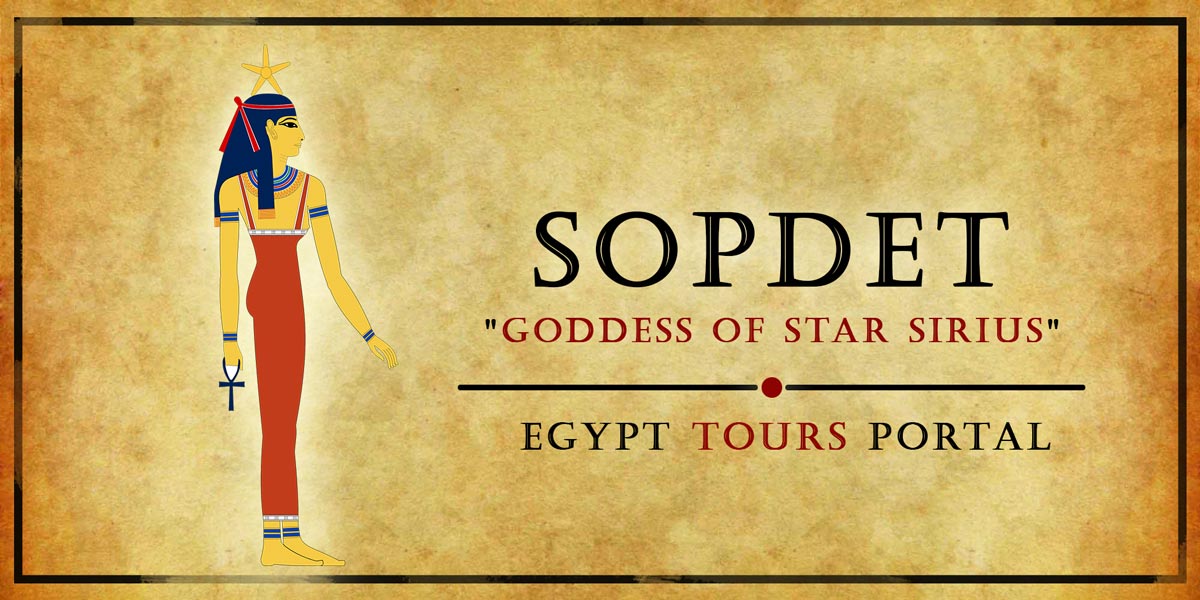
Sopdet was a goddess of the star Sirius, which was called Sothis by the Greeks. She was also known as the "Bringer of the New Year", as her heliacal rising (The first appearance of Sirius in the morning sky after a period of invisibility) marked the beginning of the Egyptian calendar. She was depicted as a woman wearing a crown with a five-pointed star or a cow's horn. She was sometimes identified with Isis or Hathor and was the consort of Sah, the god of Orion.
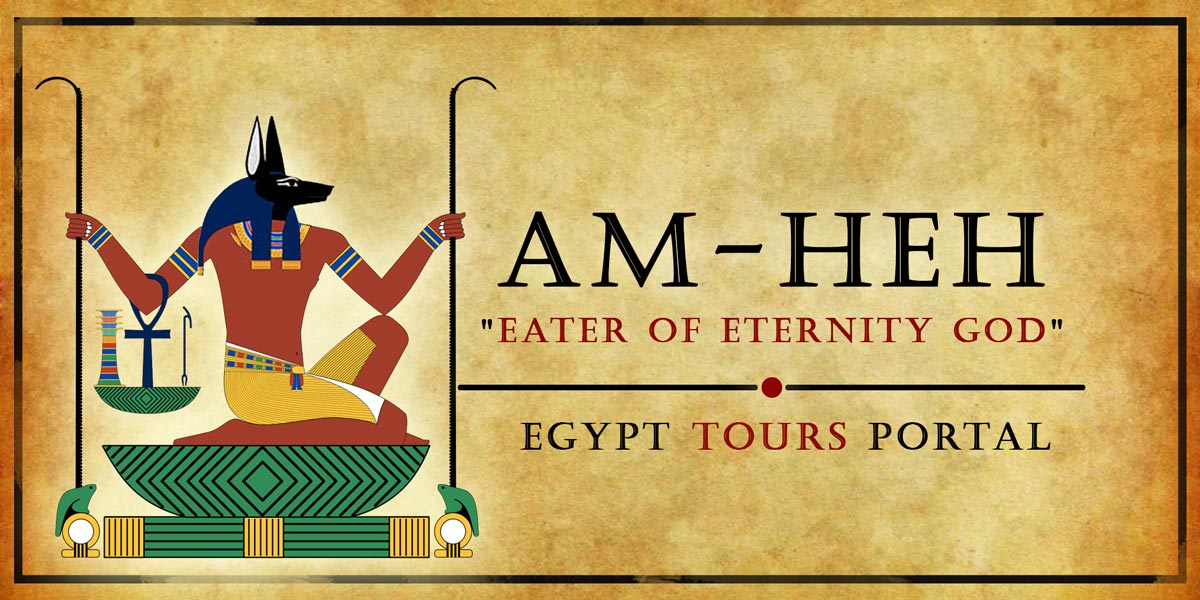
Am-heh was a lesser-known deity from the underworld in Ancient Egyptian mythology, whose name signified "Devourer of Millions" or "Eater of Eternity". He was commonly portrayed as a man with a hunting dog's head and was believed to reside in an epic lake of divine fire. In some interpretations, Am-heh was considered to be a vital aspect of Ammit, the embodiment of heavenly punishment. Atum, the god of creation, was the only one who could fend off Am-heh.
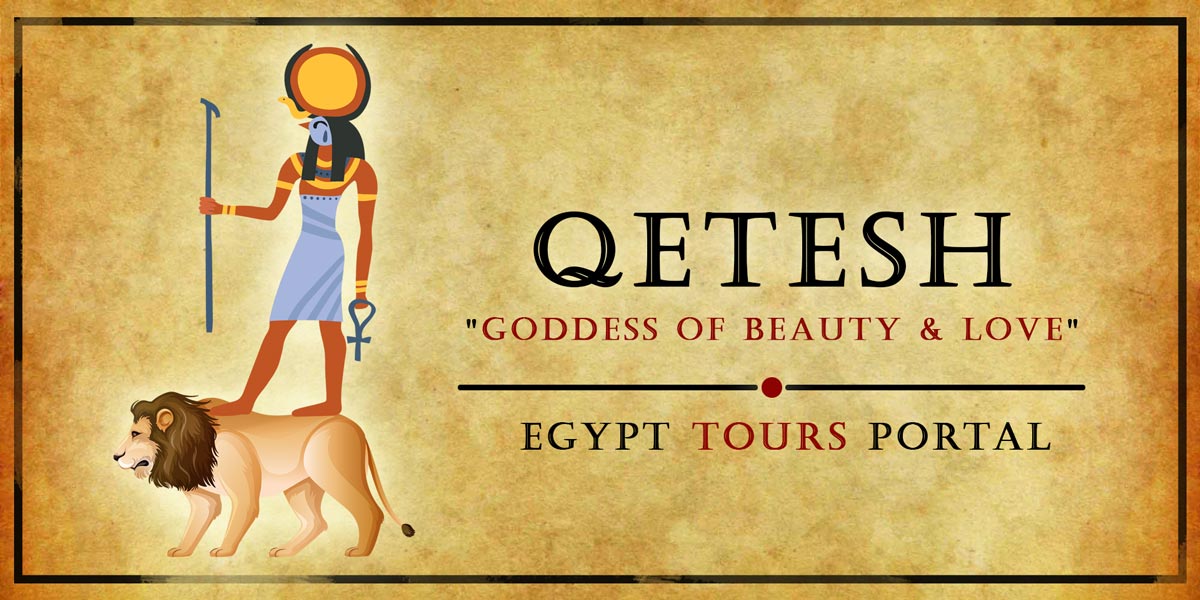
Qetesh was a goddess of love, beauty, and sexuality. She was originally a Canaanite deity who was adopted by the Egyptians during the New Kingdom period. She was depicted as a nude woman standing on a lion and holding flowers and snakes. She was often associated with Anat and Astarte, two other Canaanite goddesses who were also worshipped in Egypt.
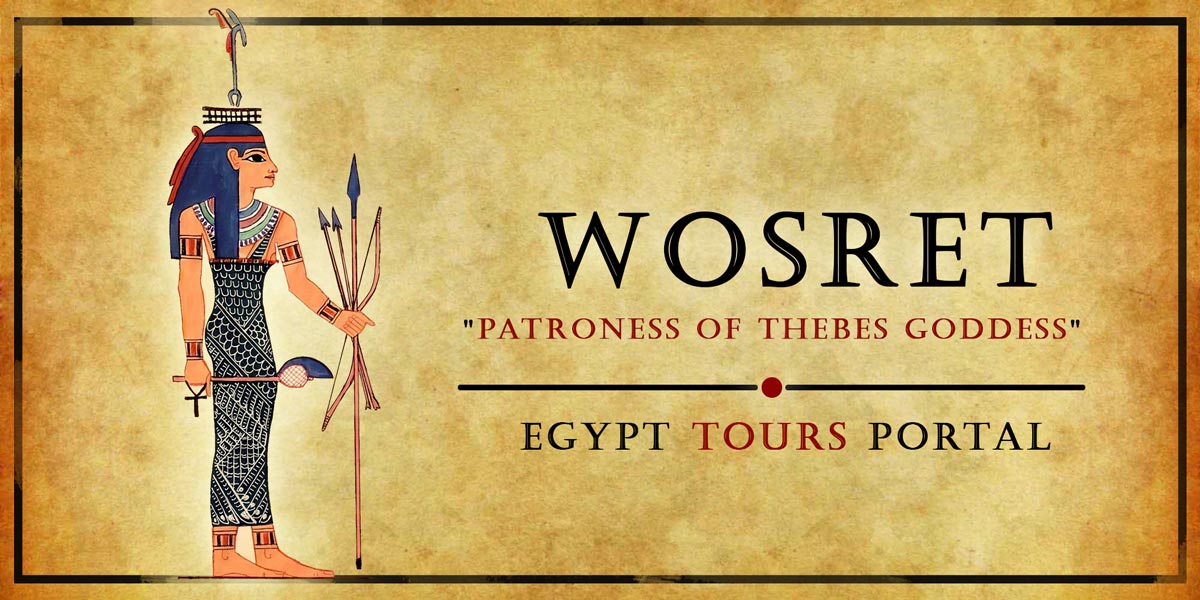
"The Powerful Female One" was the meaning behind the name of the goddess Wosret. She served as the patroness of Thebes, which was also known as Waset in ancient times. Despite being a minor Egyptian goddess during the Twelfth Dynasty about three pharaohs adopted her name into theirs which was translated to "Man of Wosret". Wosret was often depicted wearing a tall crown that possessed the Was scepter, symbolizing power, atop her head, and carrying a number of hunting weapons like a spear, bow, and arrows. While she was initially married to Amun, she was eventually overtaken by Mut.
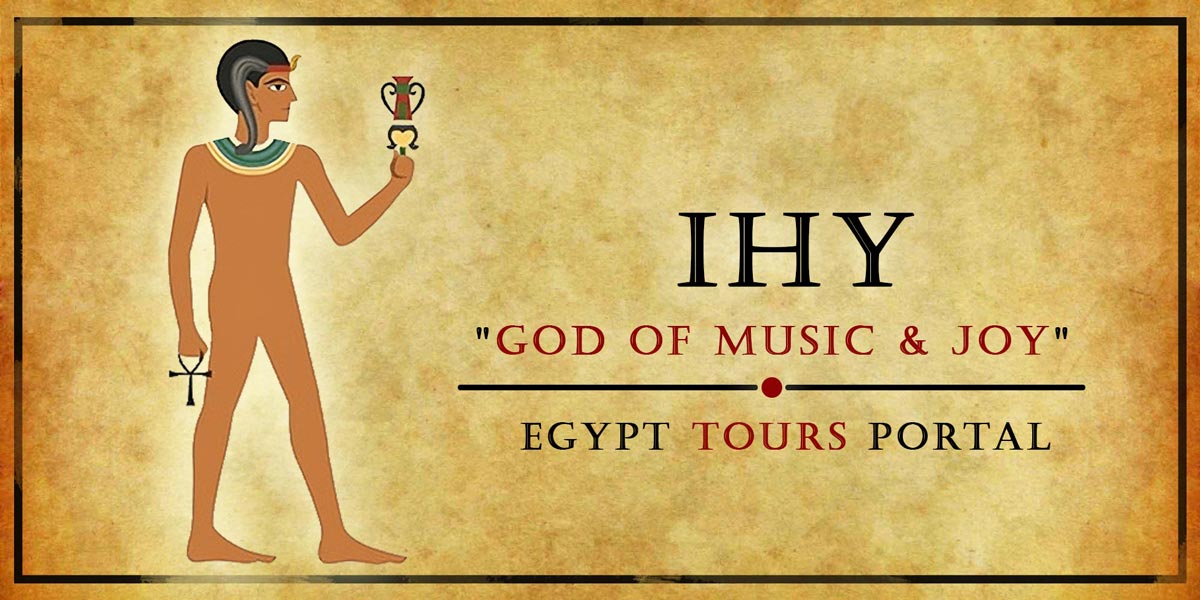
Ihy was an Egyptian god of music and joy. He was the son of Hathor and Horus (or Ra), and he played the sistrum (a musical instrument) for his mother. He was depicted as a child with curly hair and holding a sistrum or a papyrus scepter. He was also associated with the sacred bull Apis.

Heket is another name for Heqet, the frog goddess was an ancient Egyptian goddess of fertility, childbirth, and midwifery. She was depicted as a frog or a woman with a frog's head. She was associated with the annual flooding of the Nile, which brought life and fertility to the land. She was also believed to assist women in labor by breathing life into their newborns. Heqet was often shown holding a symbol of life (ankh) or a lotus flower. She was worshipped mainly in the city of Her-wer, where a temple was dedicated to her. She was also linked to other deities, such as Osiris, the god of the underworld, and Khnum, the god of creation. Heqet was sometimes considered to be the wife of Khnum, who formed the bodies of humans on his potter's wheel and then asked Heqet to give them life. Heqet was also one of the four Egyptian goddesses who protected the canopic jars that contained the organs of the mummified dead. She guarded the jar that held the lungs, which symbolized breath and life.
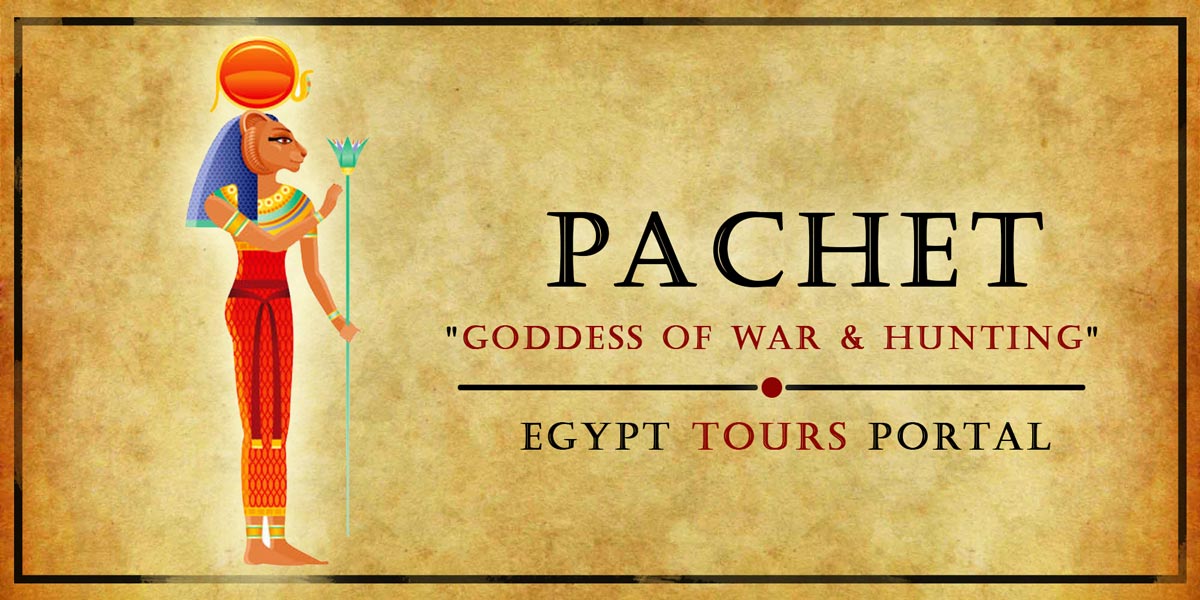
Pachet was also known as Pakhet or Pashtet, which means "She Who Scratches". Pachet was the Egyptian goddess of war and hunting, often depicted as a lioness or a woman with a lioness head. She was the protector of the eastern desert and the oases, where she hunted down enemies and prey. She was also linked to the Nile flood, which brought fertility and prosperity to the land. She was worshipped at Speos Artemidos, where she had a rock-cut sanctuary dedicated by Hatshepsut, one of the few female pharaohs.
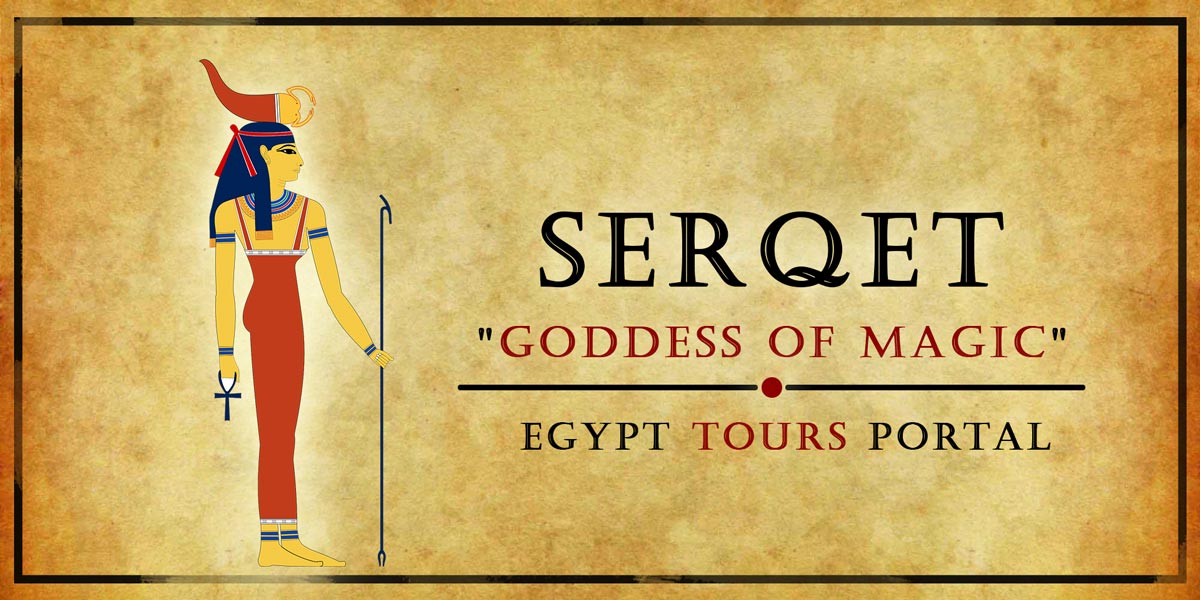
Serqet (also spelled Selket, Serket, or Serqit) was a goddess of healing, protection, and magic. She was often depicted as a woman with a scorpion on her head or as a scorpion with a woman's head. She was especially revered by those who worked with venomous animals, such as snake charmers and magicians. She was also the protector of the canopic jar that contained the intestines of the deceased in the mummification process. She was sometimes considered to be one of the four sons of Horus, along with Duamutef, Hapi, and Qebehsenuef. She was also associated with the goddesses Isis, Nephthys, and Neith.
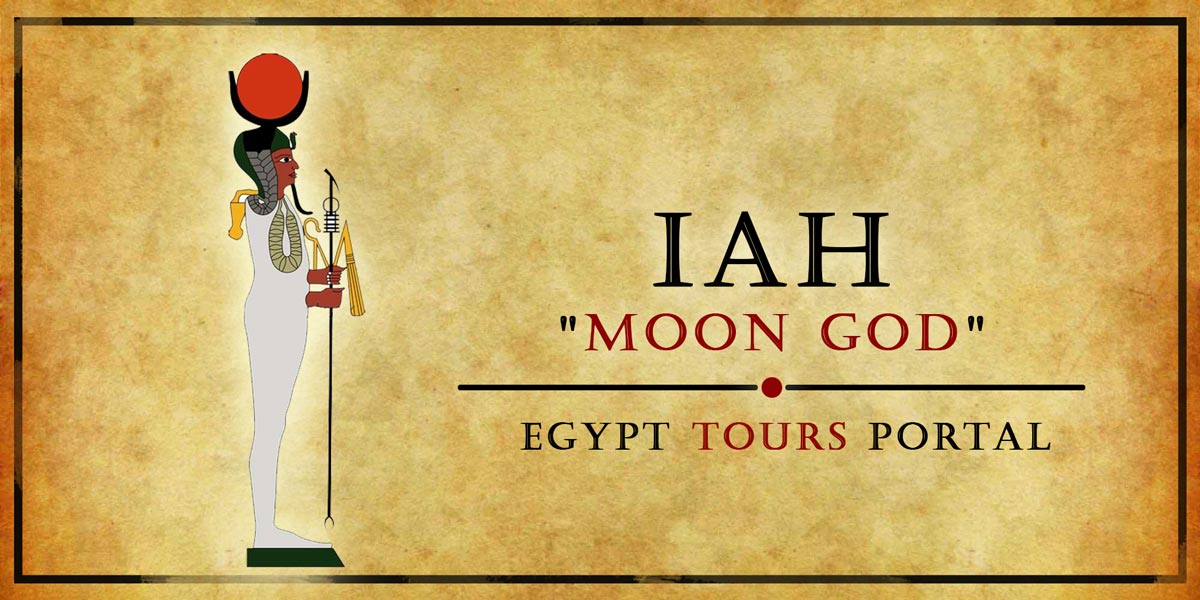
Iah is a lunar deity whose name means "Moon" in Egyptian. He is often depicted as a man wearing a crescent moon on his head, or as a falcon-headed god. He is sometimes considered an aspect of Khonsu, the god of the moon. He is associated with Thoth, the god of wisdom and writing, and with Osiris, the god of the underworld and resurrection.
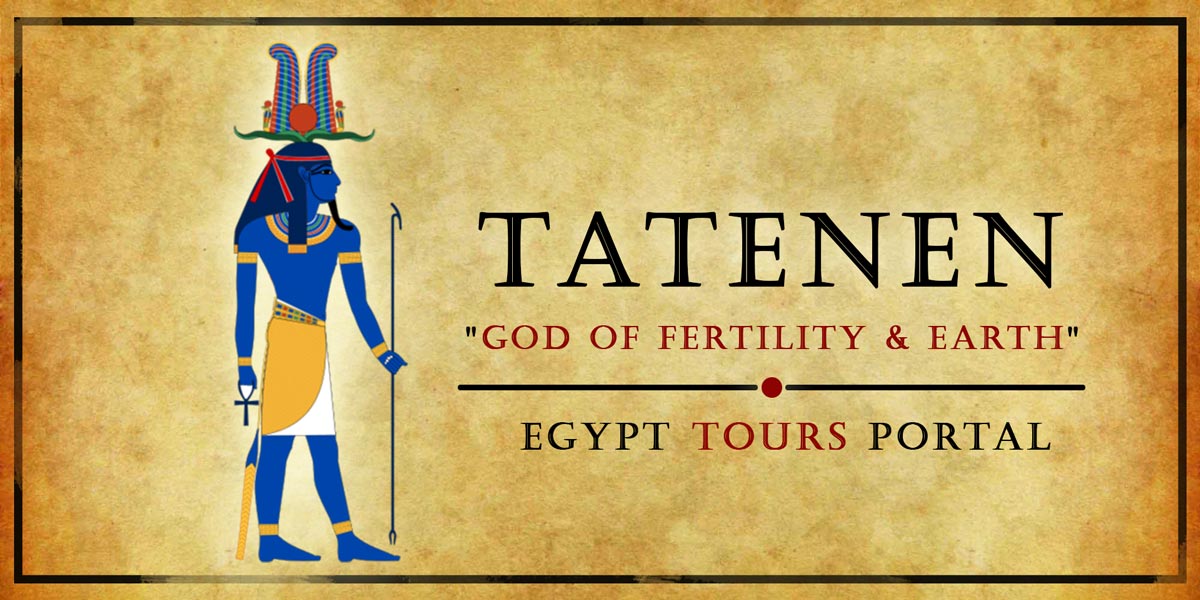
Tatenen (also spelled Tatjenen or Ta-Tenen) was a god of creation, fertility, and the earth. He was often depicted as a man with a ram's head or horns wearing a crown of ostrich feathers. He was the personification of the primordial mound that emerged from the waters of chaos at the beginning of time. He was also the source of all life and vegetation on Earth. He was sometimes considered to be an aspect of Ptah, the god of craftsmen and creation. He was also associated with the gods Osiris, Geb, Shu, and Atum.
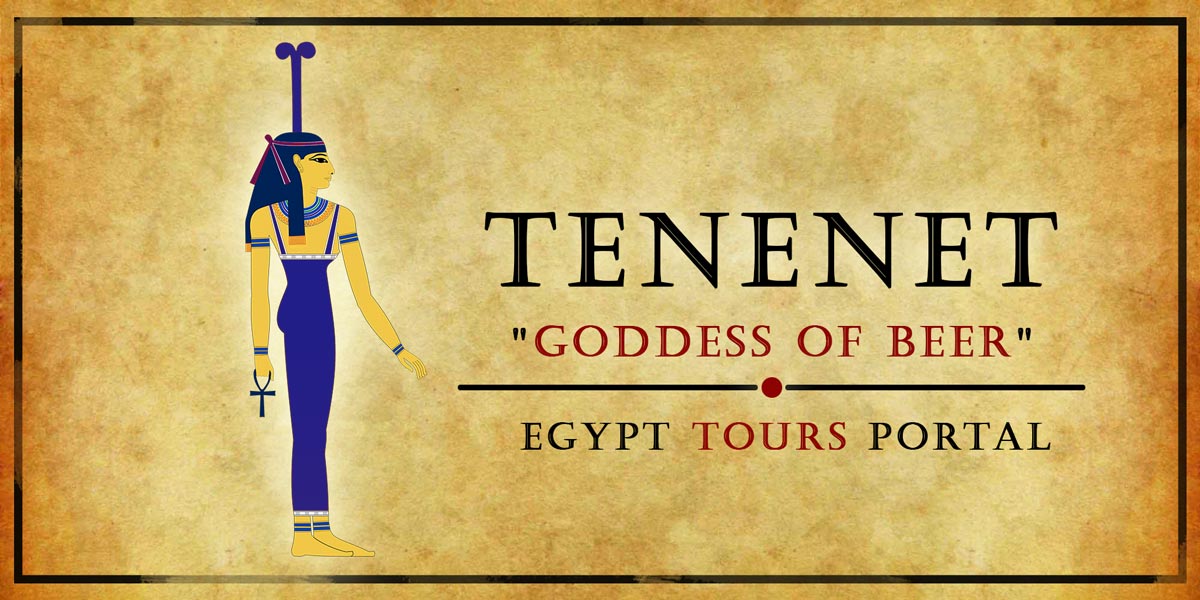
Tenenet (also spelled Tenenit or Tjenenet) was a goddess of beer, bread, and fertility. She was often depicted as a woman holding a loaf of bread and a jug of beer. She was the patroness of brewers and bakers, and she provided them with the ingredients and skills to make their products. She was also invoked by women who wanted to conceive children or have an easy childbirth. She was sometimes considered to be an aspect of Hathor, the goddess of love and joy. She was also associated with the ancient Egyptian goddesses Renenutet, Sekhmet, and Mut.
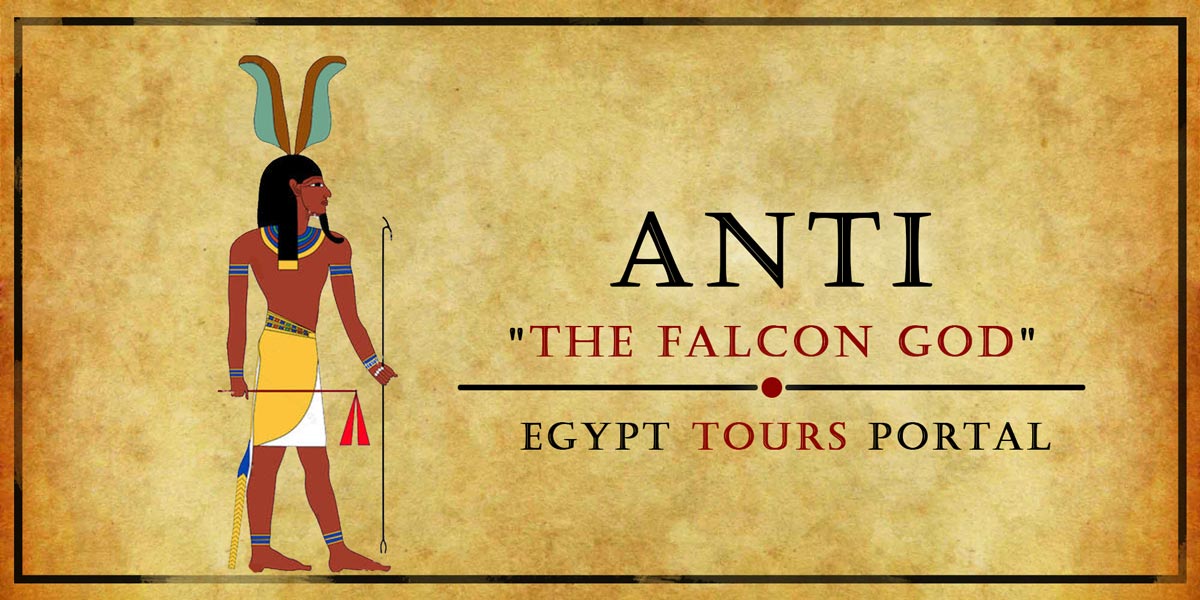
Anti (also spelled Andjety or Anet) was a god of hunting, war, and royalty. He was often depicted as a man with a falcon head wearing a crown with two tall plumes. He was the protector of hunters and warriors, and he granted them strength and courage in battle. He was also the guardian of the eastern horizon and the sunrise. He was sometimes considered to be an aspect of Horus, the god of kingship and the sky. He was also associated with the gods Ra, Montu, and Anhur.
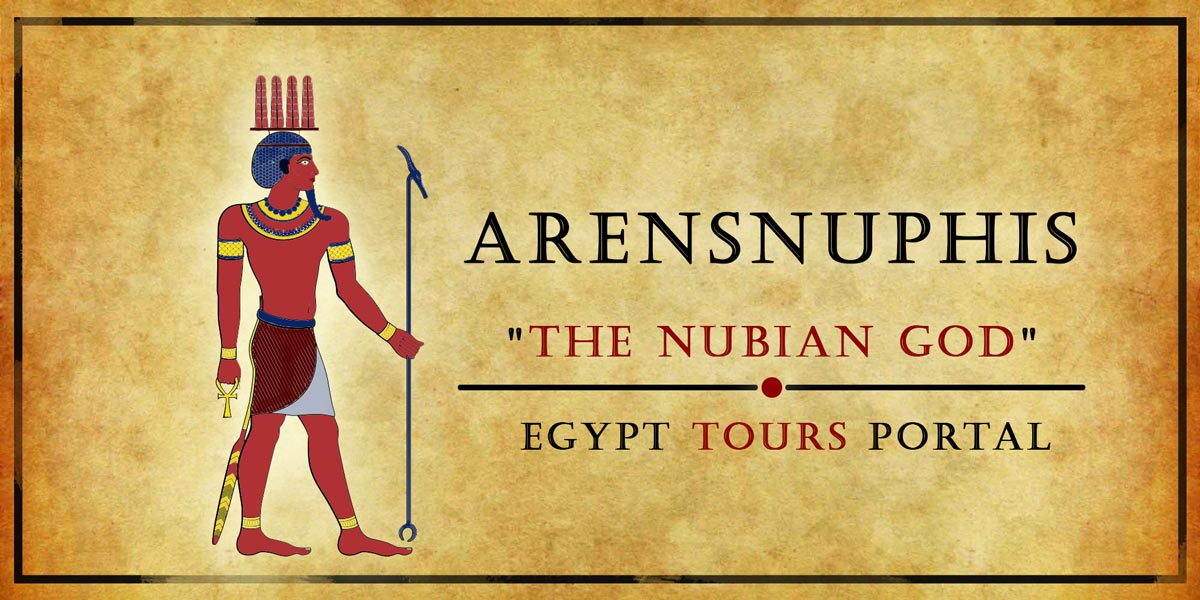
Arensnuphis (also spelled Arsnuphis or Harensnuphis) was a god of Nubia, a region south of Egypt that had close cultural ties with Egypt. He was often depicted as a man wearing a plumed crown or lion skin. He was worshipped as a god of healing, fertility, and prosperity. He had a temple at the Philae complex, an island in the Nile that was sacred to Isis. He was sometimes considered to be an aspect of Osiris, the god of the underworld and resurrection. He was also associated with the Egyptian gods Khnum, Anukis, and Mandulis.
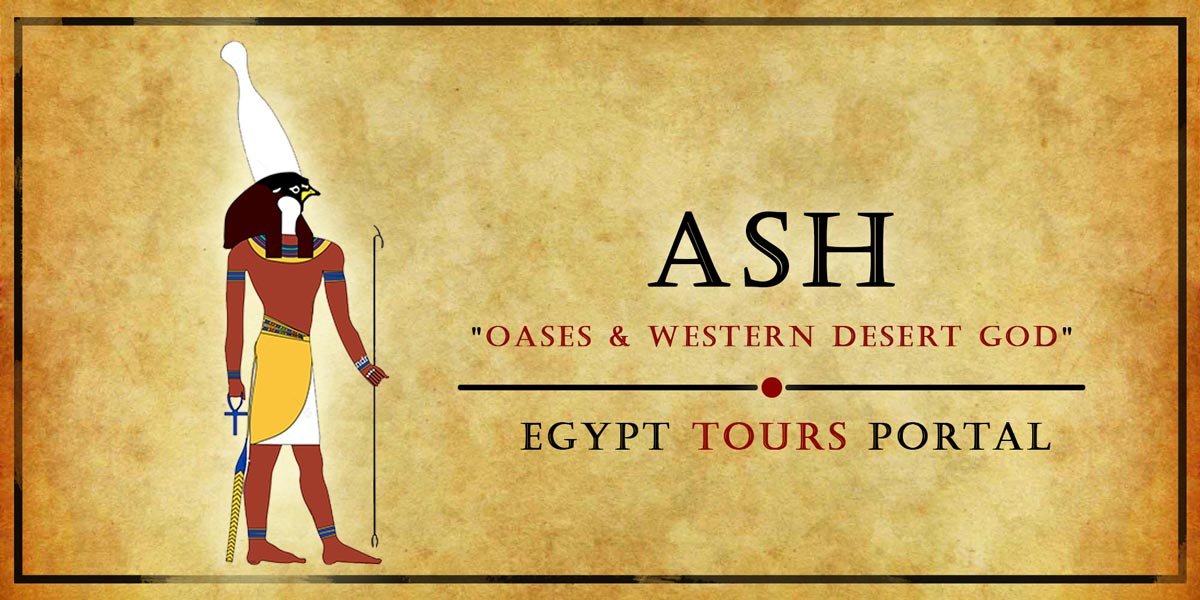
Ash was a god of the western desert and the oases. He was associated with the protection of the Libyan tribes who lived in the desert and traded with Egypt. He was also a god of war and hunting and was depicted as a human with the head of a lion or a falcon. He carried a bow and arrows and sometimes wore a crown of ostrich feathers. Ash was often linked with Set, the Egyptian god of chaos and storms, who also had a connection to the desert. Ash's name means "The One Who is Powerful" or "The One Who is Fierce".
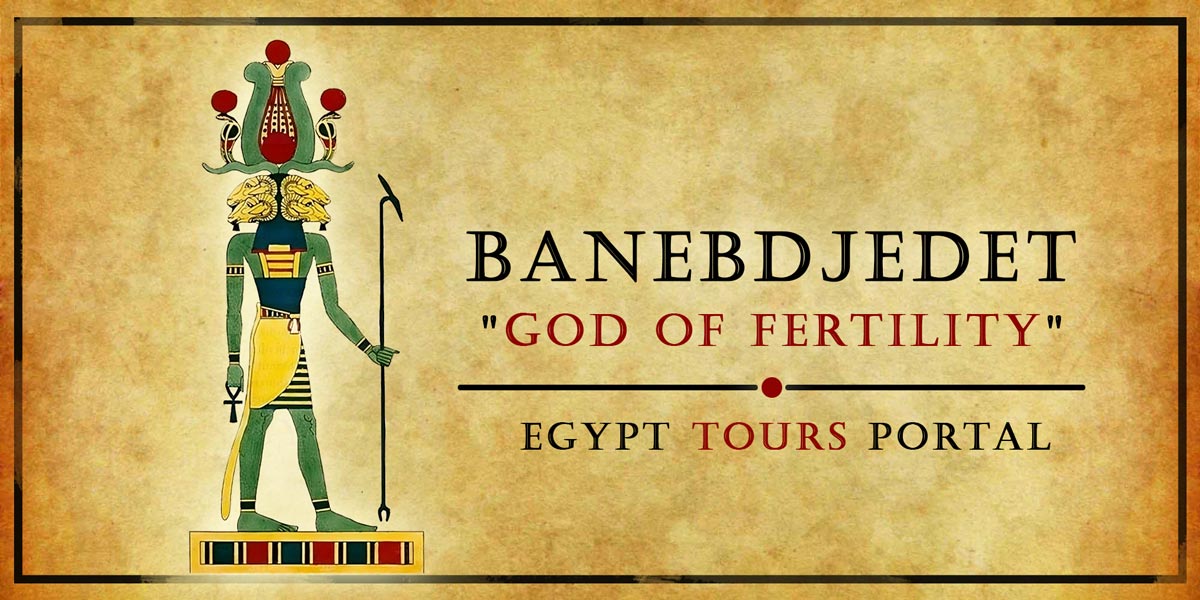
Banebdjedet was a ram-headed god of fertility and sexuality. He was worshipped in Mendes, a city in the eastern Delta region of Egypt. His name means "The ba (soul) of the lord of Mendes". He was considered to be the ba of Osiris, the god of the underworld and resurrection, and sometimes merged with him. He was also the consort of Hatmehit, a fish goddess who was the patroness of Mendes. Banebdjedet was depicted as a ram or a man with a ram's head, wearing a crown with four plumes. He was associated with the Nile's annual flooding, which brought life and prosperity to the land.
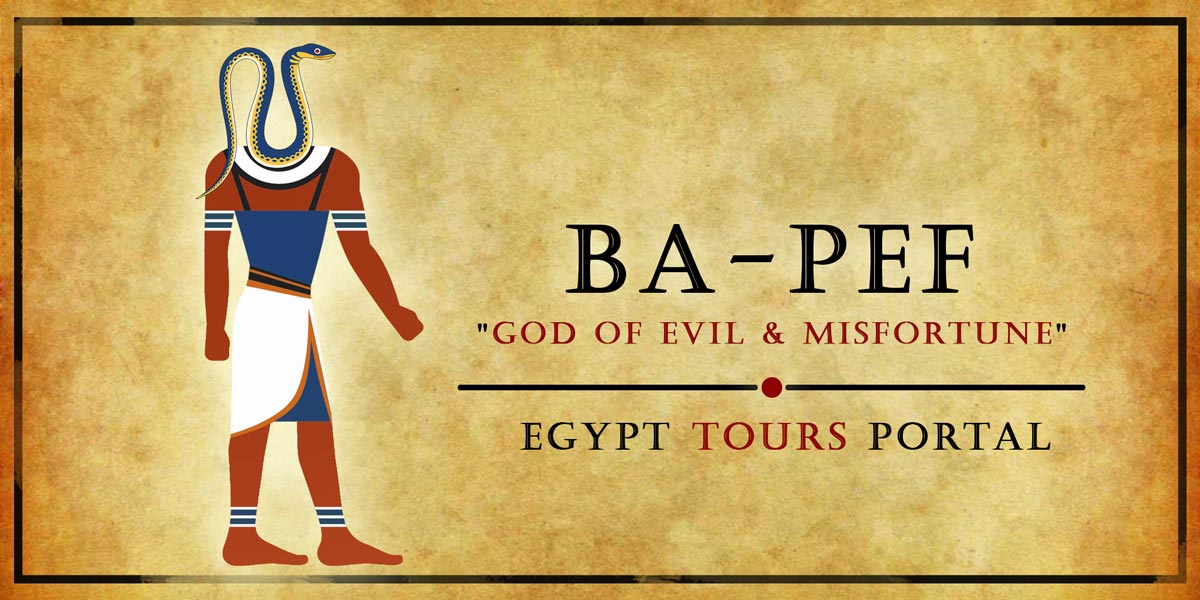
Ba-Pef was a mysterious god whose name means "That ba (soul)". He was a malevolent and obscure deity who dwelled in the darkness and dated to the old kingdom. He was feared by the ancient Egyptians as a source of evil and misfortune. He was sometimes regarded as the son or brother of Neith, the Egyptian goddess of war and creation, who was also worshipped in the Delta region. Ba-Pef was depicted as a snake or a man with a snake's head. He had no temples or cults dedicated to him, but he was invoked in spells and curses to harm one's enemies.

Dedunet was a goddess of weaving and textiles. She was worshipped in Akhmim, a city in Upper Egypt. She was the daughter of Min, the god of fertility and lettuce, and Iabet, the goddess of childbirth and the East. She was also the sister and consort of Khnum, the god of pottery and creation, who fashioned humans from clay on his potter's wheel. Dedunet was depicted as a woman holding a spindle or a shuttle. She was associated with the production of linen and clothing, which were essential for both life and death in ancient Egypt.
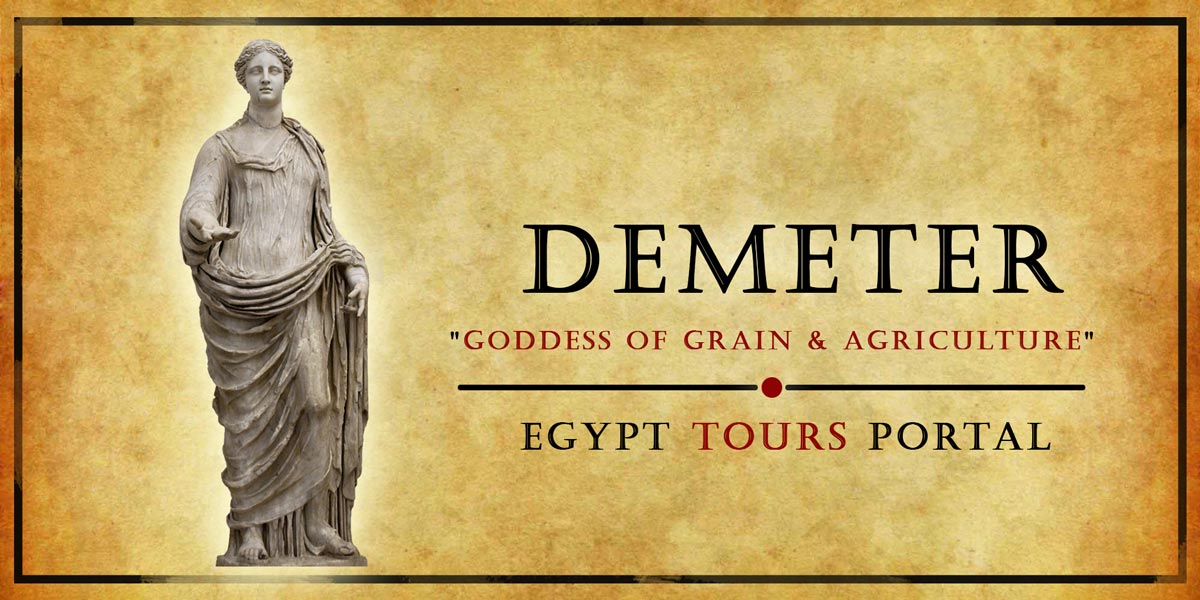
Demeter was not an Egyptian deity, but a Greek goddess who was adopted by the Ptolemaic dynasty (305 to 30 BCE). She was the goddess of agriculture and grain, and the mother of Persephone, who was abducted by Hades, the god of the underworld. Demeter's grief caused the seasons to change and the crops to fail until her daughter was returned to her for part of the year. Demeter was worshipped in Alexandria, where she had a temple dedicated to her. She was also syncretized with Isis, the Egyptian goddess of magic and motherhood.
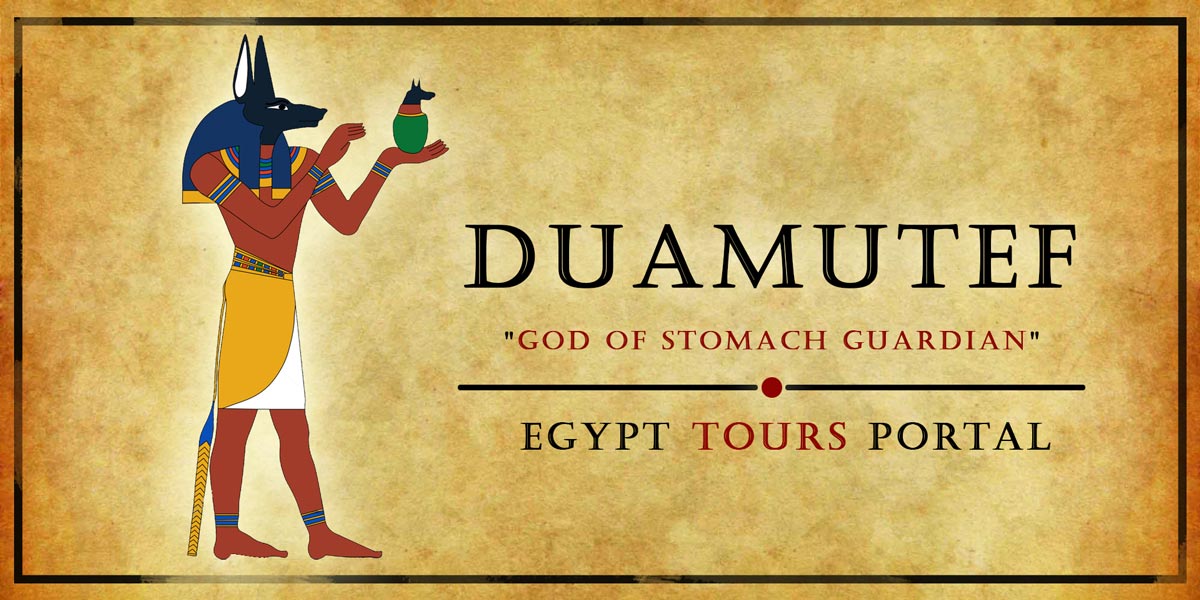
Duamutef was one of the four sons of Horus, who guarded the internal organs of the deceased that were stored in canopic jars during mummification. He protected the stomach and was associated with the east cardinal point. Duamutef was one of the four sons of Horus who protected the internal organs of the deceased. He was associated with the canopic jar that contained the stomach and was depicted as a human with a jackal head. He was also a guardian of the East and a helper of Anubis in the mummification process.
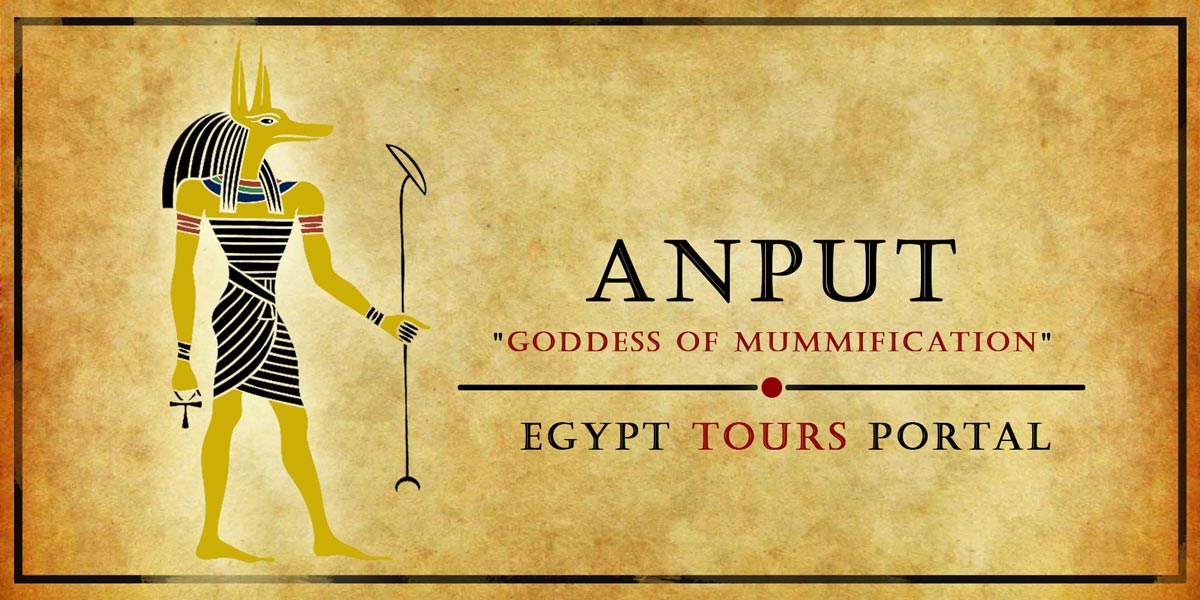
Anput is an ancient Egyptian goddess of funerary rites and mummification. She is the female counterpart of the jackal-headed god Anubis and is sometimes depicted as a woman with a jackal head or a jackal wearing a ribbon. Her name means "a place of opening", referring to the process of embalming the dead. She had a significant role in the afterlife as she assisted Anubis in preparing the bodies of the deceased for the journey to the underworld. She was known as the protector of the body of Osiris. She also helped to protect the tombs and the mummies from robbers and scavengers. Anput was sometimes associated with other Egyptian goddesses of death and rebirth, such as Isis, Nephthys, and Hathor. She had a temple dedicated to her in Asyut, where she was venerated alongside Anubis and their son Kebechet, who was also a goddess of embalming during the middle kingdom.
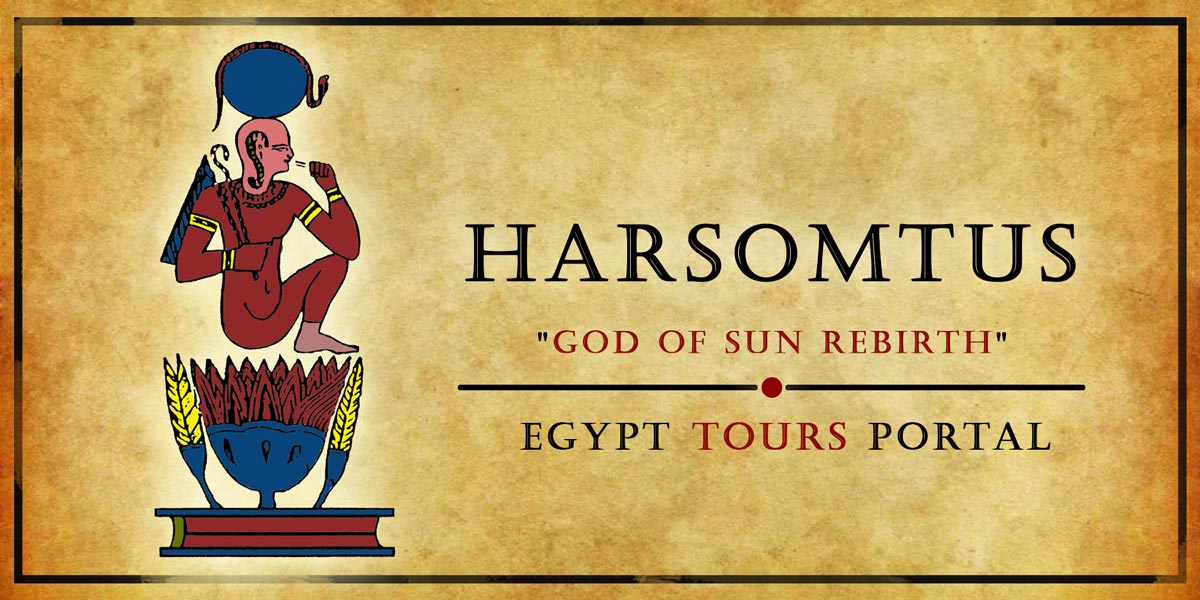
Harsomtus god of the sun rebirth was a form of Horus as a child who represented the rebirth of the sun every morning. He was also known as Harpocrates in Greek and was associated with silence and secrecy. He was depicted as a naked boy with a finger on his mouth and a sidelock of youth. He was sometimes shown emerging from a lotus flower or being suckled by Isis.
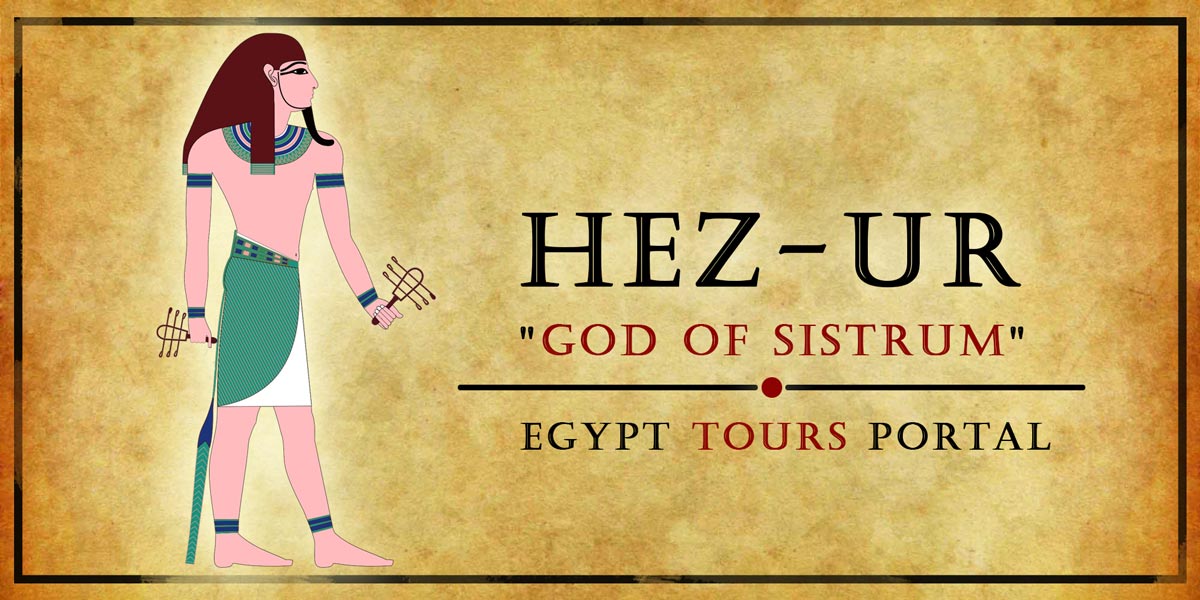
Hez-ur was an ancient Egyptian god of music who played the sistrum, a musical instrument that produced a rattling sound. He was also linked with the cult of Hathor, the goddess of music and joy. He was depicted as a bearded man with a sistrum or as a baboon holding a sistrum.
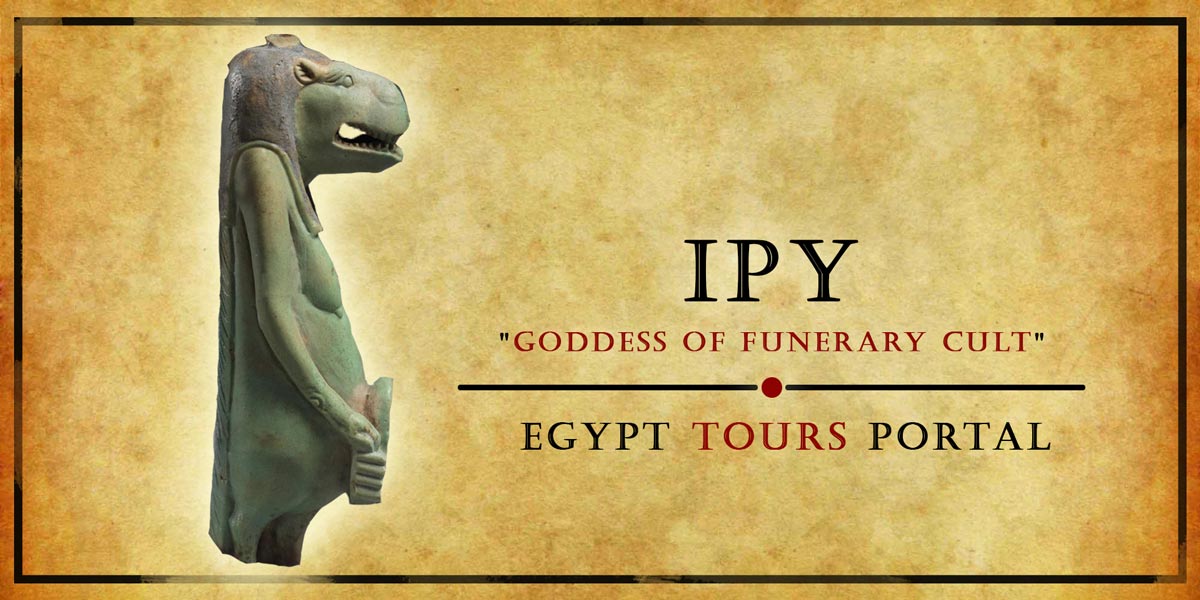
Ipy is an ancient Egyptian goddess who was associated with the funerary cult and the protection of the deceased. She was depicted as a hippopotamus, sometimes wearing a wig or a headdress. She was also one of the four goddesses who guarded the canopic jars that contained the internal organs of the mummified body. She was believed to help the deceased in their journey through the afterlife, by providing them with food and water. She was known as the mistress of magical protection as referenced in the pyramid texts plus known as the mother of Osiris. She was invoked as a guardian of the entrance to the underworld, along with other hippopotamus goddesses such as Taweret. She sometimes held a lotus flower, which represented resurrection and purity. She was also shown nursing a child, which emphasized her maternal aspect and her connection to Hathor.
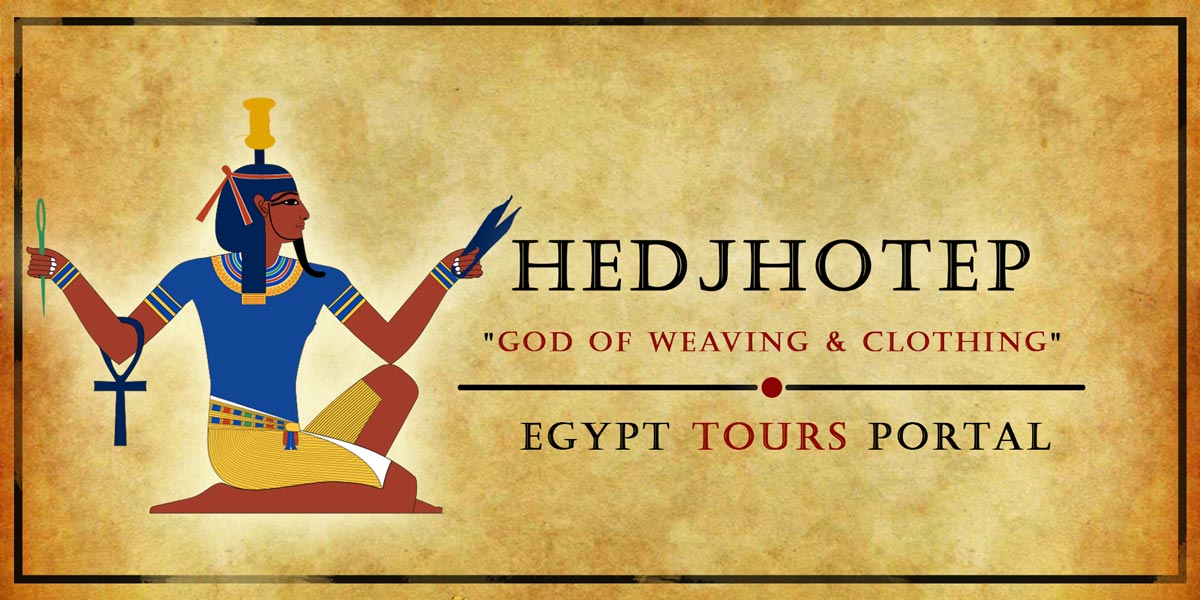
Hedjhotep was an ancient Egyptian god who was associated with weaving and clothing. He was depicted as a man wearing a long garment and holding a pair of scissors or a needle and thread while home an Ankh, Djed, and a specter. He was known as the creator of the clothes of the gods, goddesses, kings, queens, and the deceased. Hedjhotep was worshipped mainly in the Delta region, especially at Mendes and Buto. He was considered to be the patron of weavers, tailors, and linen workers. He was also regarded as a son of Ra. He was also believed to have a role in the mummification process, as he helped to dress the deceased in their funerary garments. Hedjhotep was often linked with other gods of weaving and clothing, such as Neith, Ptah, and Khnum, Plus had a connection with Anubis and Osiris.
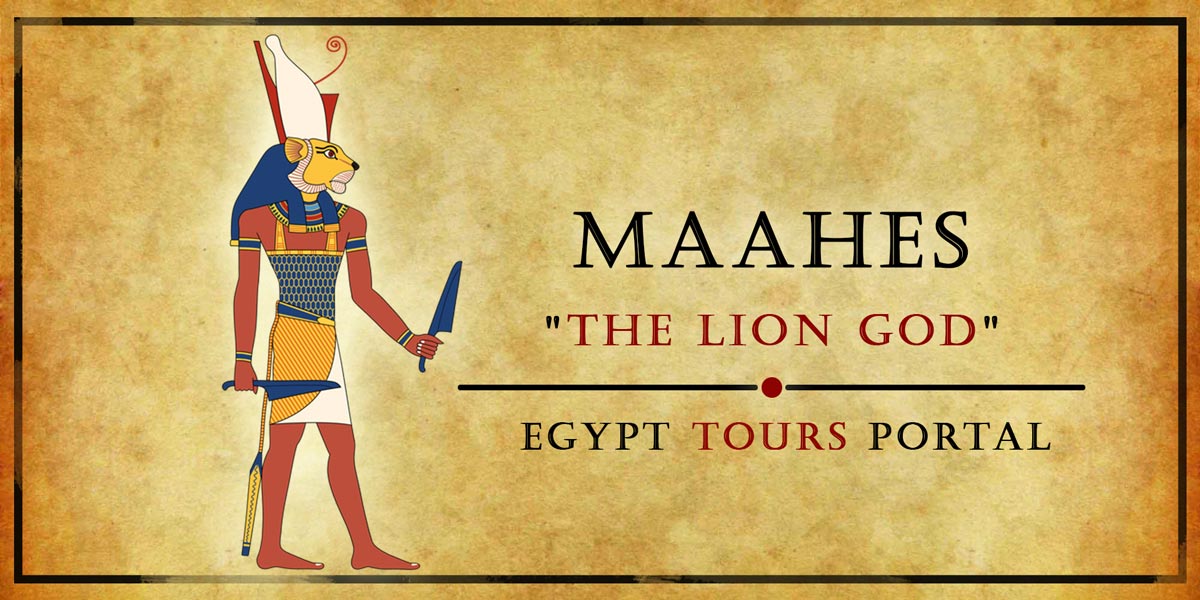
Maahes pronounced like Mihos or Miysis, was a lion Egyptian god who was associated with war, weather, and protection. He was often depicted as a man with a lion head wearing a headdress of a solar disk and a uraeus (Cobra). He was worshipped mainly in Leontopolis, where he had a temple dedicated to him. He was also linked to the pharaohs, who claimed him as their patron and protector.
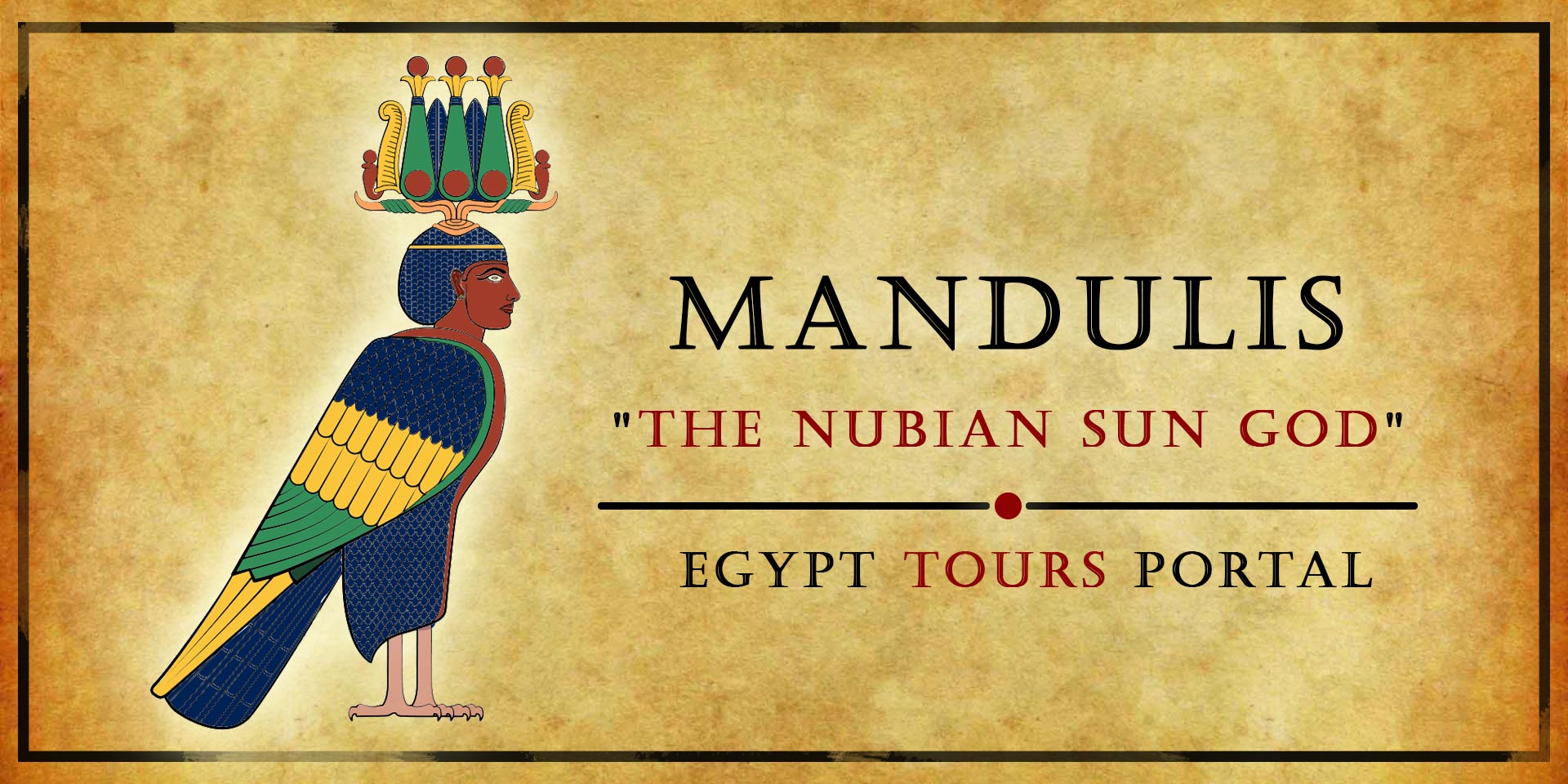
Mandulis has many names like Merwel or Arensnuphis and was a Nubian god who was associated with the sun, fertility, and healing. He was often depicted as a man wearing a feathered crown with two tall plumes and a sun disk. He was worshipped mainly in Lower Nubia, where he had temples at Kalabsha and Philae. He was also linked to Isis, who was his consort and co-ruler.
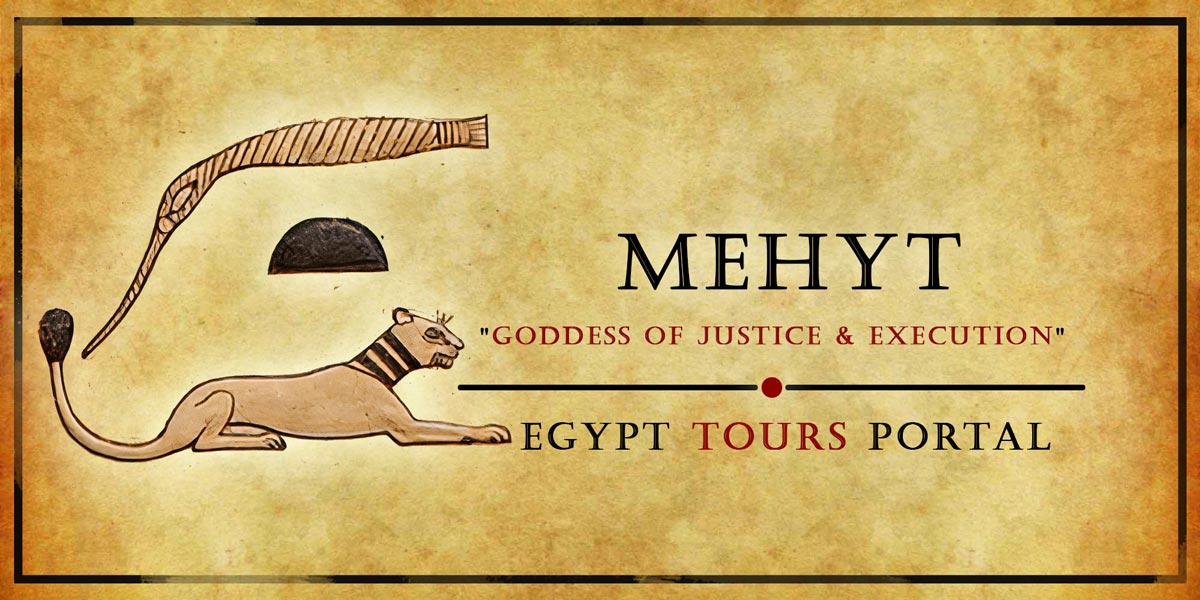
Mehyt known under the name Mehit or Mafdet, was a lioness Egyptian goddess who was associated with hunting, justice, and execution. She was often depicted as a woman with a lion head or a lioness with a uraeus on her forehead. She was worshipped mainly in Memphis, where she had a cult center near the pyramid of Teti. She was also linked to Onuris, who was her husband and companion. She was personified as the brow of Ra.
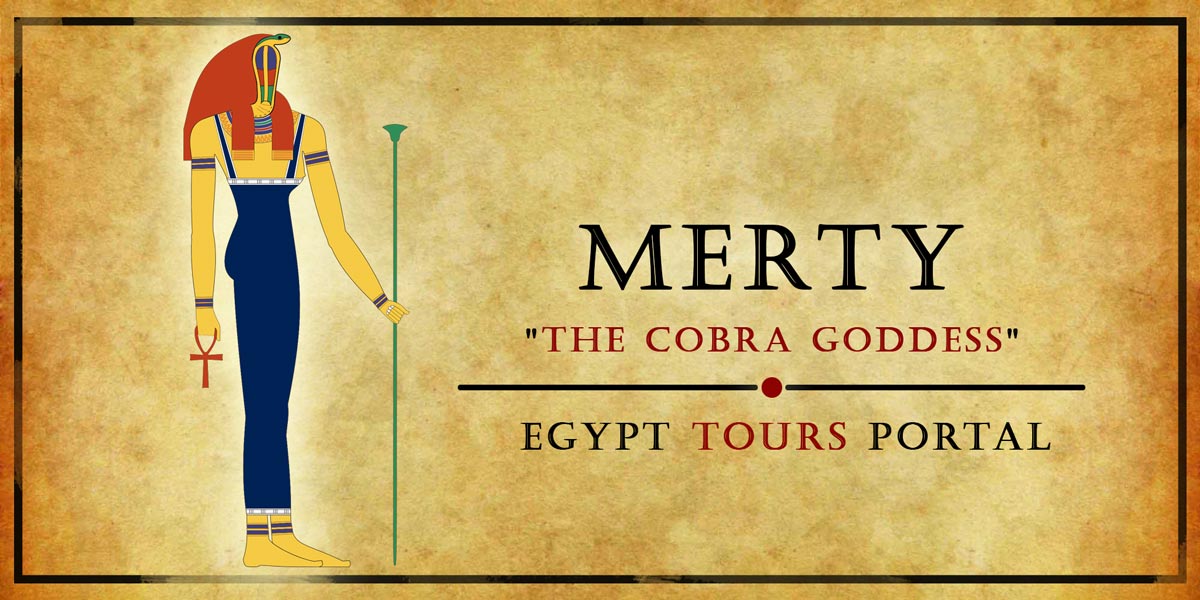
Merty had a number of names known as Meret or Mertseger who was a cobra goddess who was associated with the necropolis, guardianship, and punishment. She was often depicted as a cobra or a woman with a cobra head. She was worshipped mainly in Thebes, where she had a shrine on top of the peak of Deir el-Bahri. She was also linked to the workers who built and decorated the tombs in the Valley of the Kings, whom she either rewarded or punished according to their deeds.
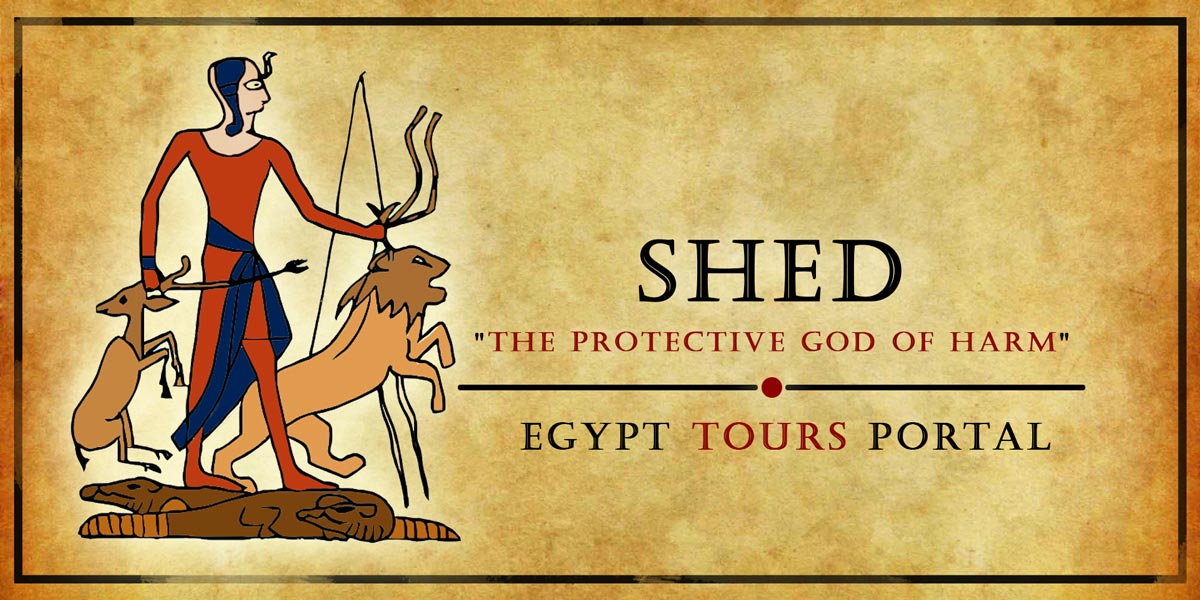
Shed was an ancient Egyptian god who was worshipped as a protector against dangerous animals and diseases. He was depicted as a young boy with a lion's head or a lion's tail, holding a knife or a snake in his hand in the shape of a powerful hunter. Shed was associated with the sun Egyptian god Ra and the sky god Horus, and he was sometimes called "The Savior of Ra" or "the son of Horus". Shed's cult was popular during the late New Kingdom and the Third Intermediate Period, especially in the Delta region and the Theban area. He was also venerated by foreigners living in Egypt, such as the Nubians and the Libyans. Shed's name means "the one who rescues" or "the one who is powerful", and he was believed to have magical abilities to heal and protect people from harm as he was able to provide the needed assistance and extend a person's time in this mortal world before going to the afterworld.
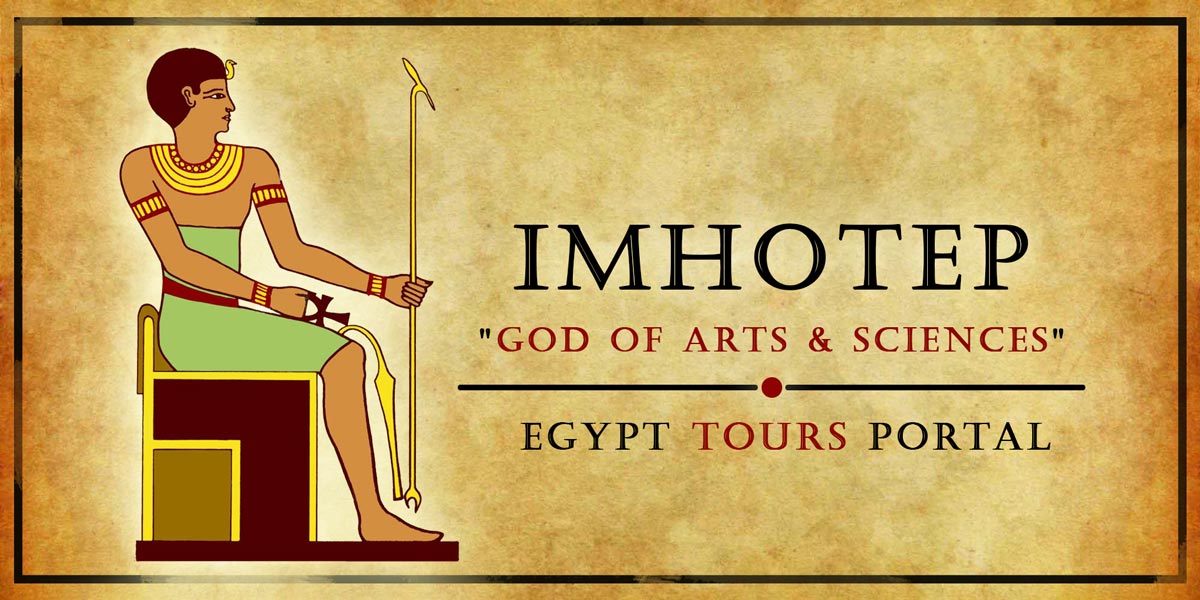
Imhotep is a deified polymath who acted as an architect, physician, and scribe who lived during the Third Dynasty of Egypt. He is credited with designing and building the Step Pyramid of Djoser, the first monumental stone structure in Egypt. With the passing of time, he became a legendary figure who rose in the minds of ancient Egyptian as a god. He is also regarded as a patron of medicine and healing and as a teacher of various arts and sciences. He is often depicted as a man wearing a papyrus scroll on his head, or as a man with a lion's head.
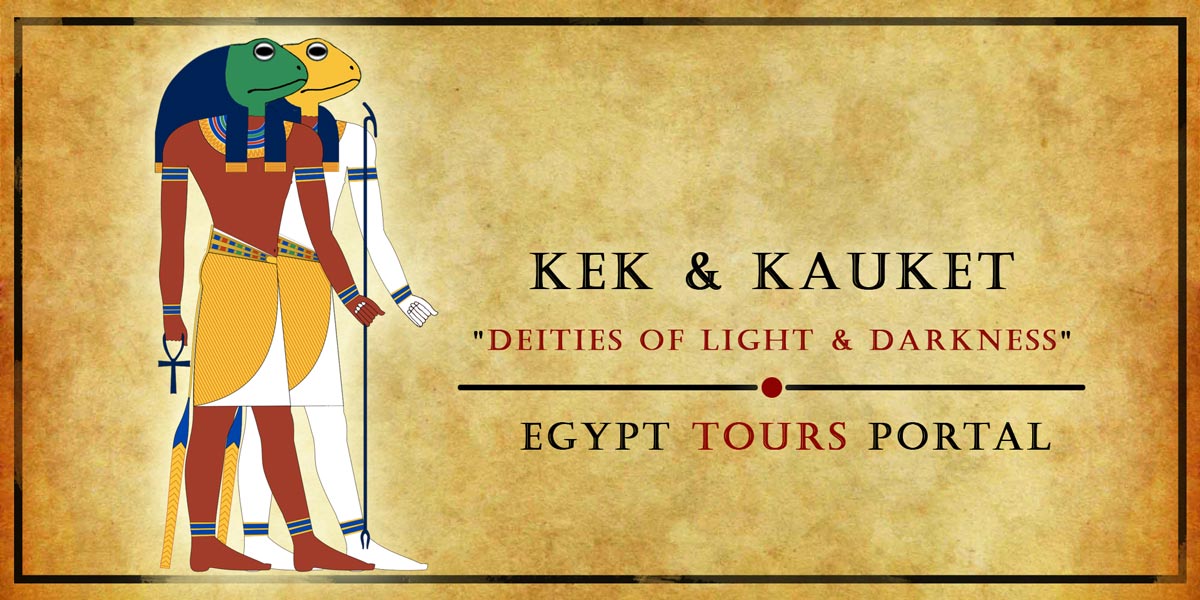
Kek and Kauket are ancient Egyptian deities who represent primordial darkness and chaos. They are part of the Ogdoad, a group of eight gods who were worshipped in Hermopolis during the Old Kingdom period. Kek and Kauket are depicted as frogs or as humans with frog heads, symbolizing their connection to the waters of Nun, the source of all creation. They are also associated with the night and the dawn, as they were believed to emerge from the darkness before the sun god Ra. Kek was known as the Bringer of the Light who guided the sun barge of Ra from the underworld to the sky and the Kauket who she was known as the Bringer of Darkness who oversee the hours of twilight when the sun was setting and guided the shop into the underworld. Kek and Kauket are often paired with their counterparts, Nun and Naunet, who represent the primordial waters and the sky. Together, they form the four elements of the cosmos: darkness, water, air, and light.
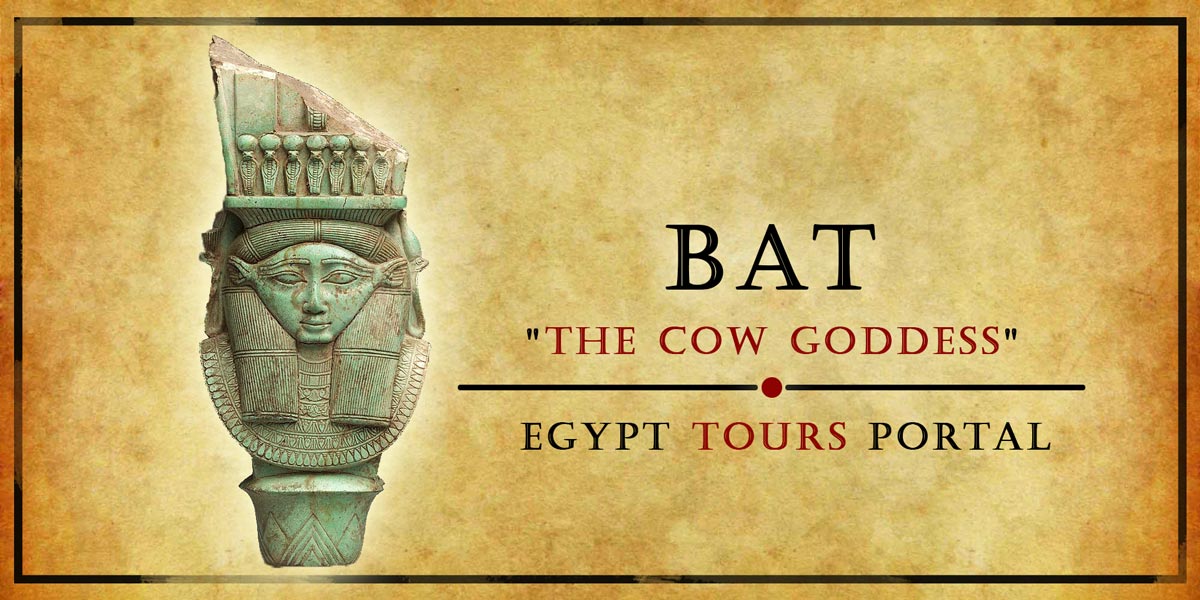
Bat is a cow goddess who was an ancient Egyptian deity who was worshiped as early as the Predynastic period. She was depicted as a human female with the ears or horns of a cow, sometimes holding a sistrum, a musical instrument associated with joy and celebration. She was also linked to the Eye of Ra, a powerful symbol of protection and authority. Bat was primarily a goddess of fertility, music, and the cosmos. She was often merged with Hathor, another cow-headed Egyptian goddess, and sometimes considered to be her mother or twin sister. Bat's cult center was located at Hu, near the modern town of Al Minya. There, she was honored with an annual festival that involved processions, offerings, and jubilation. Bat's name means "Soul" or "Spirit" in the ancient Egyptian language, and she may have been seen as the personification of the soul of every living being.
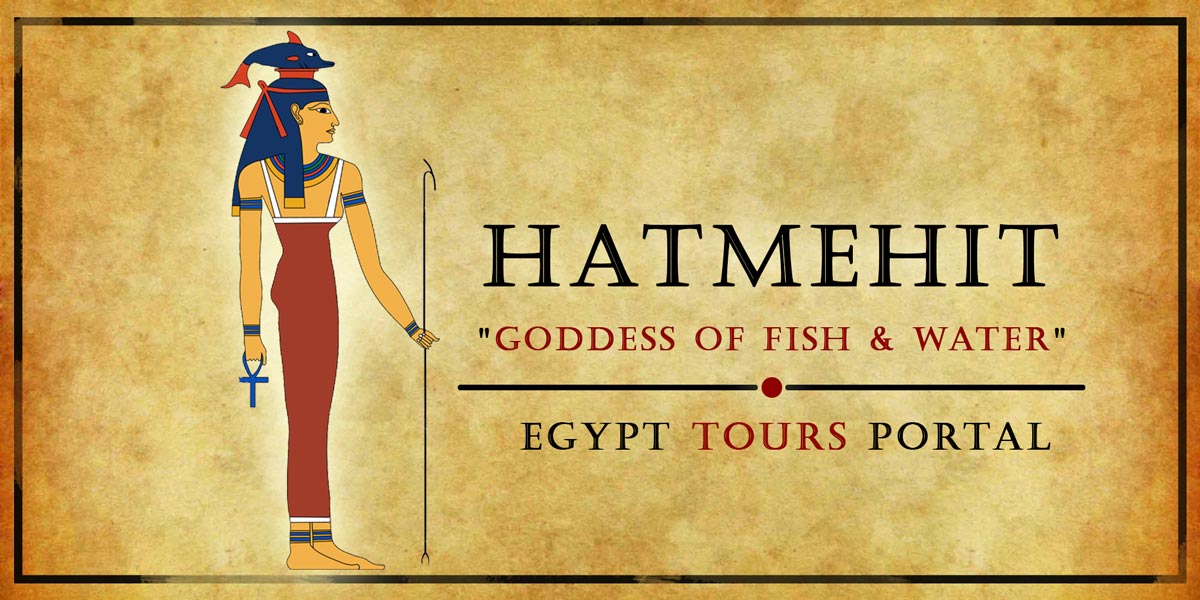
Hatmehit was an ancient Egyptian goddess of fish and water, who was mainly worshipped in the city of Mendes in the Nile Delta. Her name means "She who is in front of the fishes" or "Foremost of the fish". She was originally a personification of the Nile River, which was seen as the source of life and fertility. Hatmehit was depicted as a fish, a dolphin, or a woman with a fish emblem or crown on her head. She was sometimes associated with other goddesses, such as Isis, Hathor, and Nephthys. She remained popular as an amulet in the Late Period.
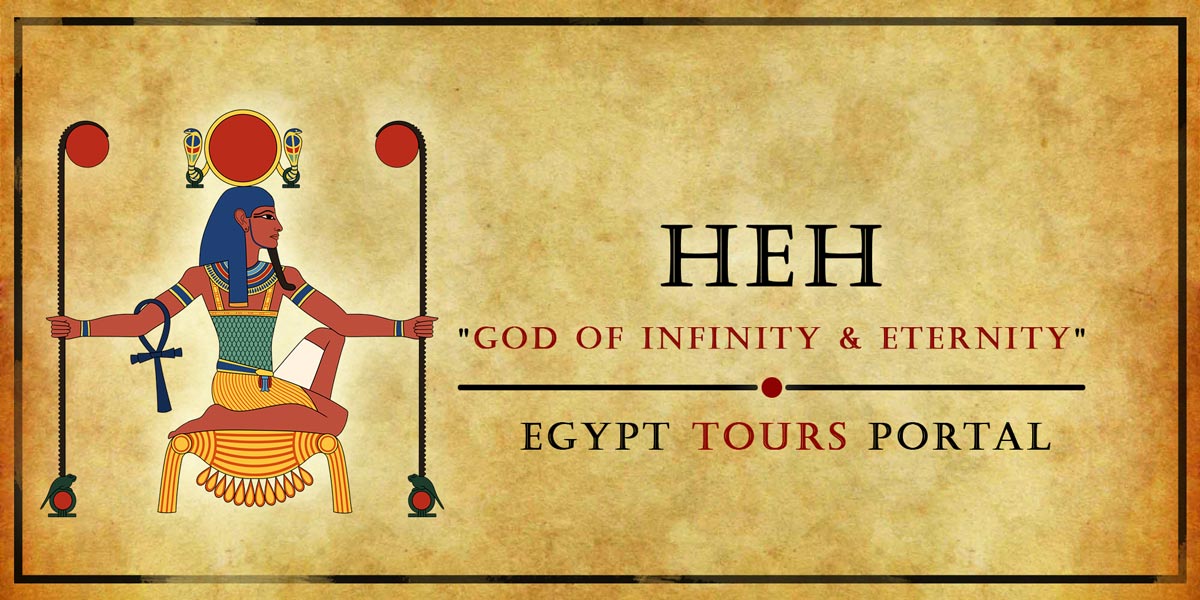
Heh was an ancient Egyptian deity who personified infinity and eternity. He was depicted as a frog-headed man holding a palm branch in each hand, symbolizing the years. He was also shown as kneeling on a platform with his arms raised, supporting the sky. Heh was part of the Ogdoad, a group of eight primordial Egyptian gods who represented the chaos before creation. He was paired with Hauhet, the female aspect of infinity. Together, they formed one of the four couples that emerged from the waters of Nun, the primordial ocean. Heh and Hauhet were associated with the direction of the south and the element of air. They were also linked to the concept of space and time, as they represented the endlessness of both dimensions. Heh and Hauhet were sometimes depicted as guarding the sun god Ra's boat during his journey through the underworld. They were also worshipped as protectors of life and longevity, as they were believed to grant many years to the pharaohs and their subjects.
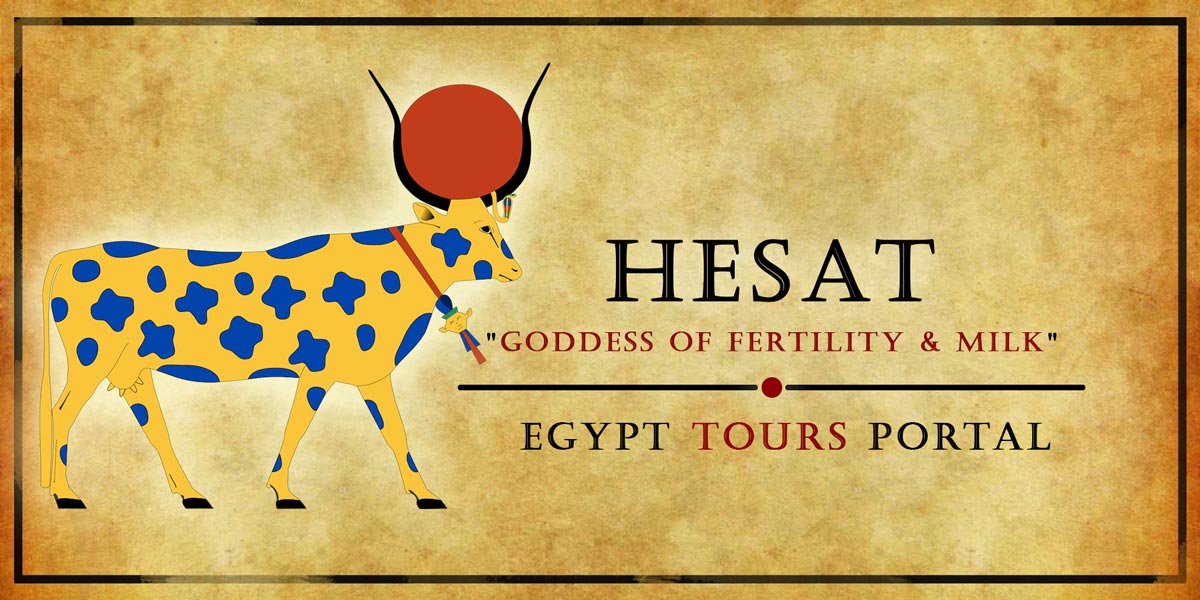
Hesat was an ancient Egyptian goddess associated with fertility, milk, and beer. She was often depicted as a cow or a woman with cow horns. She was sometimes considered to be the wife of Anhur, a war god, and the mother of Ihy, a god of music and joy. She was also linked to Hathor, another cow goddess, and sometimes called her wet nurse. Hesat was believed to provide nourishment and protection to the pharaoh and his people through her milk and beer. She was also involved in funerary rites, as she was said to offer refreshments to the souls of the dead in the afterlife. Her name was associated with a number of goddesses like Hathor, Isis, Apis, and more.
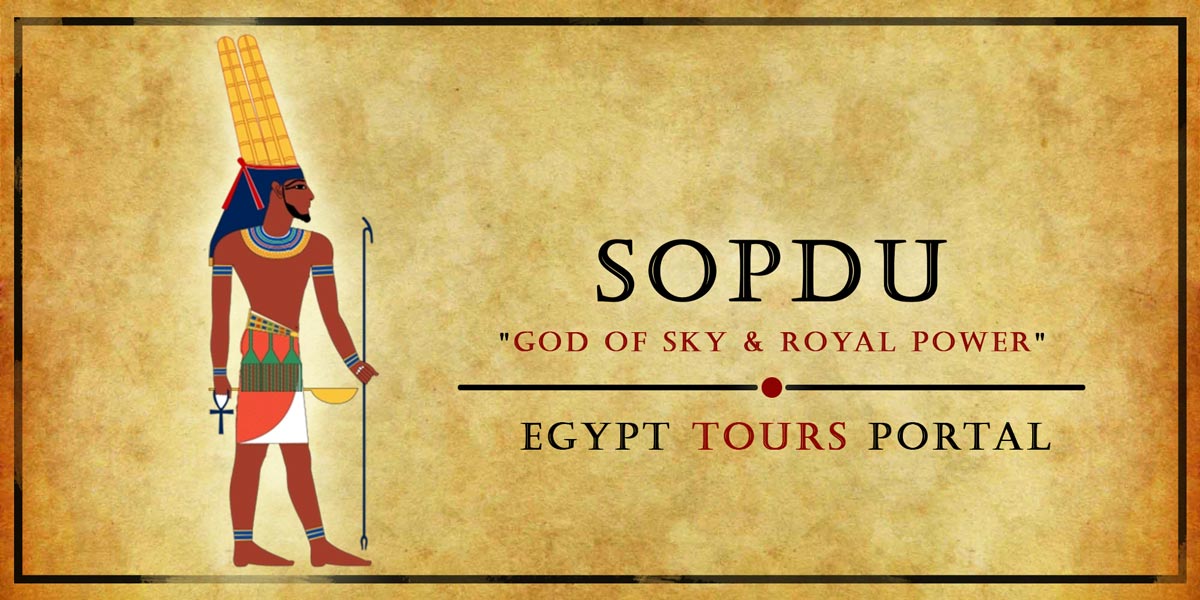
Sopdu was one of the earliest gods in ancient Egyptian mythology. He was associated with the eastern border of Egypt, where the sun rises. He was also seen as the god of the sky, war, hunting, and royal power. He was depicted as a falcon-headed man wearing a white crown with two feathers. He sometimes carried a lance or a bow and arrow. He was often shown alongside Horus, the god of kingship and the sky, who was also represented by a falcon. He was sometimes seen across the stars of Orion and Sirius.
Sopdu "Lord of the East" was considered Horus's son or brother, and he helped him defend Egypt from foreign invaders. Sopdu's importance declined over time, as other gods took over his functions and attributes, and were eventually absorbed into other deities, such as Horus and Montu. He was worshipped mainly in the eastern Delta region, with several temples and shrines. His cult center was at Saft el-Hinna, near the modern town of Zagazig. He was also revered at other sites along Sinia and the eastern frontier, such as Tell el-Balamun and Pelusium.
Ancient Egyptian history has marvelous stories to discover and share; so explore the breathtaking archaeological destinations across this majestic civilization by immersing yourself in an unforgettable journey to Egypt. Check our Egypt vacations packages and choose your trip onboard one of our magical Nile river cruises and cast your eyes on the stunning artifacts of Egypt.
Private 4 Days Cairo Tour Packages for UAE Travelers 4 days Cairo Egypt Tour package...
Tour Location: Cairo – Giza...
5 Days Cairo and Alexandria Tour Package For UAE Travelers 5 days Cairo and Alexandr...
Tour Location: Cairo/Giza/Alexandria...
6 Days Cairo, Luxor & Aswan Tour Package For UAE Travelers 6 days Cairo, Luxor &...
Tour Location: Cairo/Giza/Aswan/Luxor...
Amazing 7 Days Cairo and Hurghada Holiday for UAE Travelers 7 Days Cairo & Hurgh...
Tour Location: Cairo – Giza – Hurgh...









